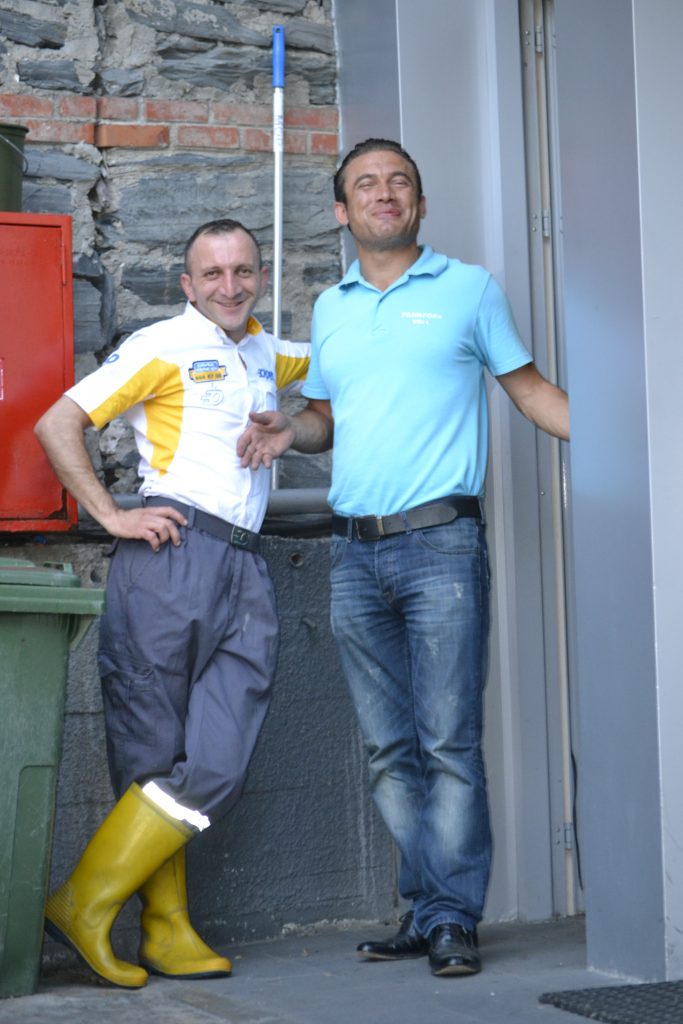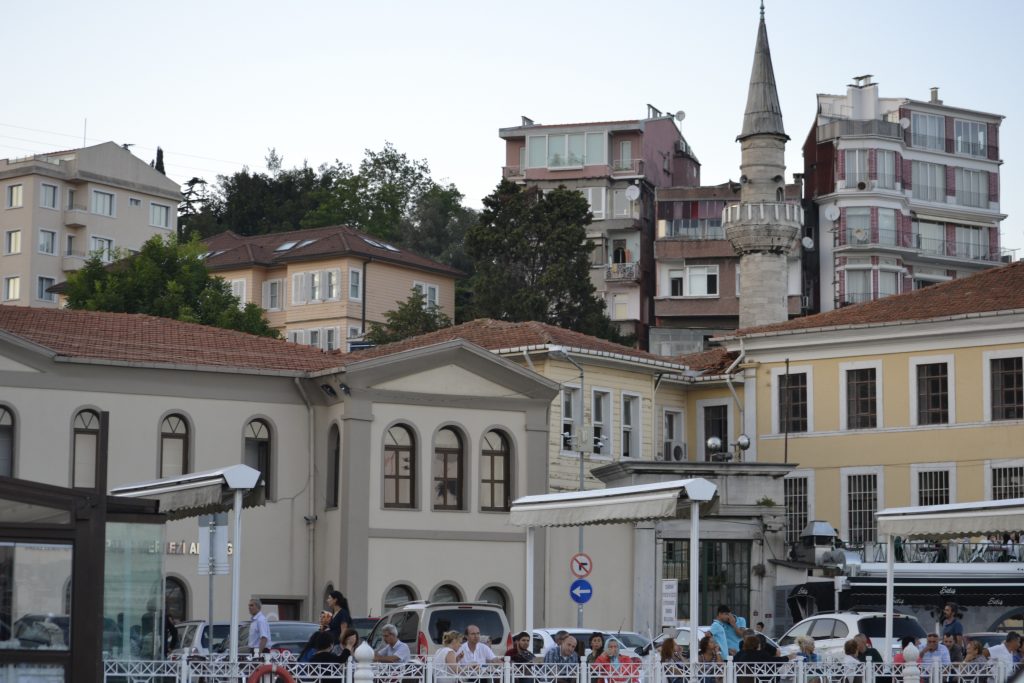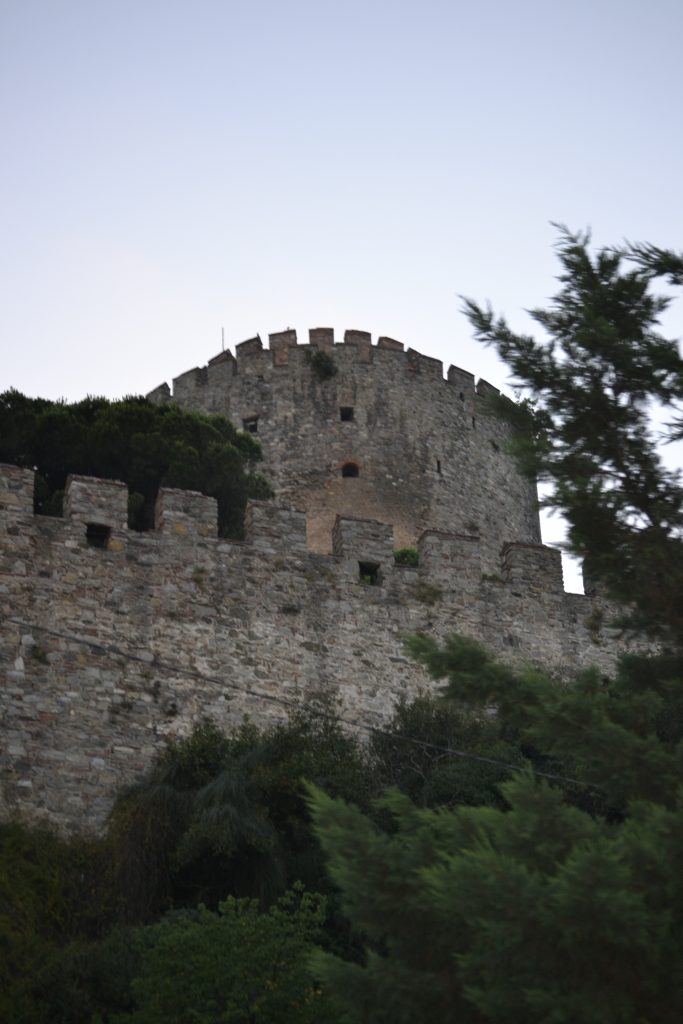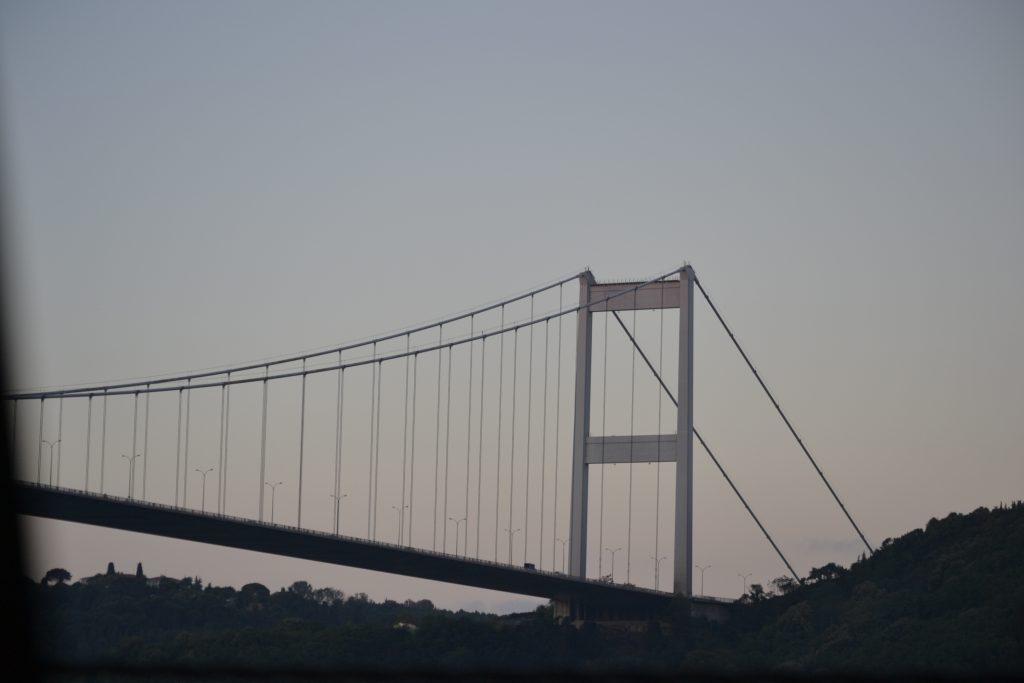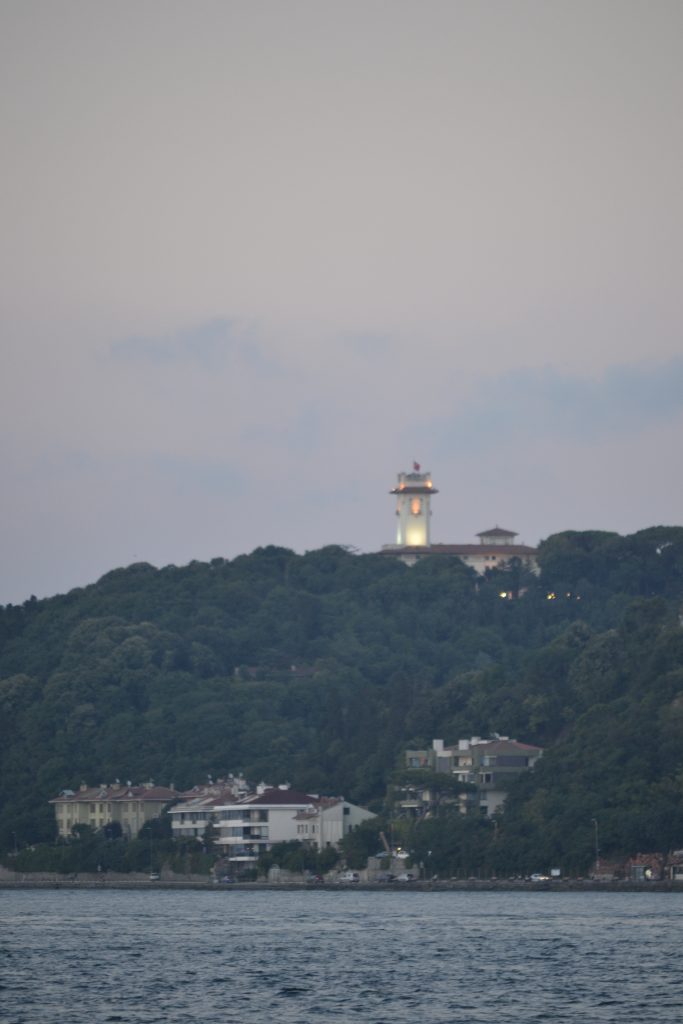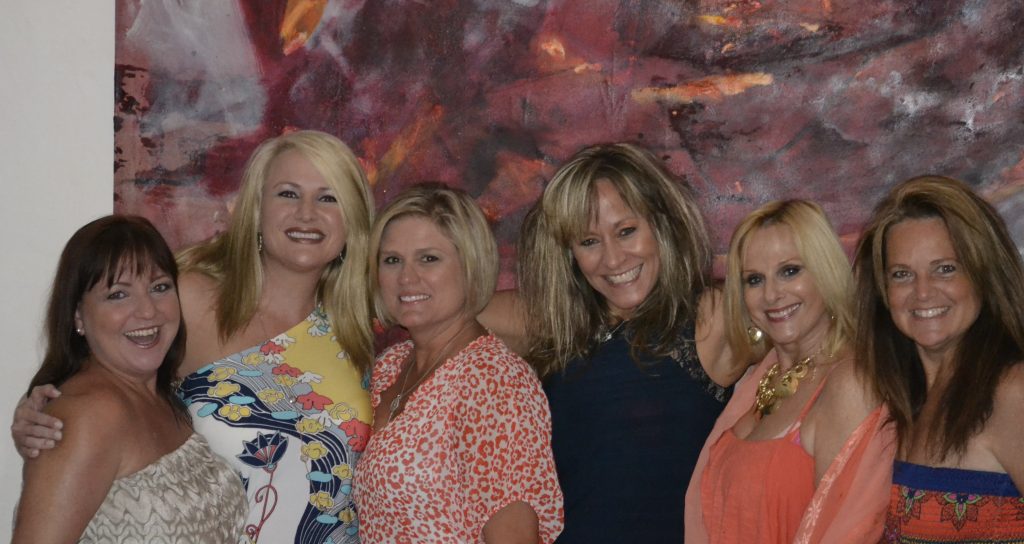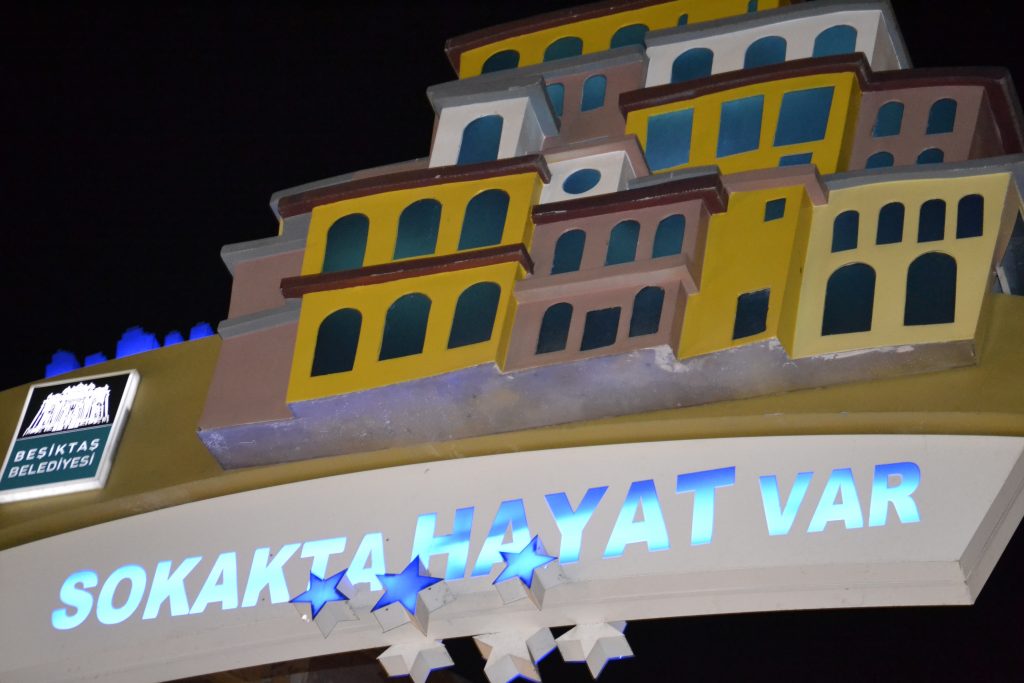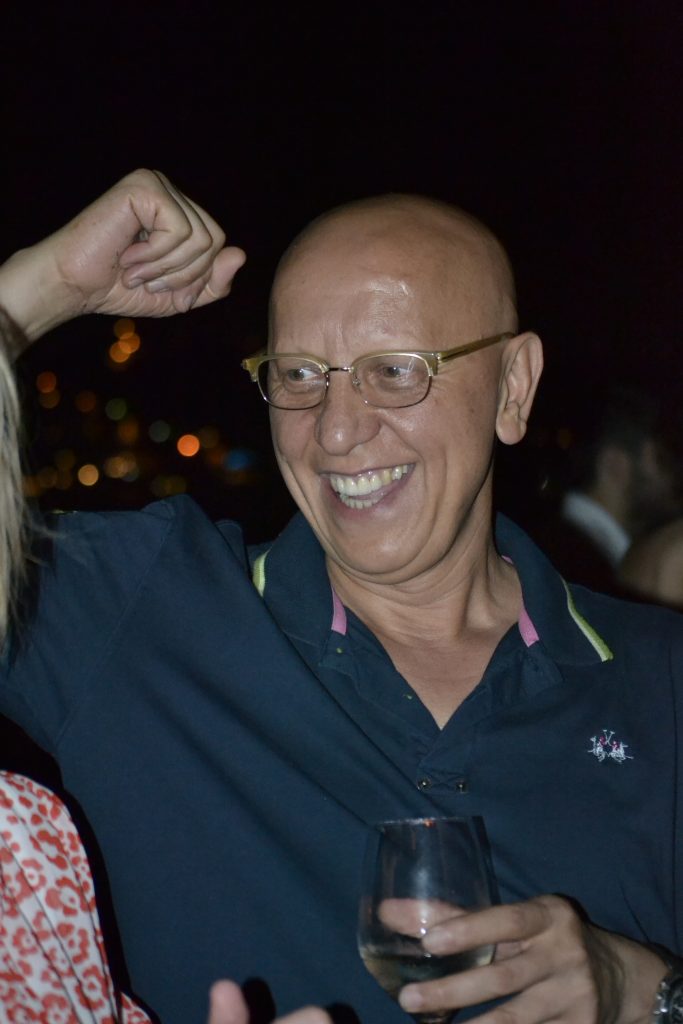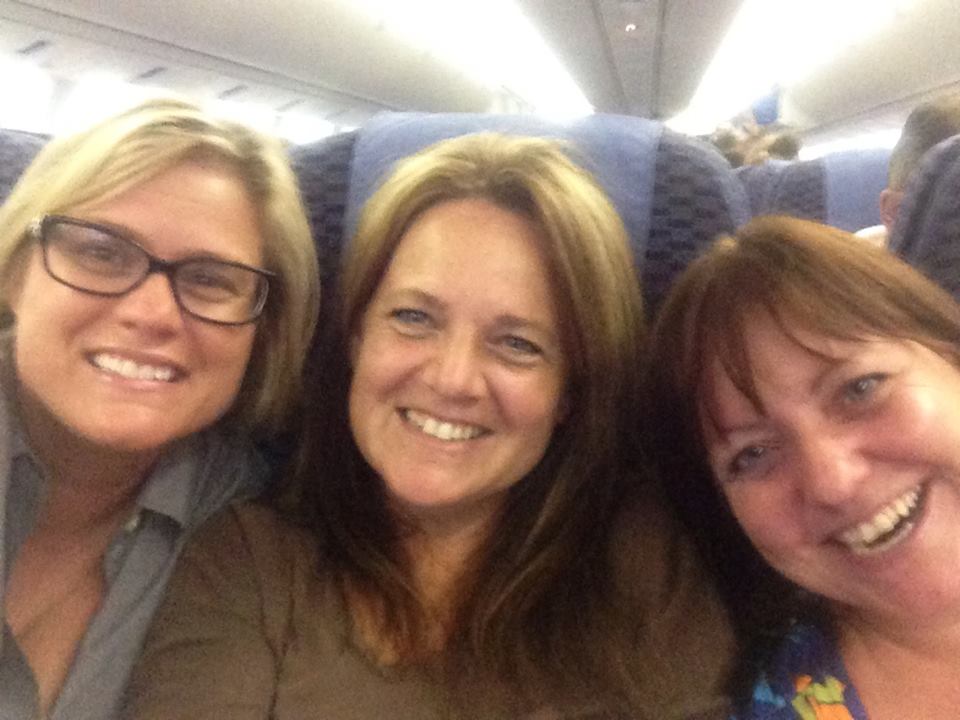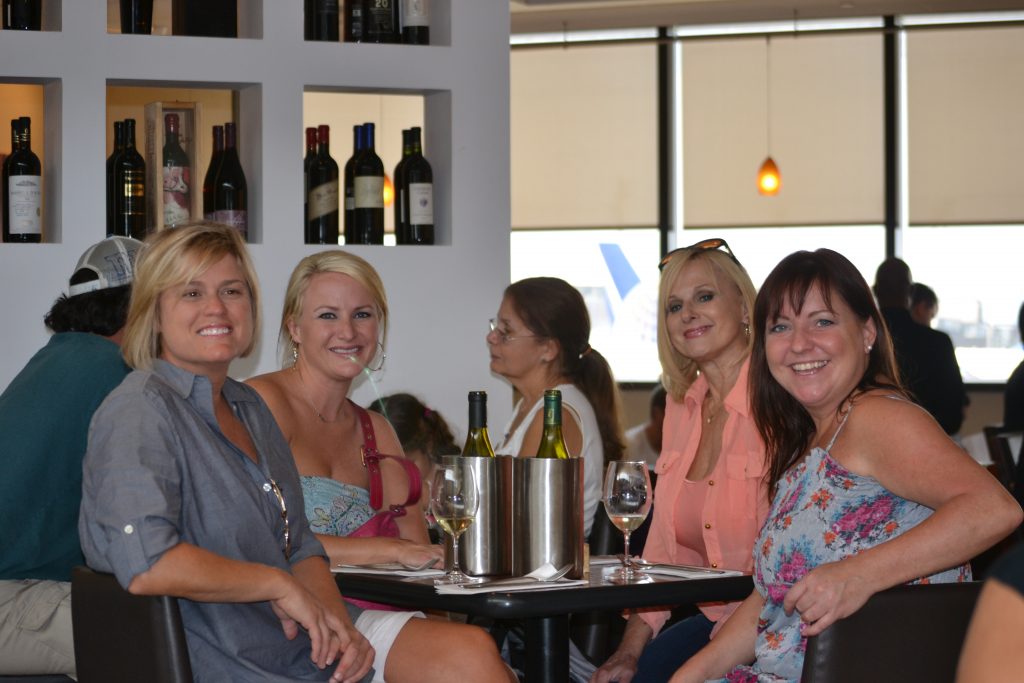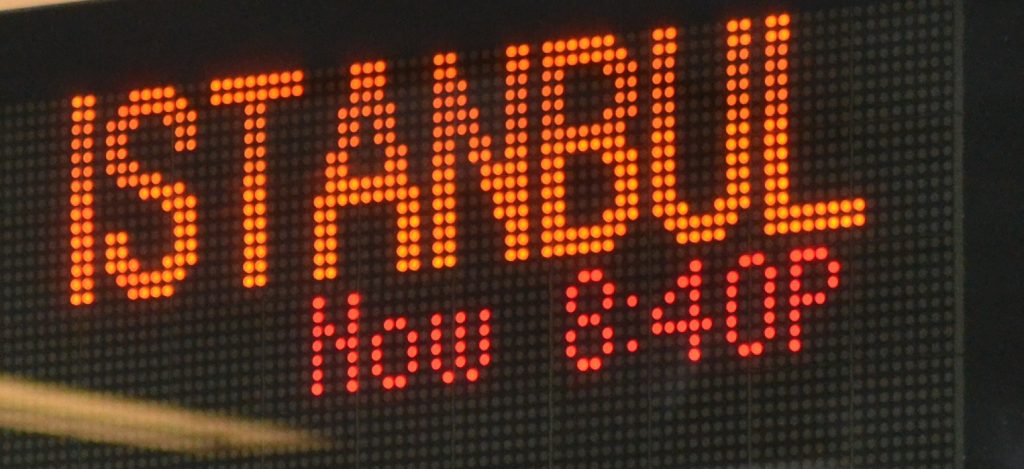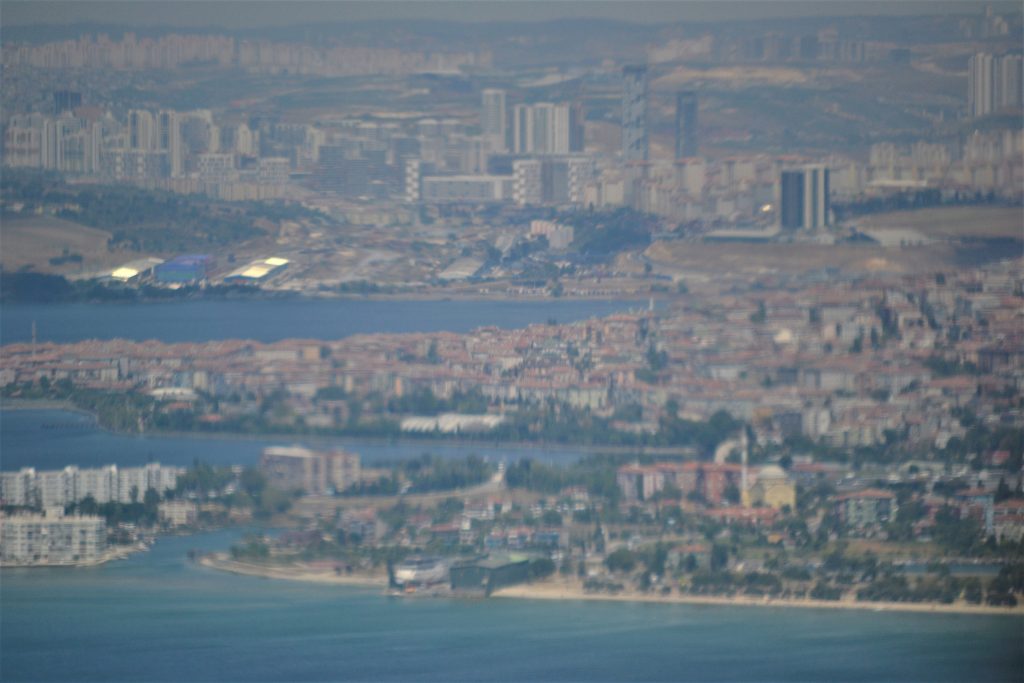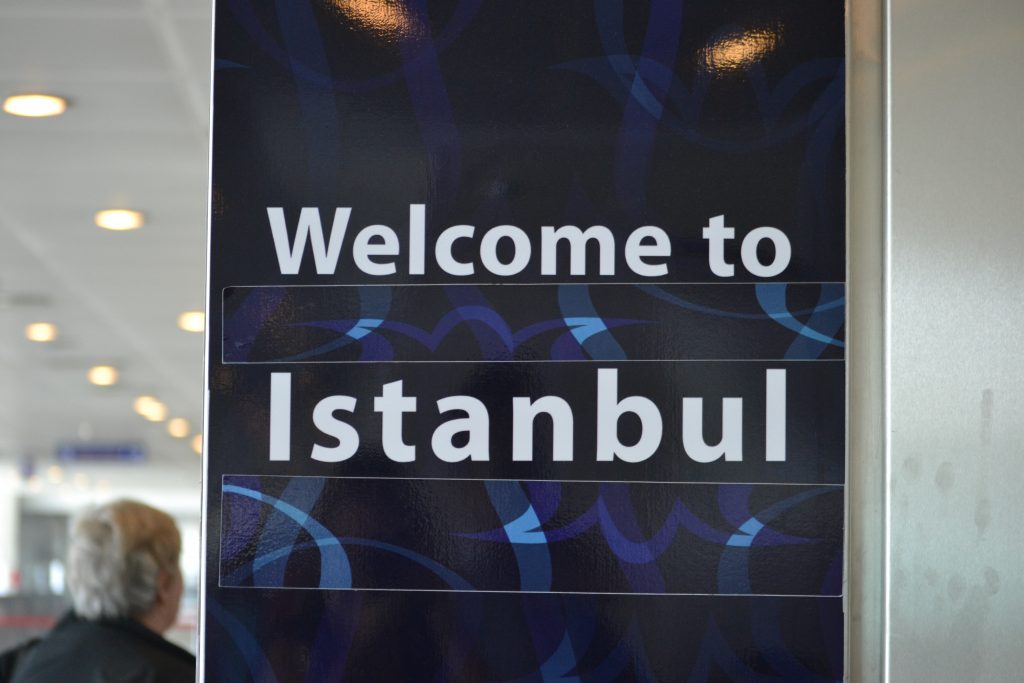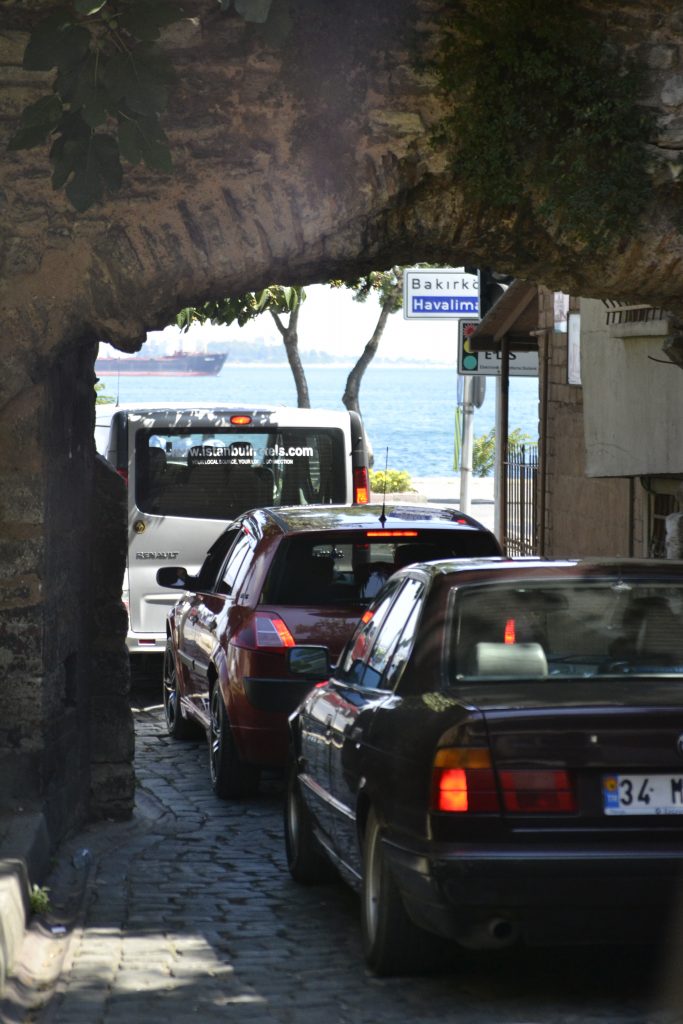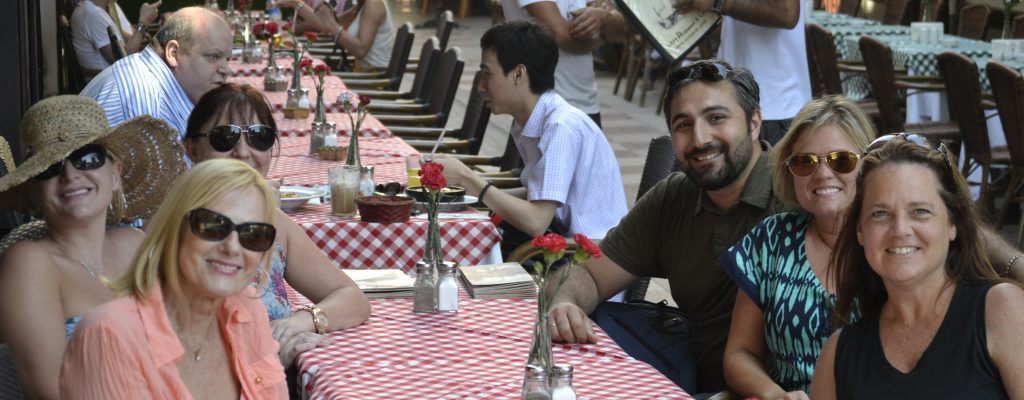Watching the Olympic Games as I child, I always admired watching the gymnasts during the Summer Games and favored the ice skating competition in the winter. As a family, we would cheer on our favorite contenders and anxiously await the results of the victor, much similar to the ancient games that first took place in the city of Olympia, Greece.
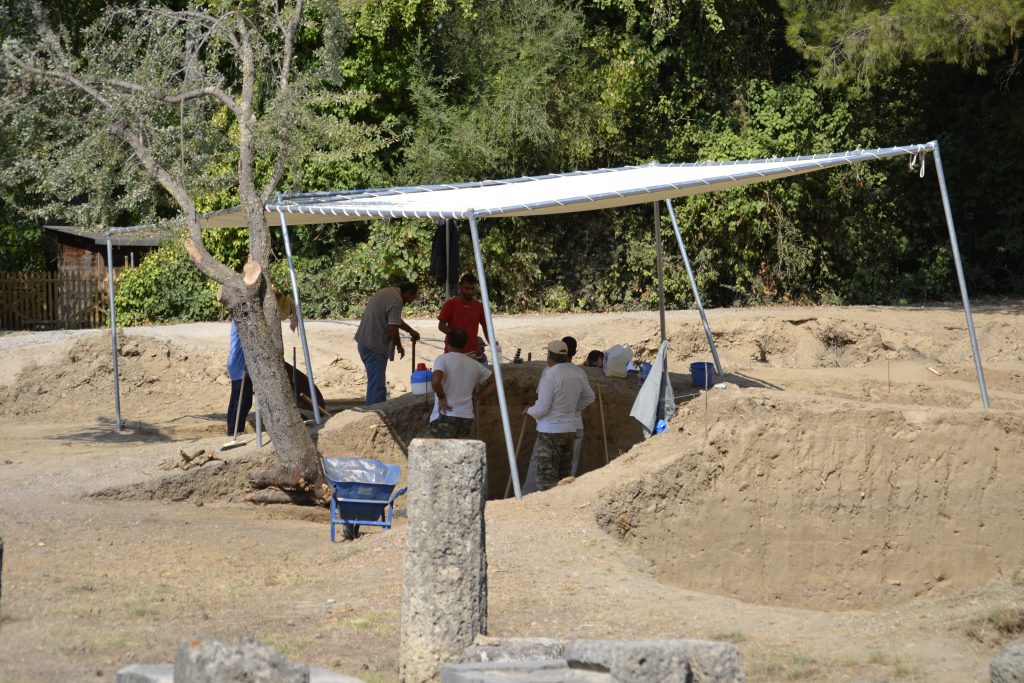
Olympia is a popular day trip from the port of Katakalon, a cruise ship port in the Peloponnese district of Greece. Entering the location of the original Olympic Games, we had the opportunity to watch archaeologists continue their work in uncovering the gymnasium site of these ancient ruins.
It is amazing to consider that the first Olympic Games began in 776 BC during the Bronze Age as a religious festival in honor of the Greek mythical god, Zeus. Ironically, just off into the distance is Kronos Hill, the location which the Greeks consider to be the birthplace of Zeus. According to the Greek mythology, Zeus is the god of the sky, lightning and thunder, law, order and justice.
The site of Olympia is a compound with numerous buildings in association with the competitive games. We strolled past the Prytaneion, the building for which the presiding officers of the game would welcome the competitors. Athletes from miles away would journey to this location to compete, which was an honor not only to themselves, but to the villages for which they were representing.
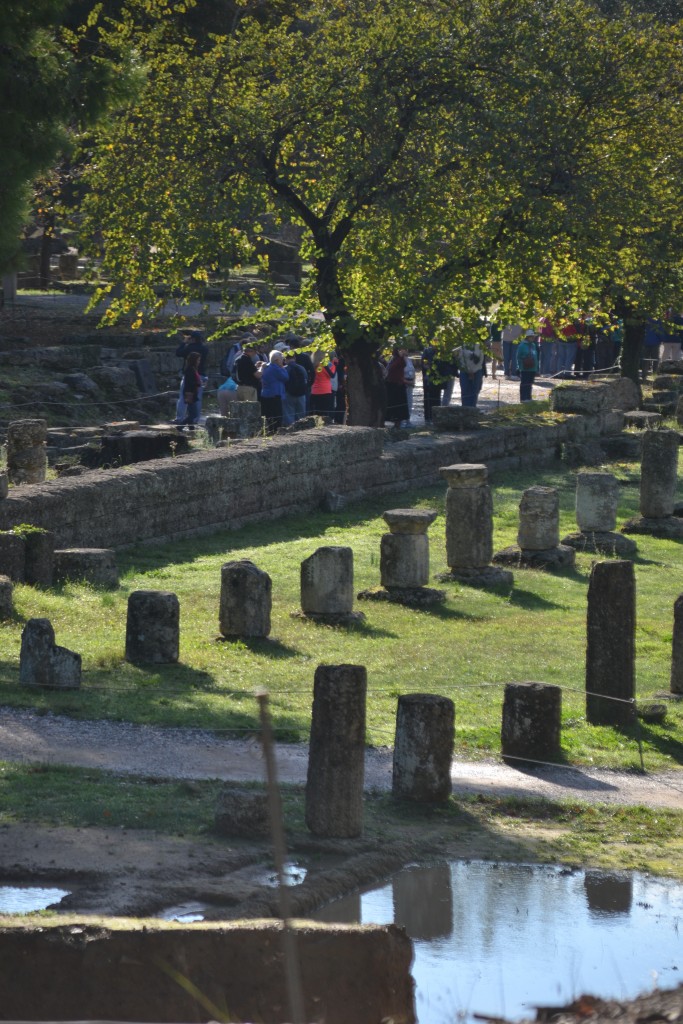
Because the Olympic Games took place over several days, the athletes would arrive weeks prior to the competition for training. It is for this reason that the Gymnasium was built as temporary lodging for the competitors until after the games were completed.
A dedicated training area and separate living quarters from all other athletes were built for the wrestlers, boxers and long jumpers called the Palaistra. It was here were the pankratiasts would train and was an event where these “all In” fighters would fight to the death, a popular event of the Olympics and similar to the Ultimate Fighting Championships of today.
Our next stop was a visit to Pheidias’ workshop and it was one of my favorite locations on the site. Phieidias was the great artist known for building the 40 foot gold statue of Zeus, housed in the temple’s inner room. A Byzantine church was built over this site, but when excavations were conducted in this location, there was a cup that was excavated with the notation, “I belong to Pheidias”. The archaeological items from his workshop are located in the museum, a short walking distance from the ancient ruins.
From Pheidias’ workshop we could see an enormous structure with one column which has been identified as the temple to Zeus. He was the king of all Greek gods as well as the patron of the Olympic Games. It was the largest of the Greek temples during its time, with 34 colossal Doric columns, measuring 6 stories high. A replica of the temple and photo of the Statue of Zeus is located in the archaeological museum.
Throughout the Olympic site there were various pedestals for which statues were displayed. A lone standing pillar measuring 29 feet tall once supported the goddess of Nike, who represents victory. The column remains but the statue was moved to the archaeological museum to protect it from the environment.
Winning the Olympic Games was a big deal in Greece and winning three times elevated the athletes to god status. Various columns were erected to display statues of these newly appointed gods. The winners would also be showered with gifts back home and songs would be written about them.
Unfortunately for the losers, public humiliation was just as intense. It was said that many would go into hiding to escape from the embarrassment of facing their friends, family and fellow countrymen.
What I found interesting at Olympia was, in addition to honoring the winners of the games, the cheaters were publicly called-out with their own displays. There are a total of sixteen “Bases of Zanes” which were inscribed with the name of the cheater and their offense. It was intended to remain here for all to see for generations and was a way to humiliate the families as well as the offender. It was said that people would spit on the stones as they entered the stadium. Some of the offenses included the use of forbidden herbs, drinking of animals blood, taking bribes, and quitting the games.
Prior to entering the stadium, there was a terrace where the Row of Treasuries was located. This building housed the expensive offerings that were collected from the spectators of the Olympic Games and the currency of these items were used to support the maintenance of the grounds and for building additional structures.
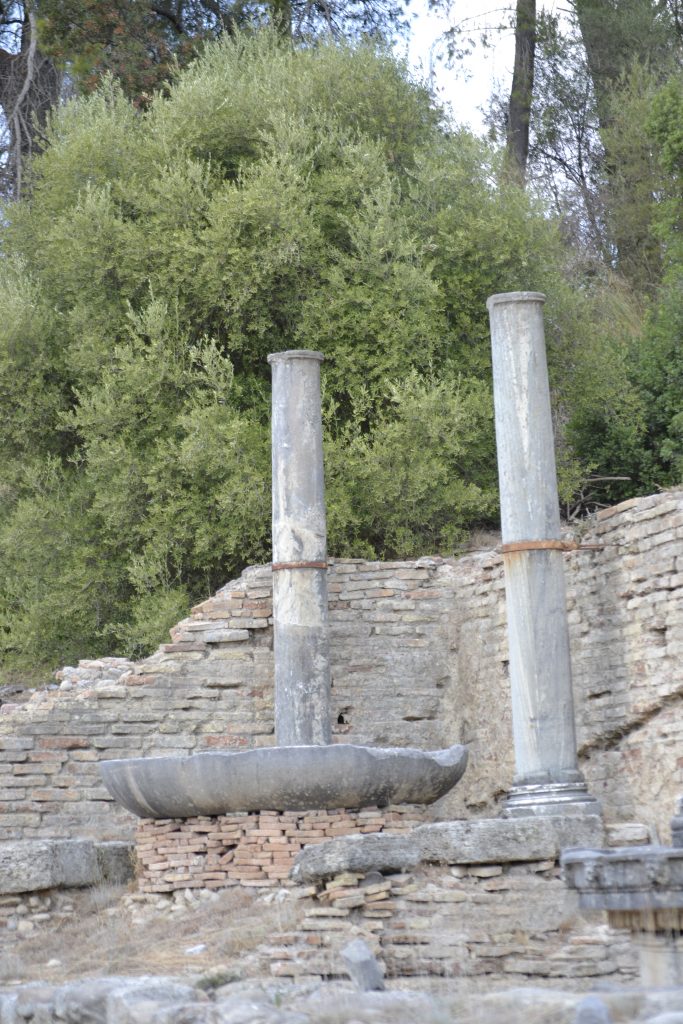
Another feature located up on the hill were the remains of the Nymphaeum. This impressive fountain served as an oasis to the visitors and athletes at the Olympic Games. Inside of the Nymphaeum was a statue of a bull, which can be viewed at the Olympia Archaeological Museum.
Soon, we found ourselves nearing the location where the Olympic foot races took place and we passed through the archway where many talented athletes entered before us. The 100 foot tunnel leading to the stadium (or stadion) was called the Krypte (a vaulted corridor), and was the official entrance for both the judges as well as the athletes. The recesses along the side of the tunnel served as a type of “locker” for the athletes. The Krypte was also known as the “secret entrance”.
Walking into the stadium was an exhilarating feeling as I approached the starting line. Flanking the 640 foot clay track are two hills which could seat over 40,000 people to watch the athletes compete in their respective sport. There is a small stonelike structure to the left of the starting line, about halfway down the field. It was here that the goddess Demeter Chamyne would sit on her altar as the only woman permitted to attend the competition. On the opposite side of the altar was the Judge’s Box. It was the designated seating area for elected local nobles who acted as referees (Hellanodikai) during the Games. At the starting line, there are 20 blocks made of white marble, each with two grooves for the feet of the athletes preparing for their race. It is a fun exercise for visitors to stand on their mark, get set and go, running downfield towards the end of the track.
There were several structures that had played an important role in the festivities of the Olympic Games over the years. One of these was the Altar of Hera. Not much remains of the Altar, but it functioned as the location of the ceremonial “Lighting of the Olympic Flame”. It was here where the select, local Greek women would commence the celebration dressed as priestesses, performing ritualistic dances in honor of the gods. Once the torch had been lit, the light would begin its long trek from Olympia ending its journey in the city that will host the Olympic Games. This ceremony signifies the official start of the contemporary Olympic Games and is televised months before the athletic competitions begin.
In close vicinity to the altar is the The Temple of Hera which is the oldest structure in the sanctuary. It dates back to 630 BC, with dimensions of 61 feet wide and 164 feet long. Inside of the temple were statues of Hera, the wife of the Greek god Zeus. Impressive artifacts from the temple include a statue of Hermes and the Disk of the Sun, both of which can be seen in the museum.
Sitting among the shaded trees in proximity to the Temple of Hera is the Philippeion, which is said to have been built during the Hellenistic era. The structure was designed as a memorial to Philip the Great, the ruler of Macedonia and father to Alexander the Great, who would one day create one of the largest empires of the ancient world. The circular edifice displayed statues of Philip and his family and was the first building that visitors would see upon entering Olympia.
After our tour we were provided the opportunity to explore the grounds and additional buildings on site. Walking back towards Kronos Hill, I noticed a well preserved structure which was known as the Leonidaion. Named after an affluent Naxian, Leonidas, it served as a guest house for the wealthy spectators as well as the visiting officials. Our scheduled time at leisure was minimal so that we would have the opportunity to visit the treasures that are housed at the Olympia Archaeological Museum. Knowing that this site was well-preserved due to its abandonment in the 4th century BC, I could not wait to see the artifacts. Stay tuned for Part II of my exploration of Olympia, Greece which highlights the amazing relics on display at the museum, uncovered at this spectacular archaeological site.
What is your favorite sport of the winter and summer Olympics? Have you visited the city of Olympia? I would love to hear from you if you would kindly leave a message in the comments section below. Many thanks for reading about my excursion to the site of the original Olympic Games! Wishing you many Happy Travels!
What to See and What to Do:
Ancient Olympia
PC 27 065
Olympia
Telephone: +30 26240 22742
- Admission Fee: 12 Euros from April to October and 6 Euros from November to March.
- Hours: Open from April 1 to October 31. From November 1 to March 31 from 8AM to 3PM.
- Scenic View: Beautiful views of the ancient ruins of Olympia and view of Knossos Hill
- Length of Visit: 1 – 2 hours
- Tips for Your Visit: Arrive early in the day as tours come in during the afternoon. Wear comfortable shoes for walking, bring bottled water and snacks as there are no options available until you enter the Archaeological Museum.
Where to Stay:
Bacchus
Arhaia Pissa 10,
Archea Olimpia , 270, 65
Greece
Telephone: +30 2624 022298
Where to Eat:
Bacchus Tavern
Arhaia Pissa 10,
Archea Olimpia , 270, 65
Greece
Telephone: +30 2624 022298
I ordered a mix of appetizers which included the Dolmadakia (grape leaves stuffed with rice), Tyropitakia (feta cheese wrapped in a puff pastry) and the Rolakia (smoked bacon and cheese wrapped in puff pastry) and a bottle of Malagousia Assyrtiko wine, locally produced in Olympia.
What to Eat:
- Baklava: made with puffed pastry, this dessert has chopped nuts (my favorite is pistachio), and is covered in honey.
- Choriatiki: Greek salad
- Dolmadakia/Dolmades: stuffed grape leaves
- Ellinikos: Greek coffee
- Gyros
- Kataifi: similar to baklava, but rolled
- Moussaka: Greek’s answer to lasagna
- Pastitsio: pasta made with noodles, ground beef and a bechamel sauce
- Retsina Wine: has been made over 2000 years
- Souvlaki: meat on a skewer
- Spanikopita: pastry filled with spinach and cheese
- Tzatziki: a Greek sauce made with yogurt, garlic, olive oil and fresh dill
What to Read:
- Olympia: The Story of the Ancient Games, by Robin Waterfield
- Race Through Time! Kid’s Guide to Olympia, Greece by Penelope Dyan
- The Olympic Games in Ancient Greece – Ancient Olympia and the Olympic Games, by Nicolaos Yalouris
Santorini: Life on a Volcano
Mykonos, Greece: Whitewashed and Wild
The Island of Delos: A Lesson in Greek Mythology
Corfu…the Favorite Vacation Destination for an Empress
Corinth, a Biblical and Historical Perspective
The Archaeological Museum at Olympia
Athens, Greece: A Living Museum
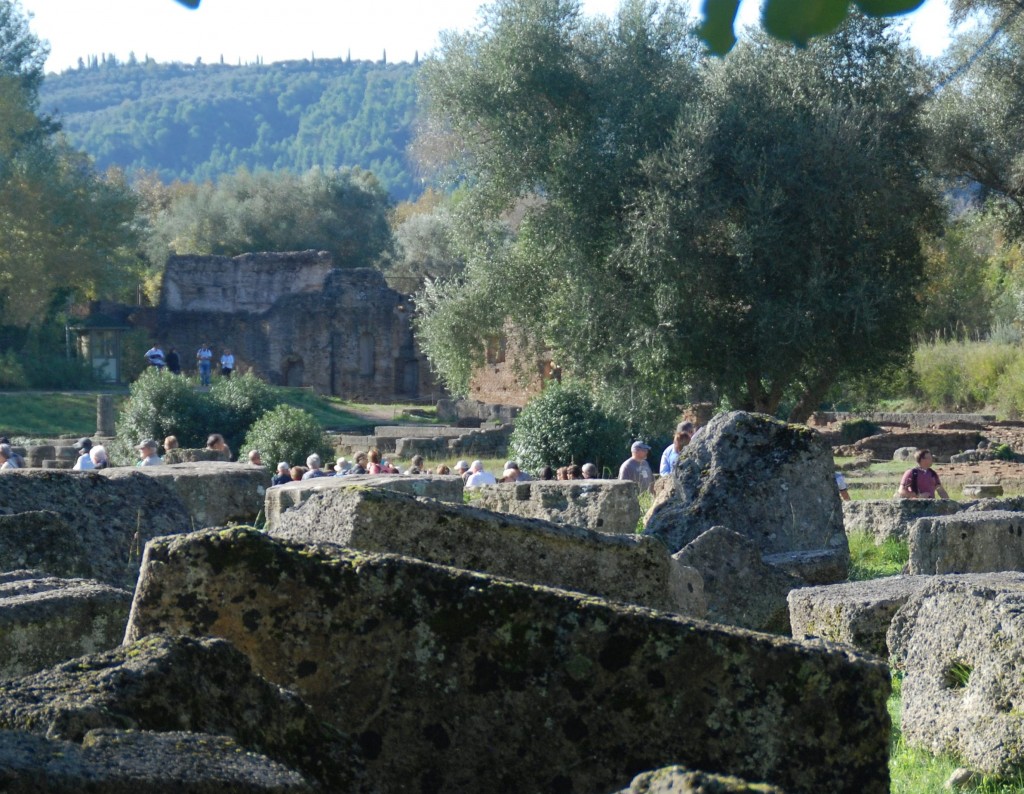
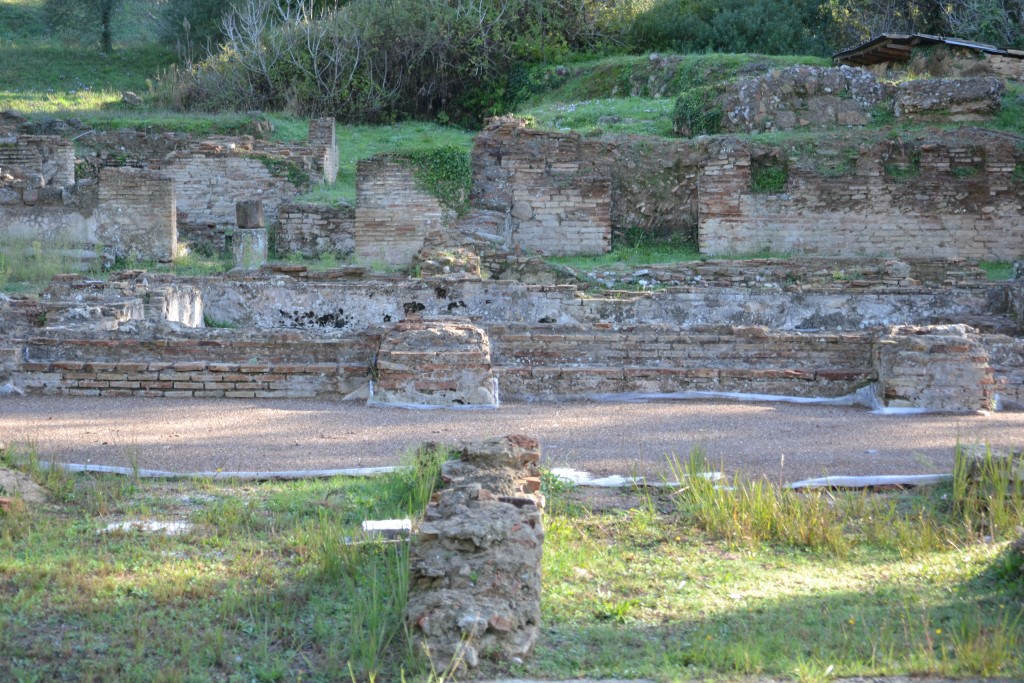
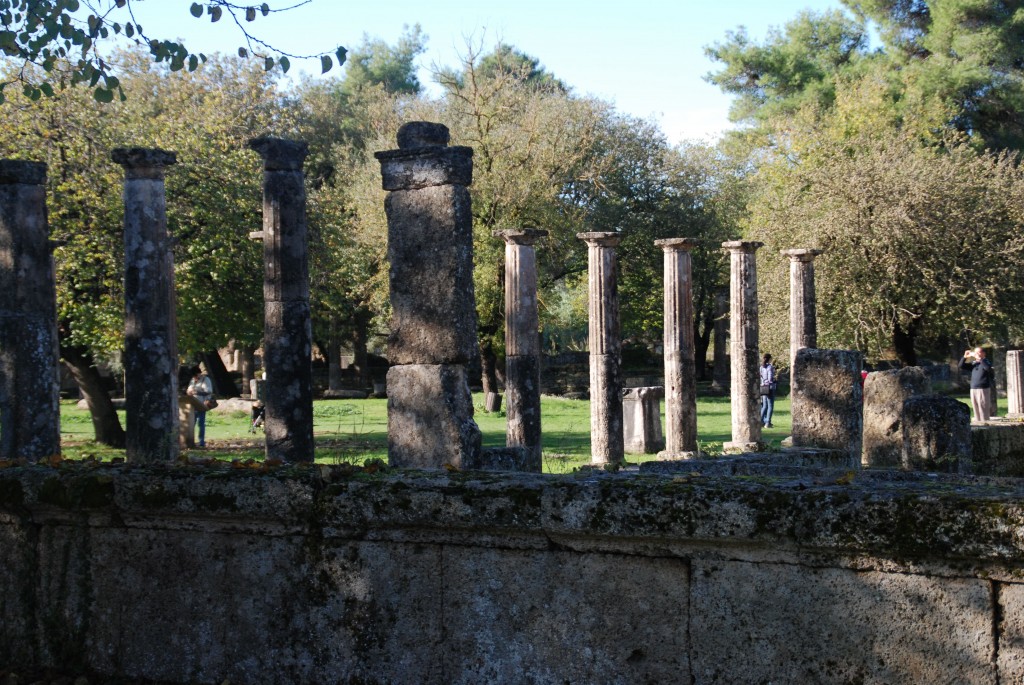
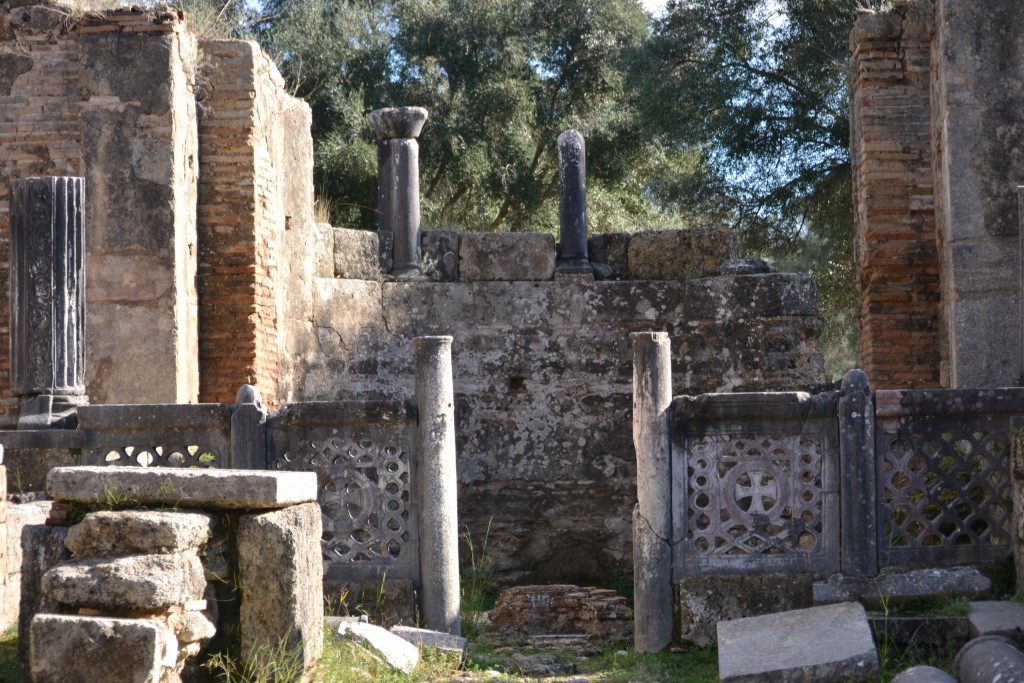
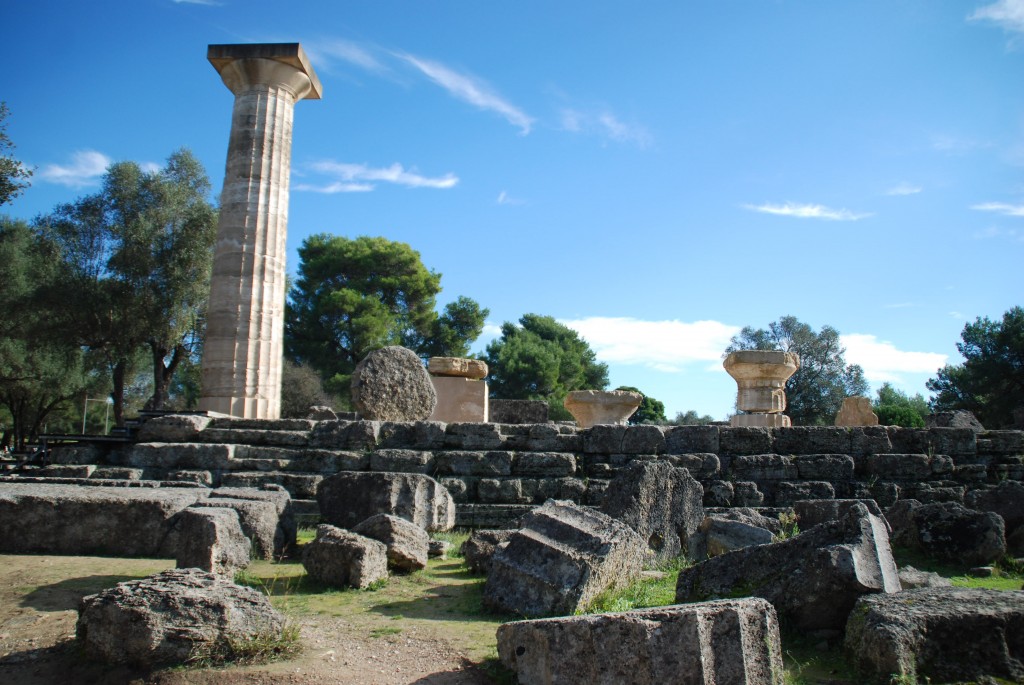
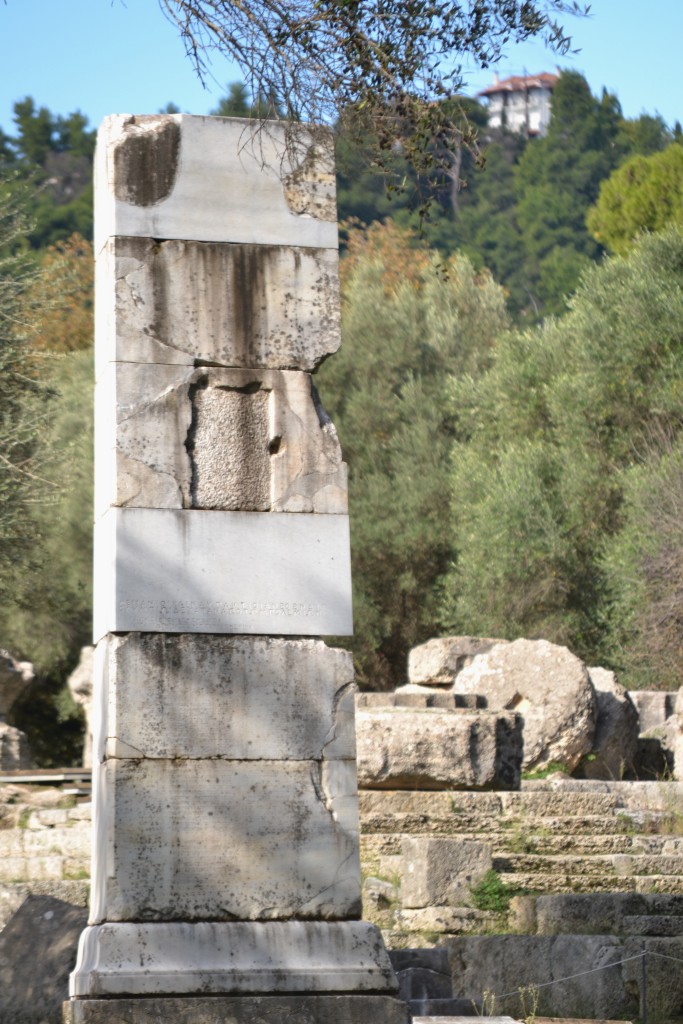
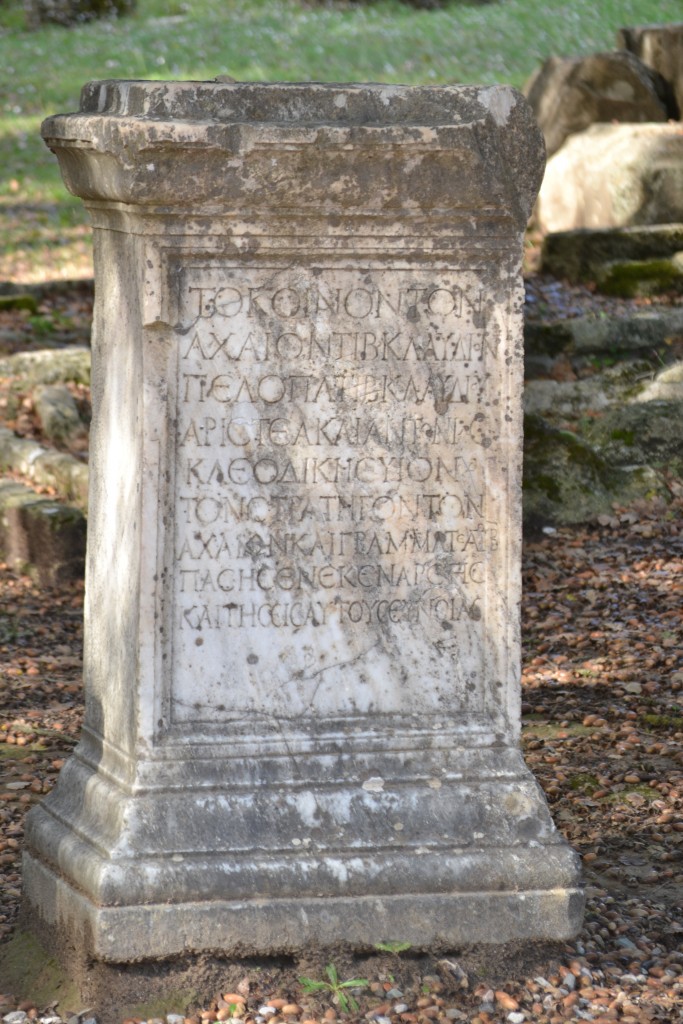
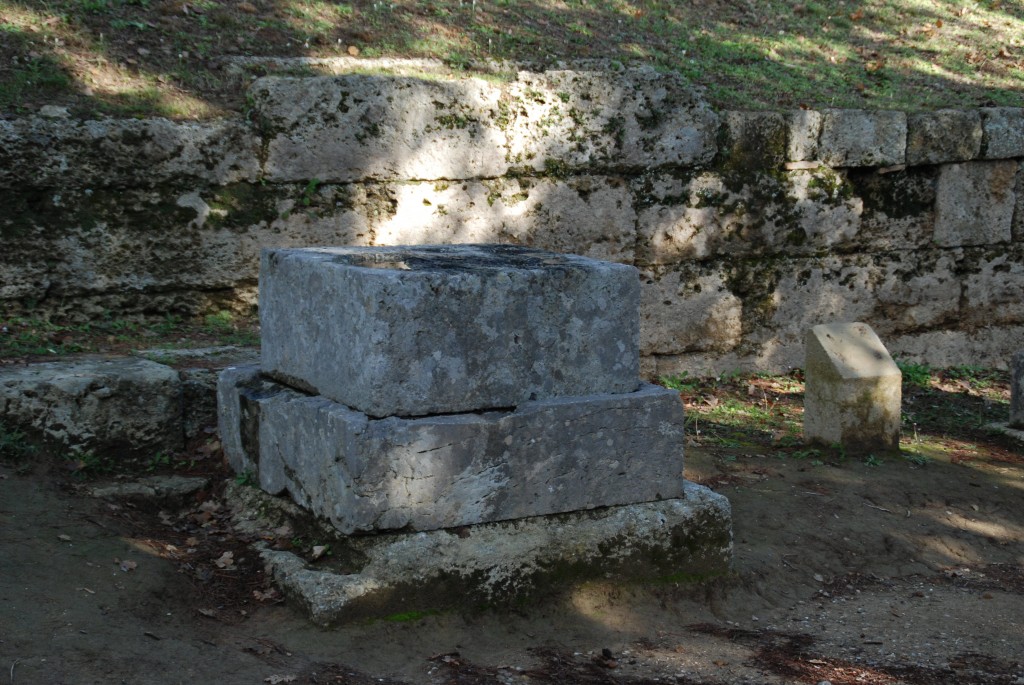
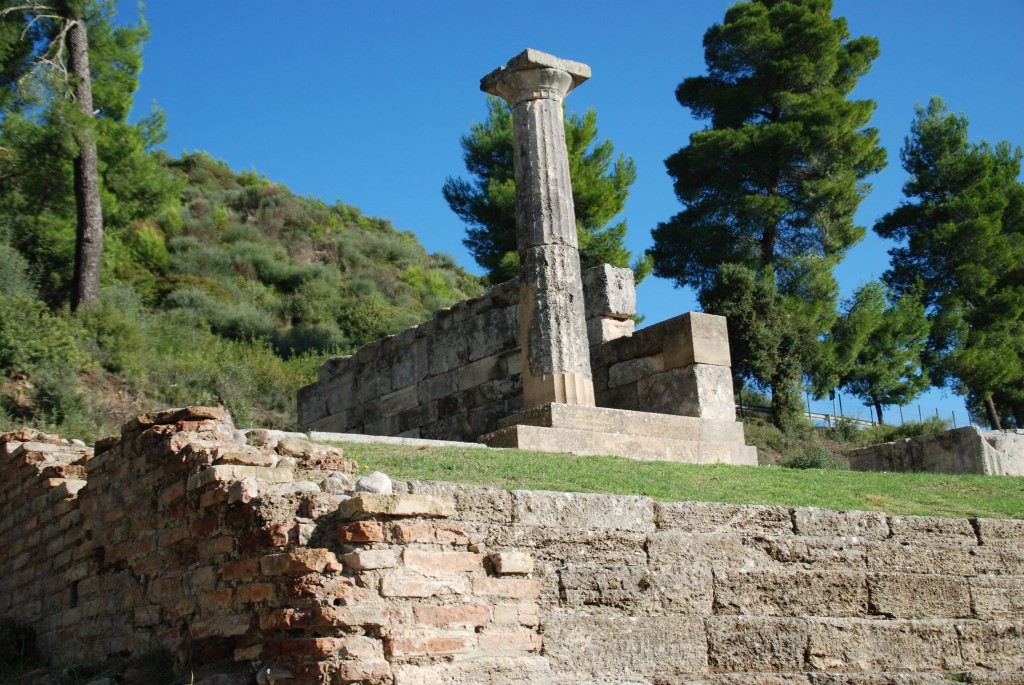
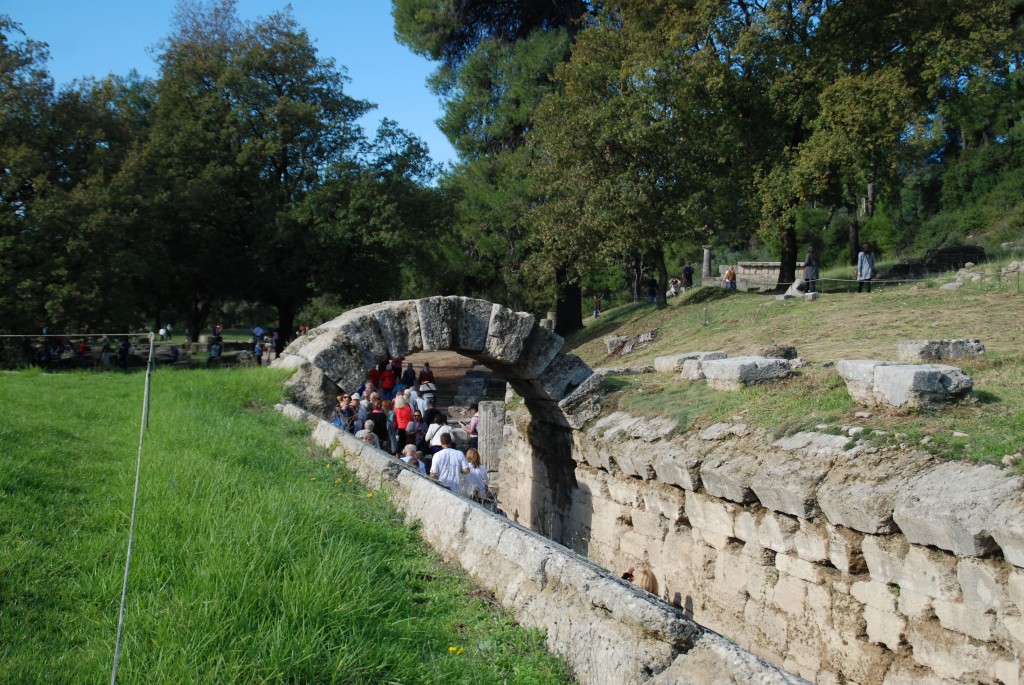
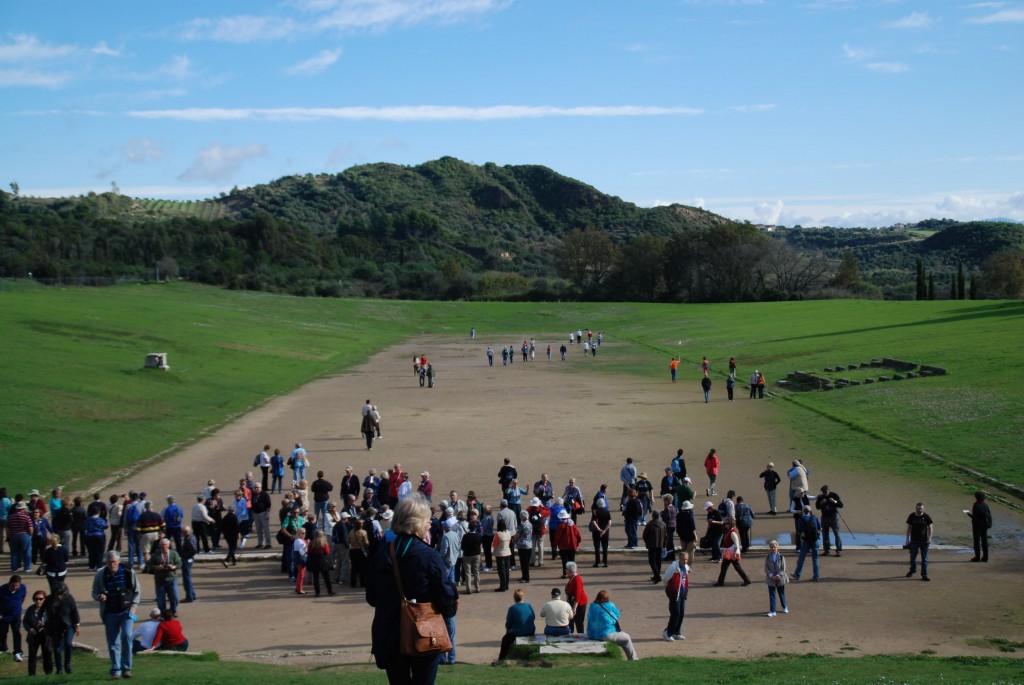
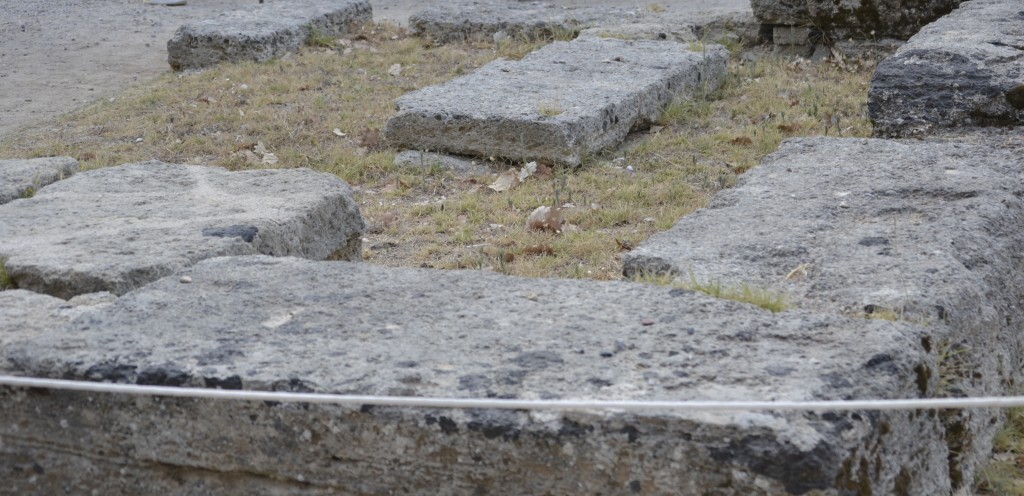
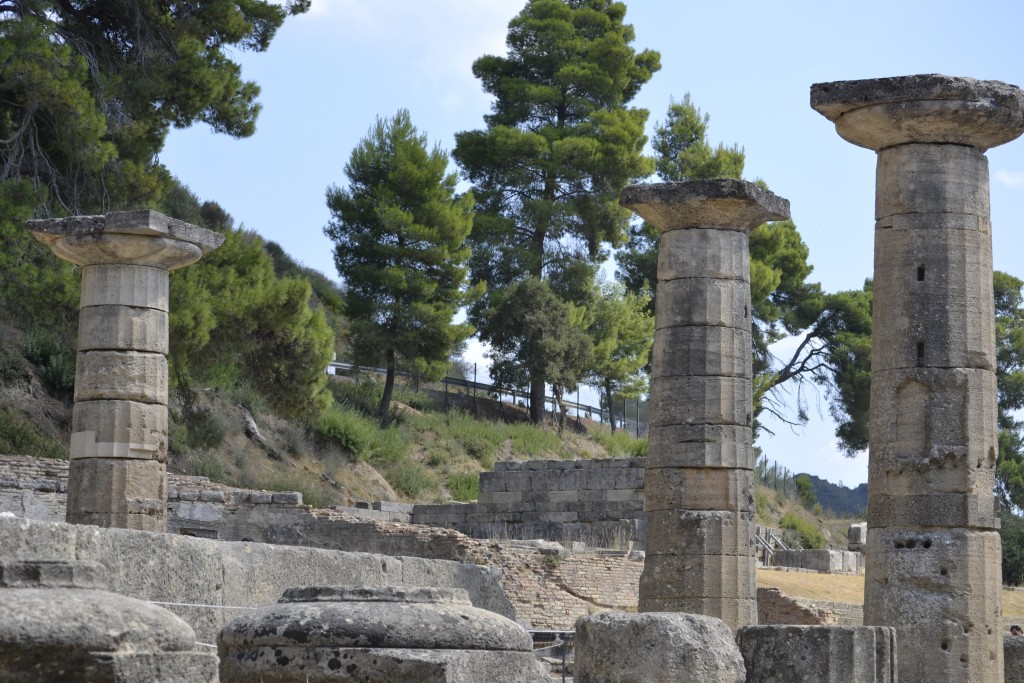
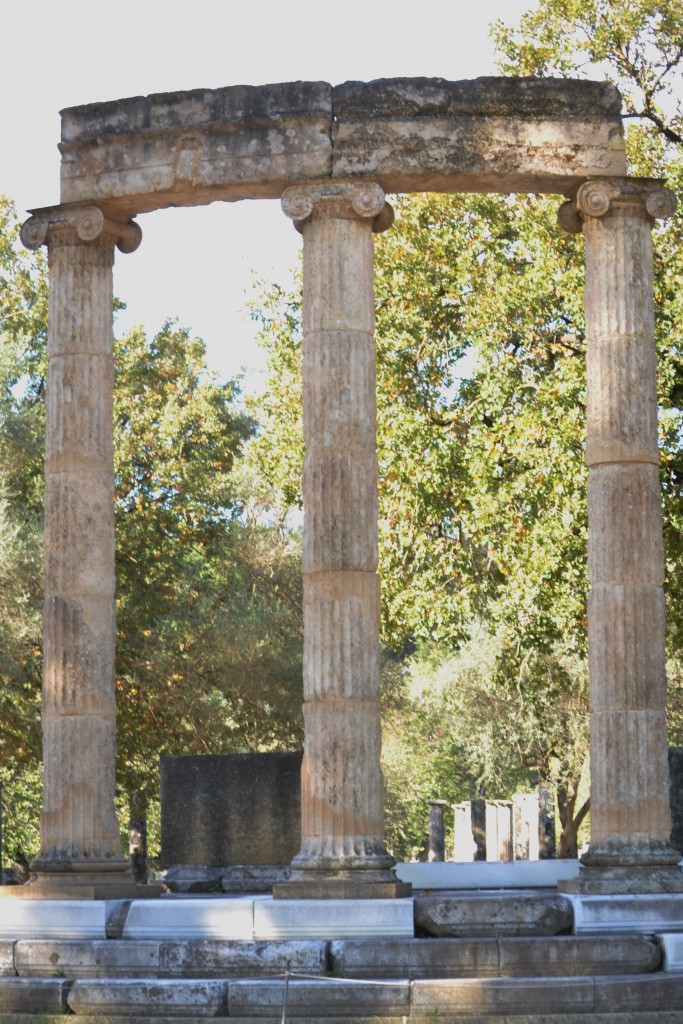
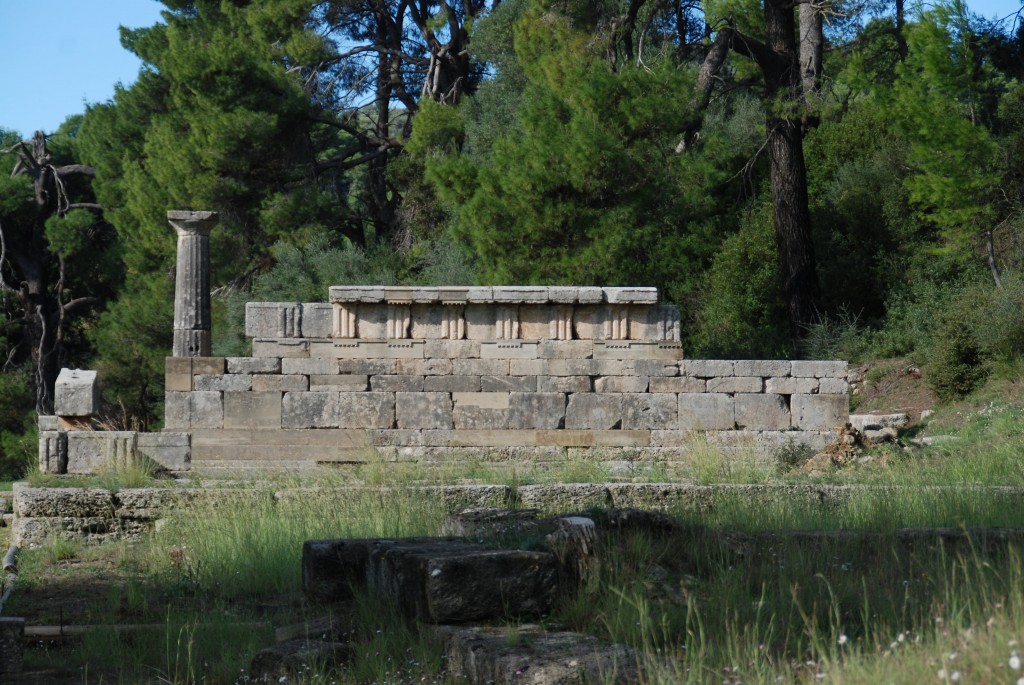
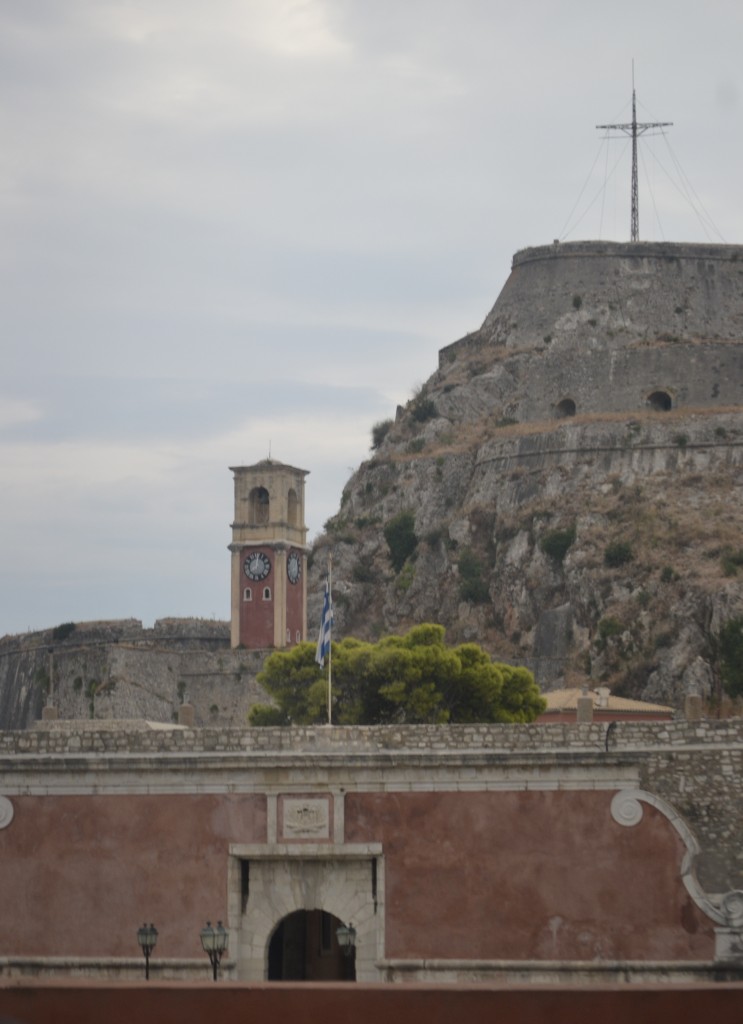
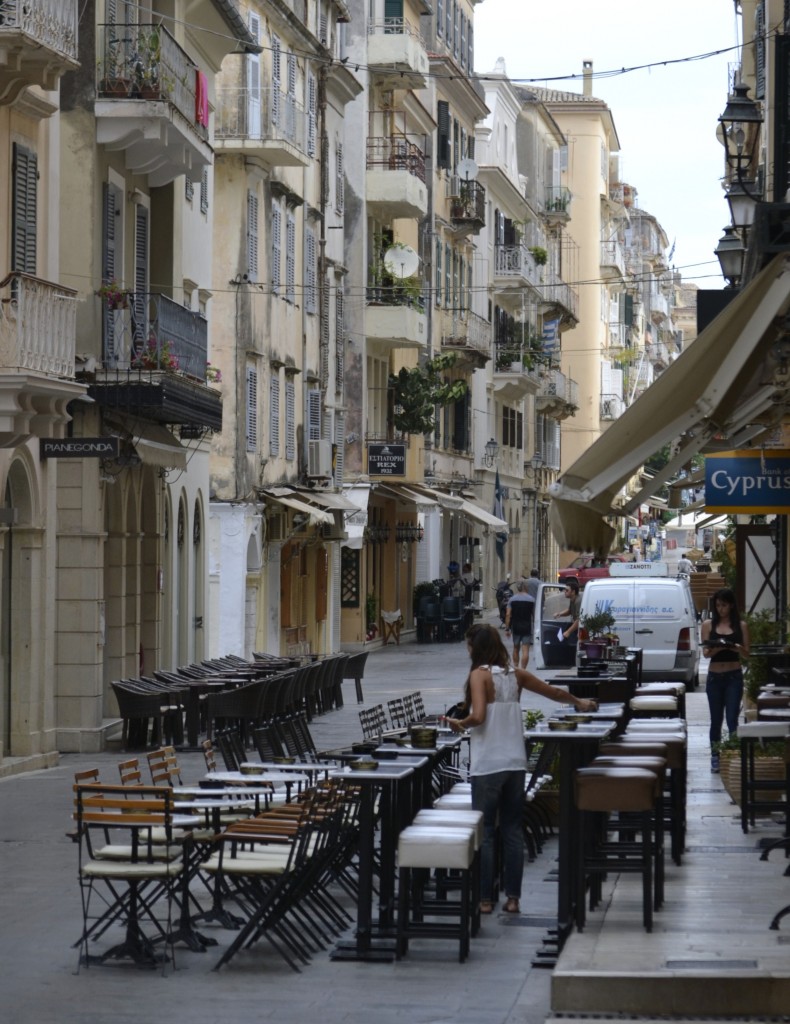
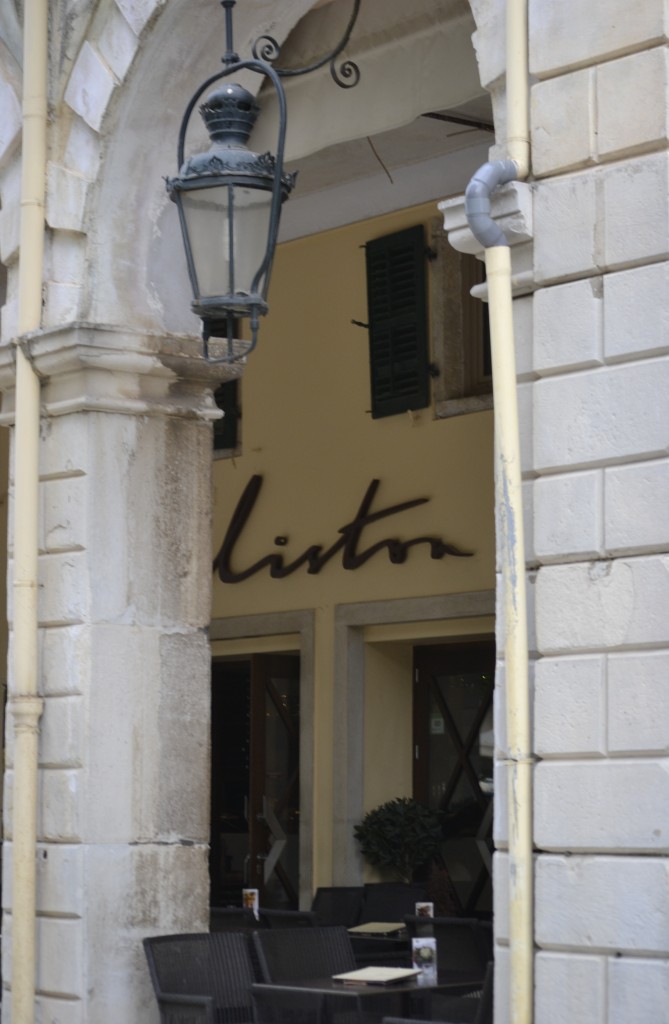

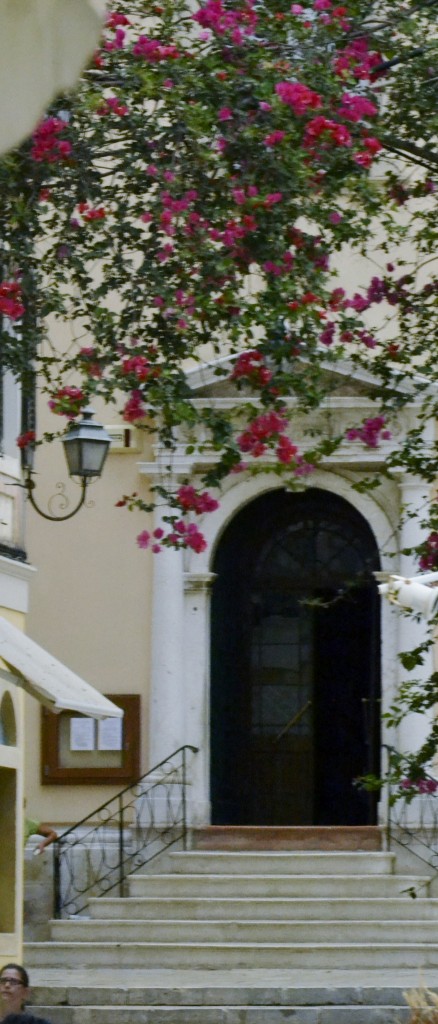
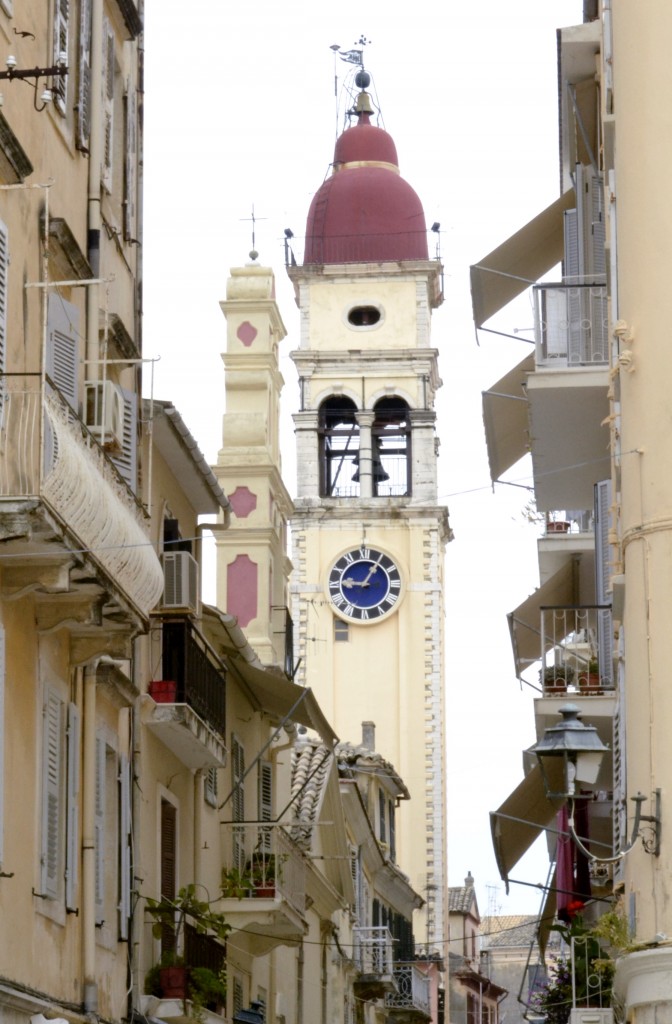
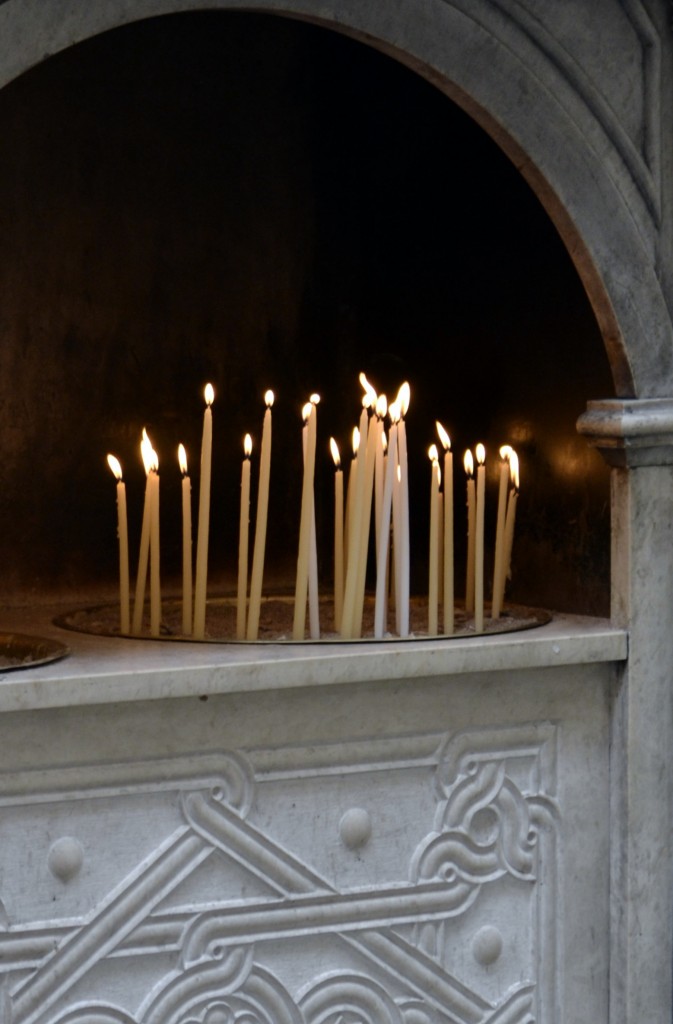
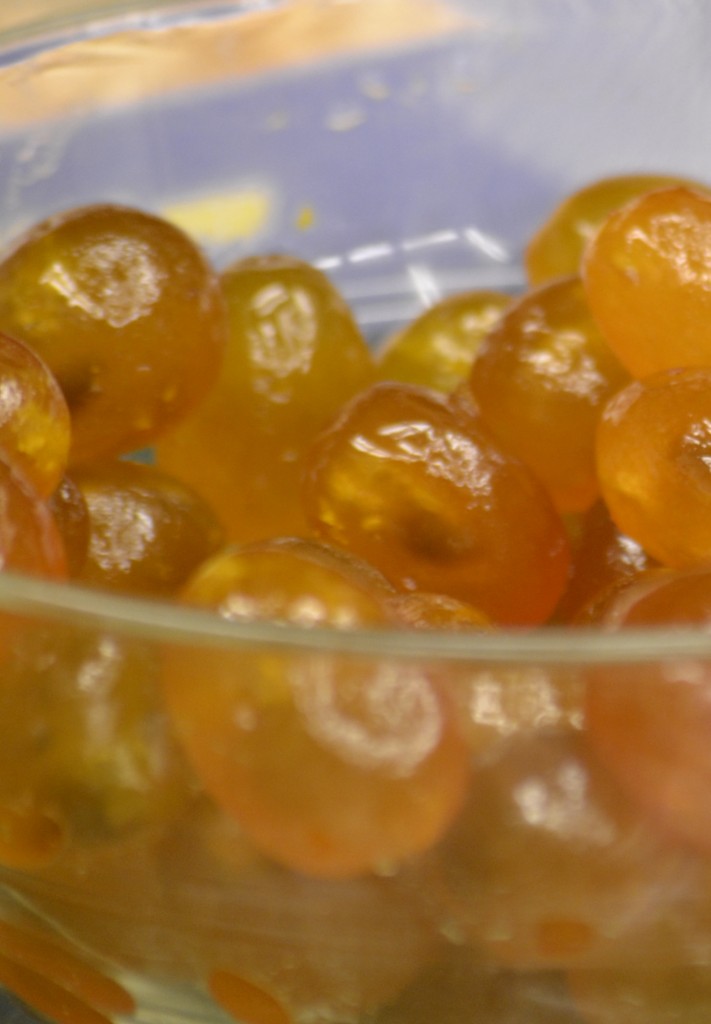
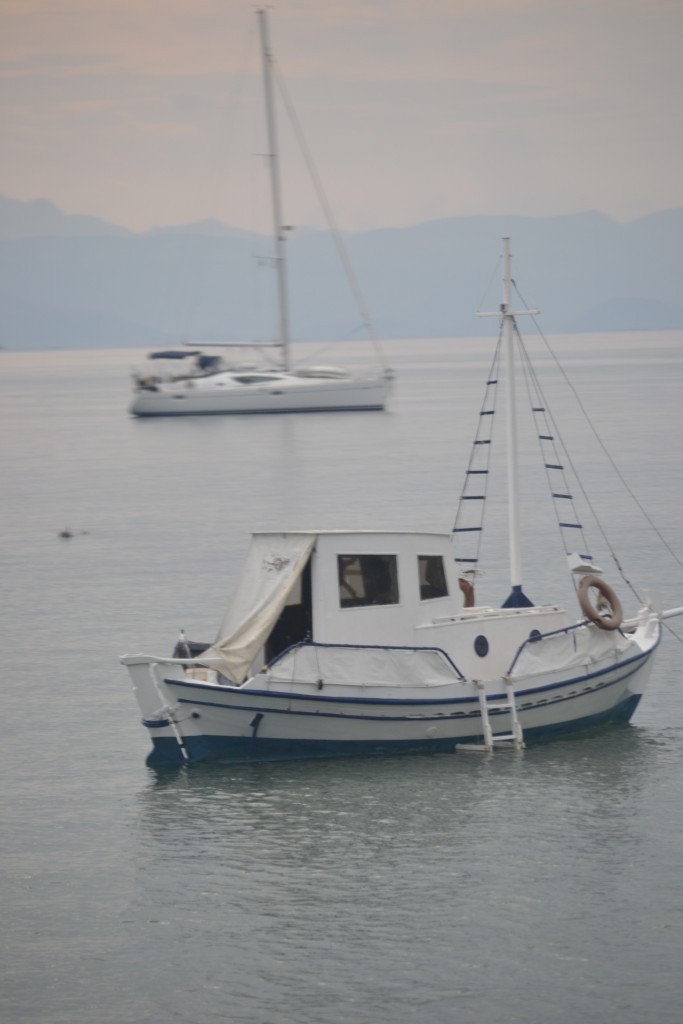
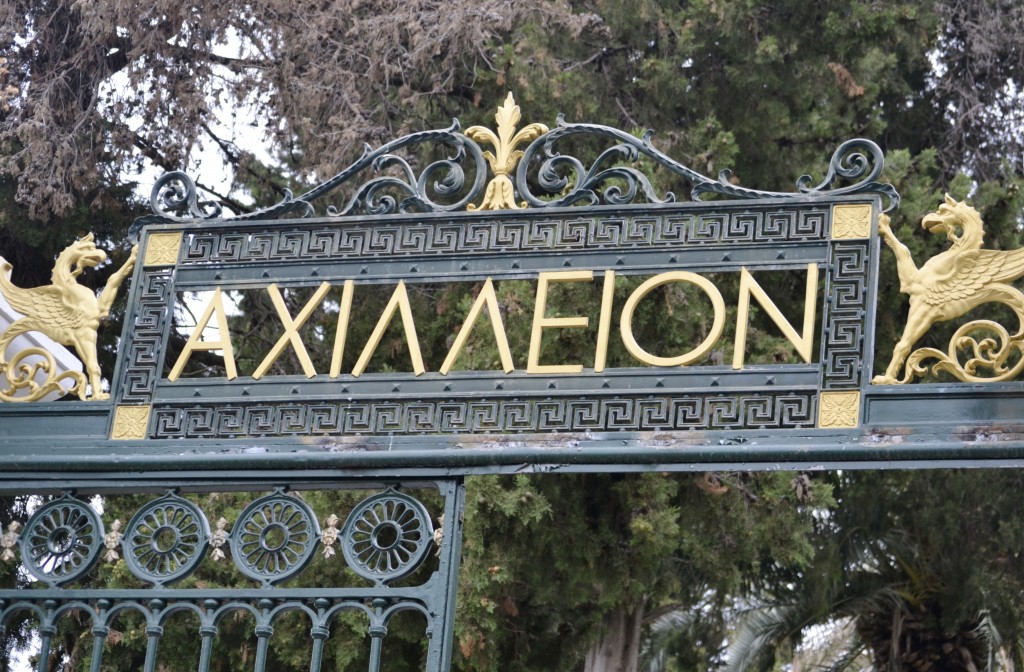
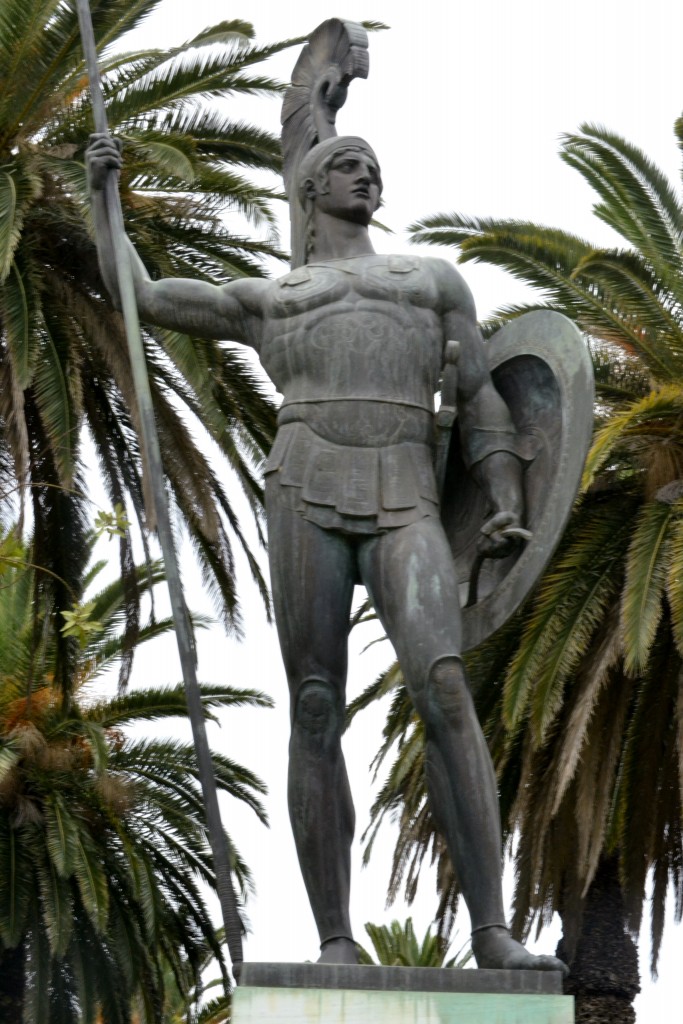
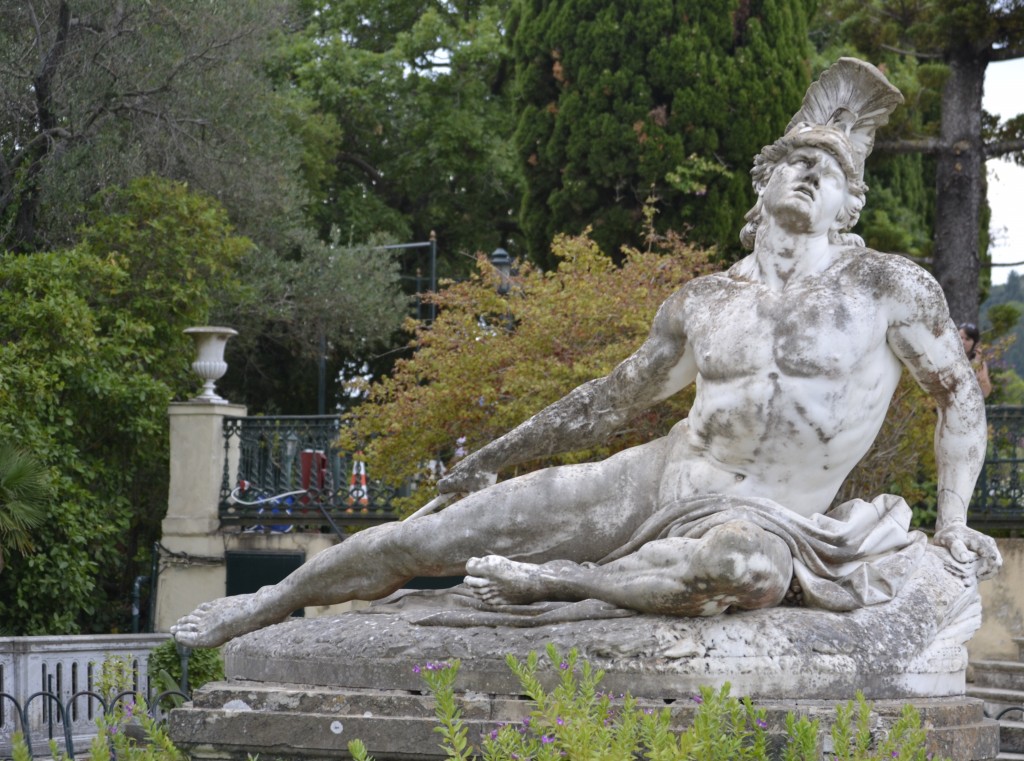
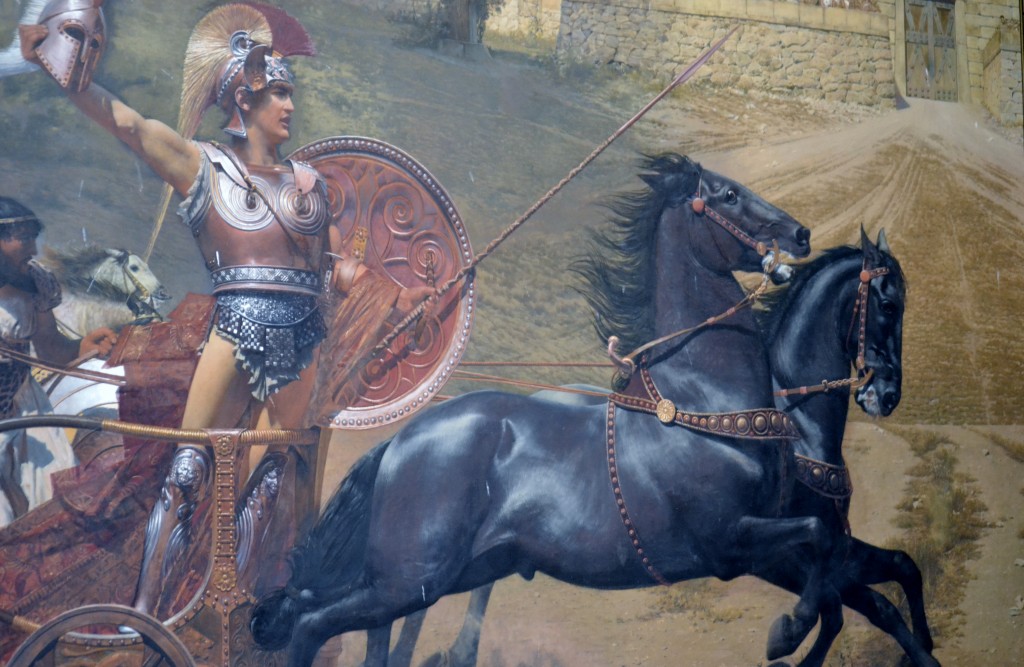
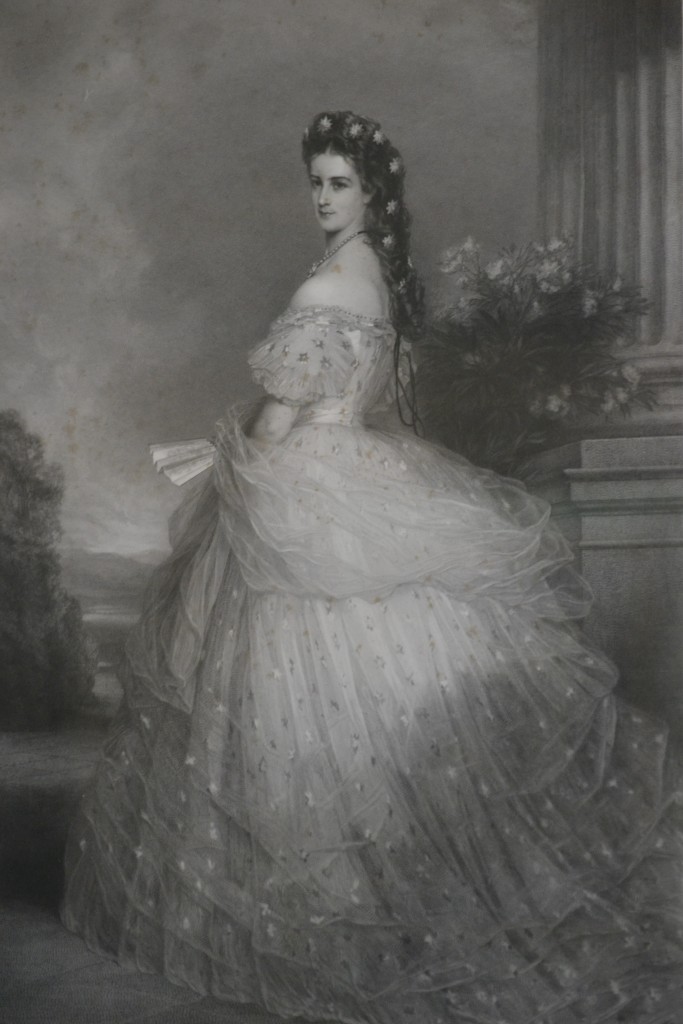
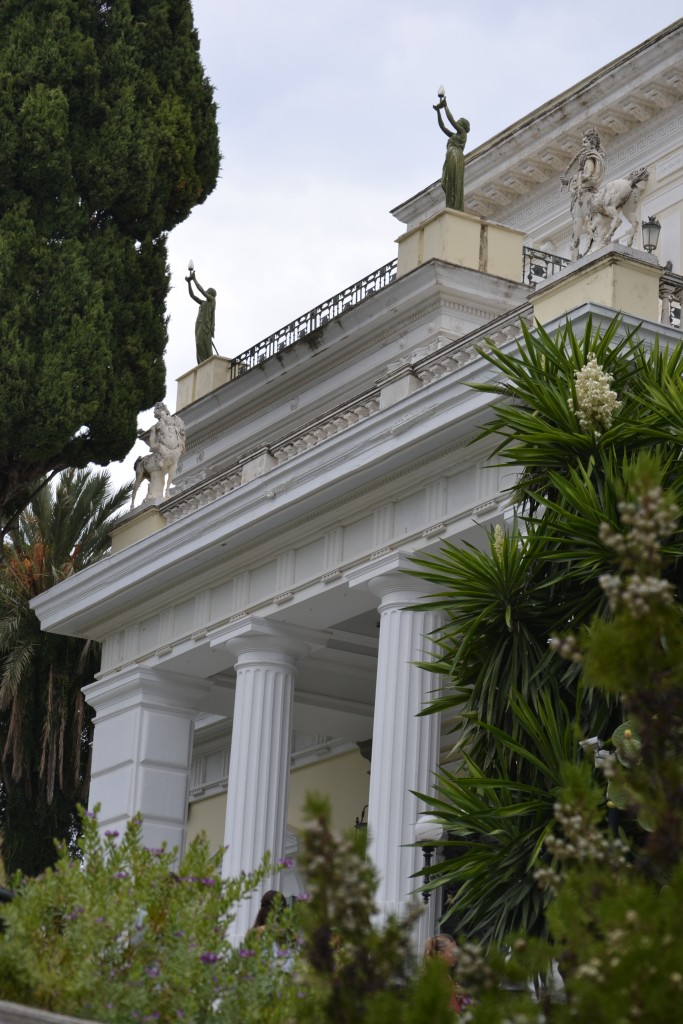
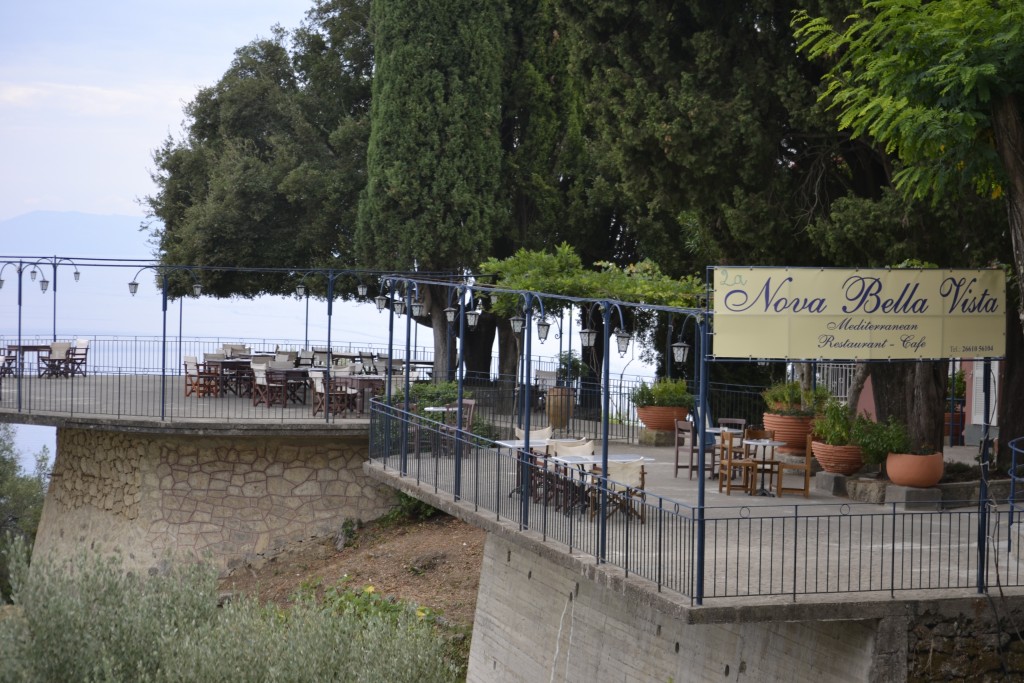

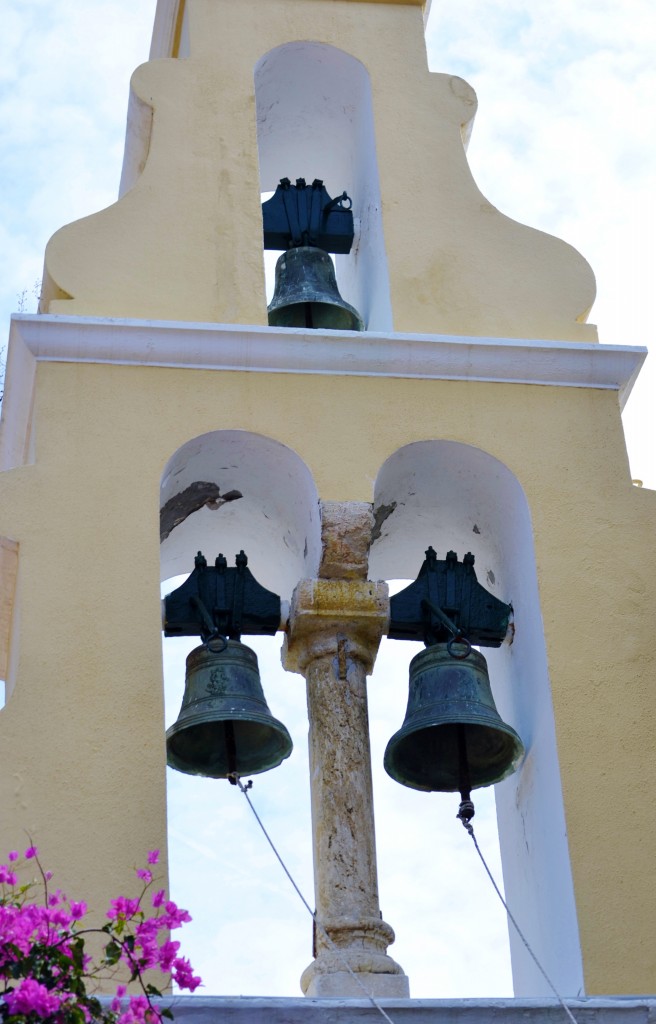
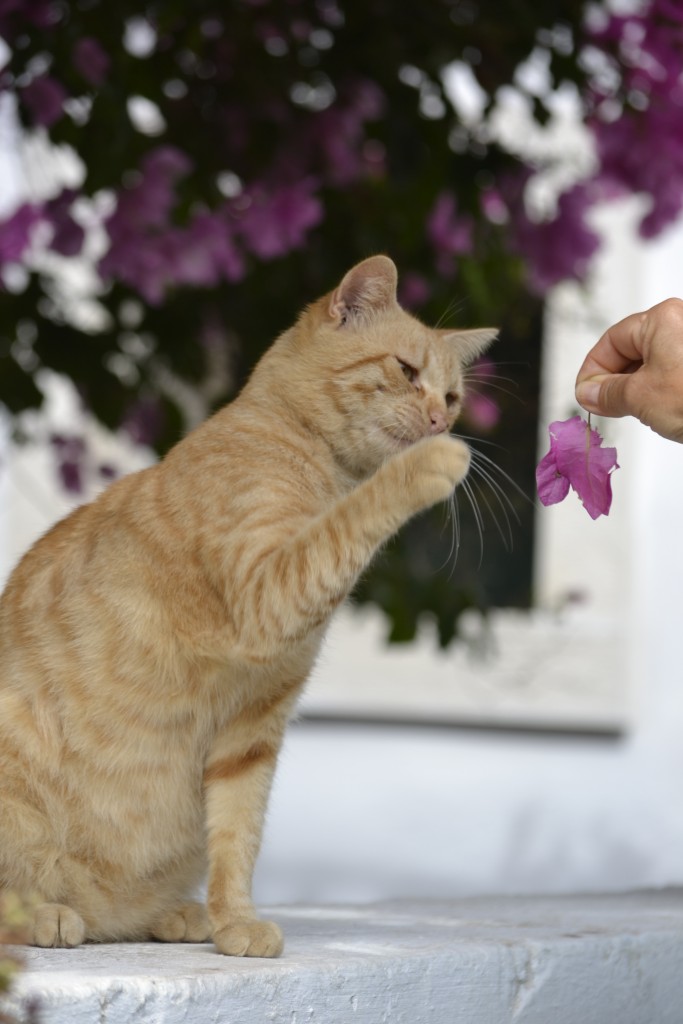
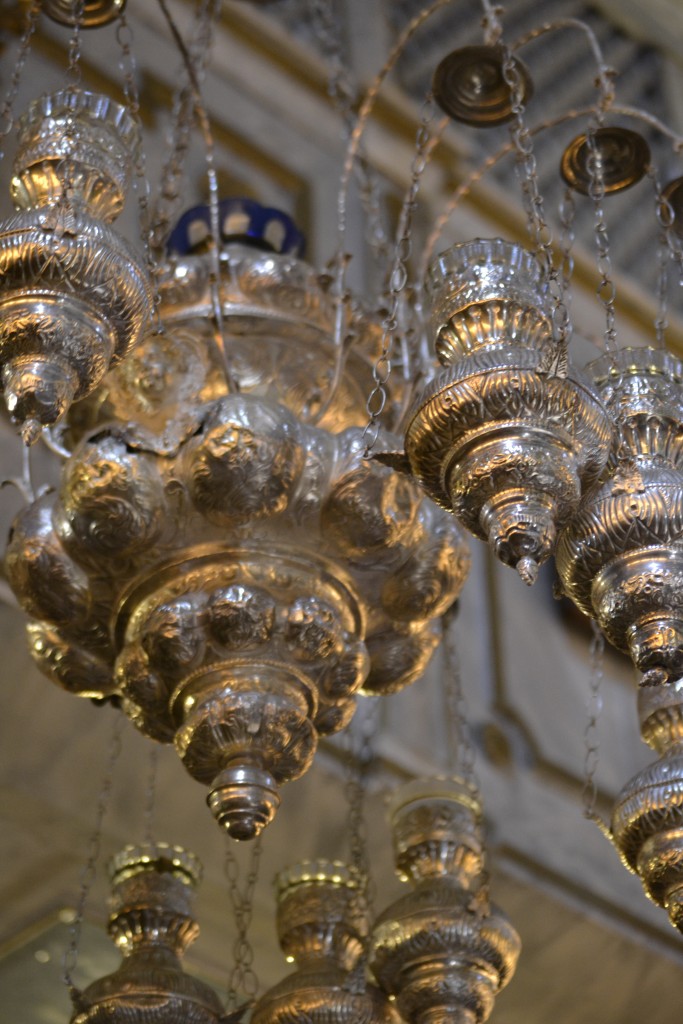
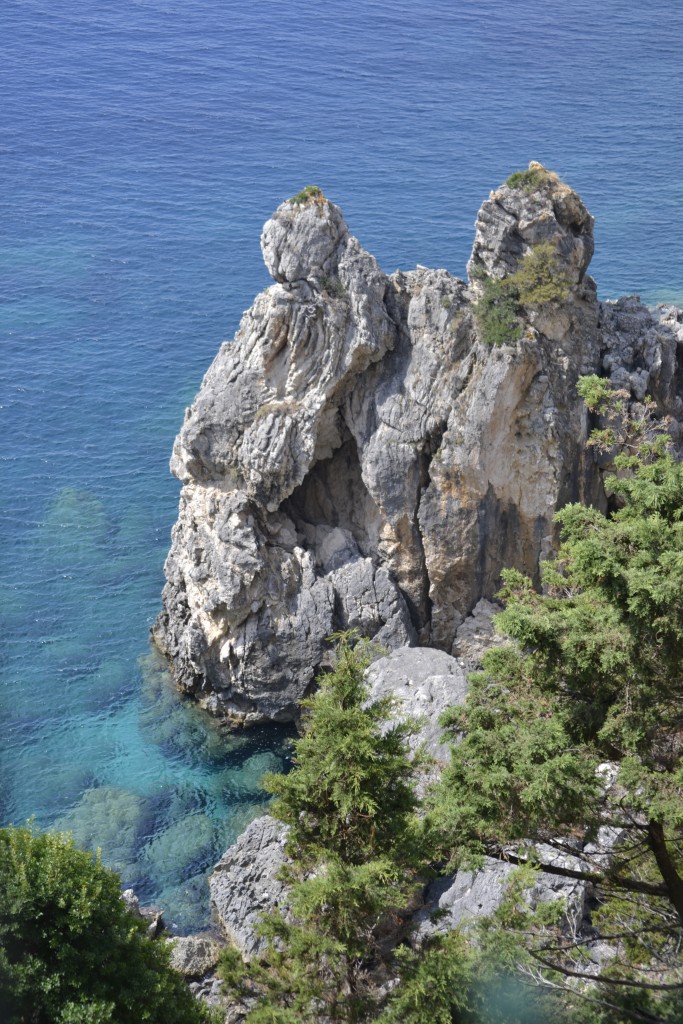
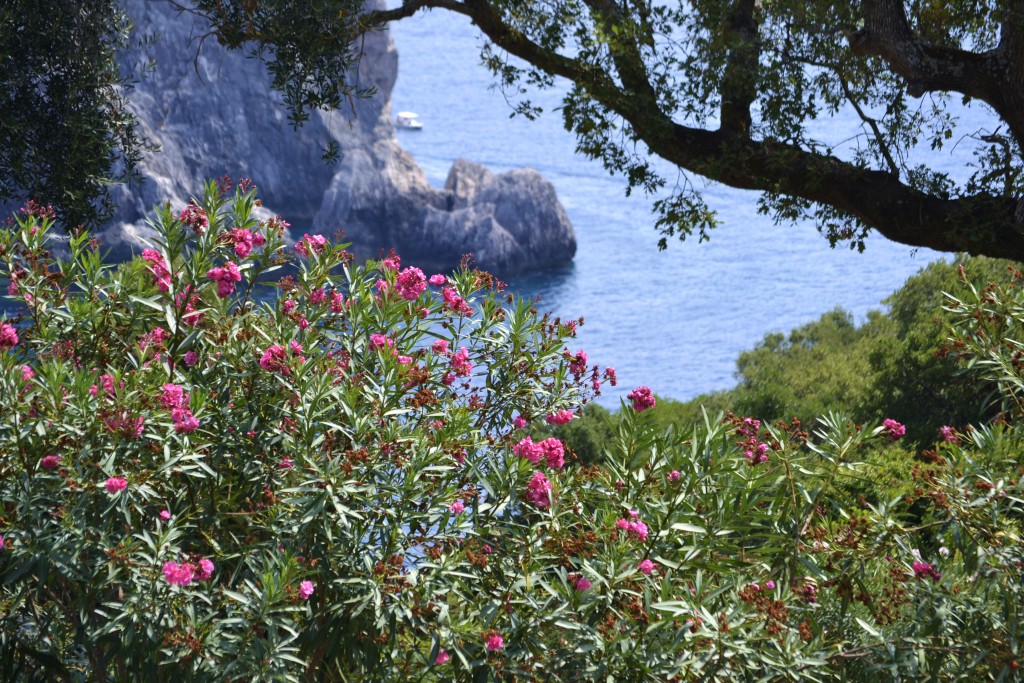
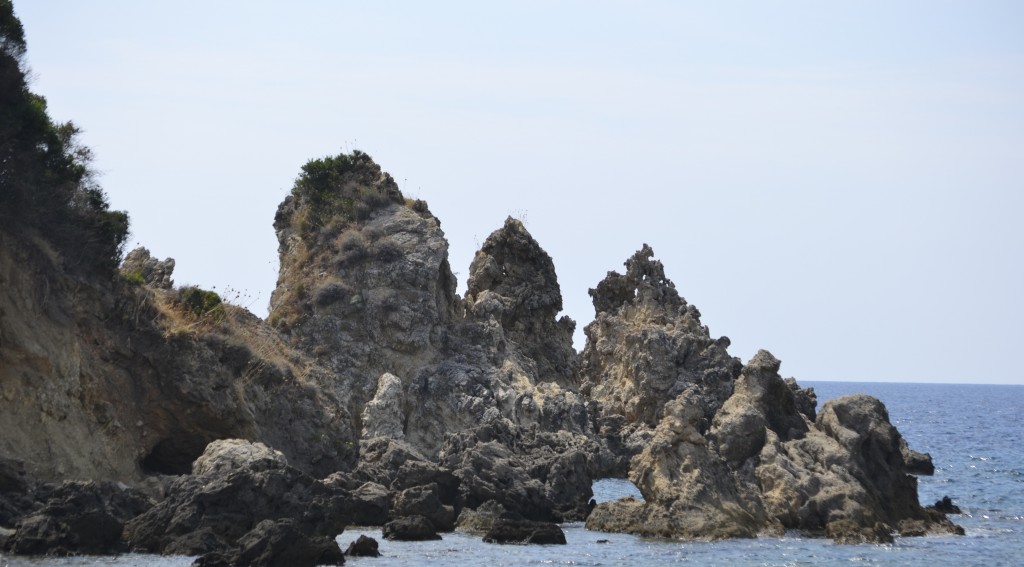
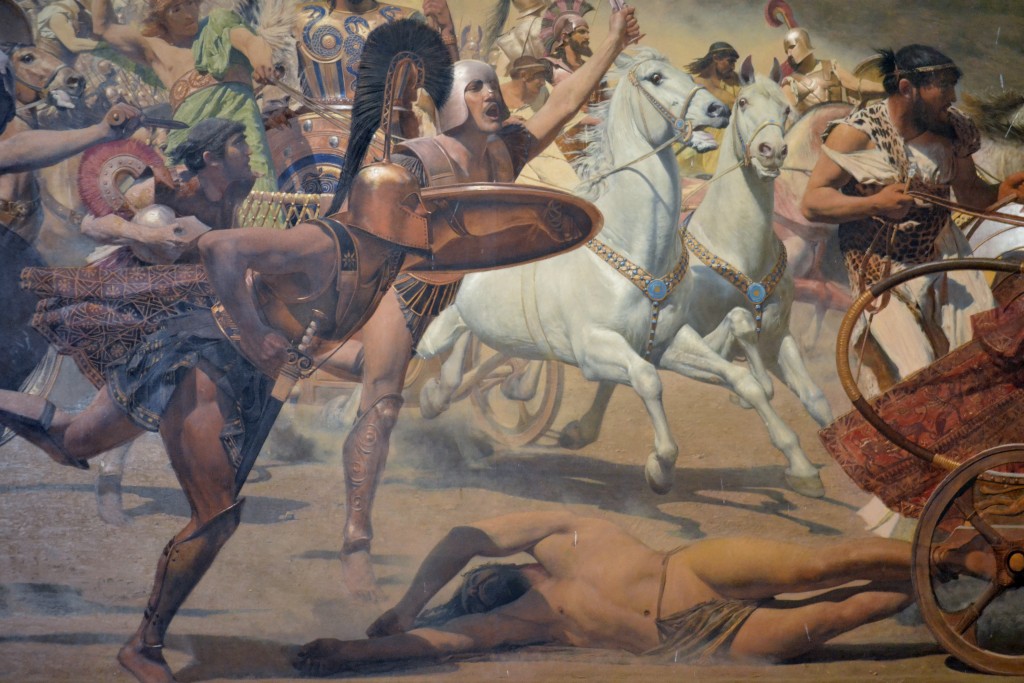
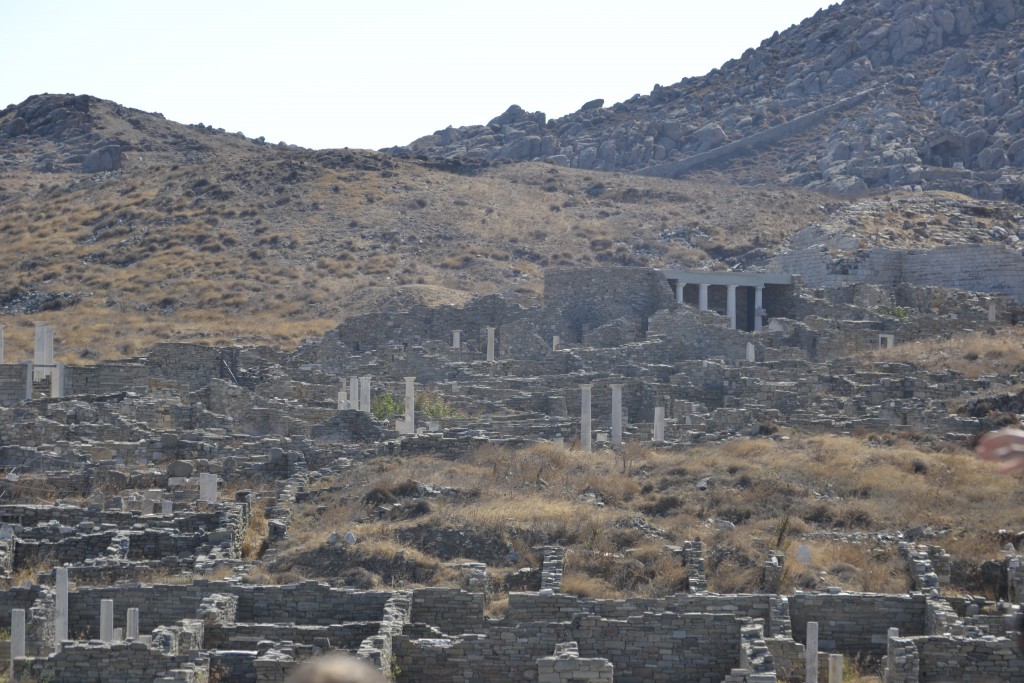
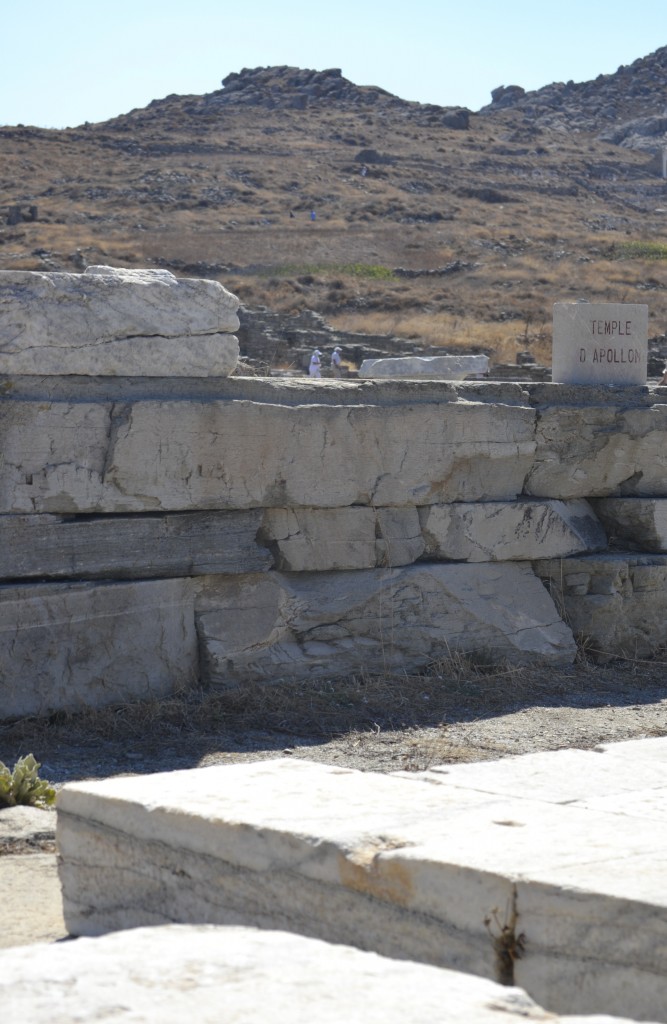
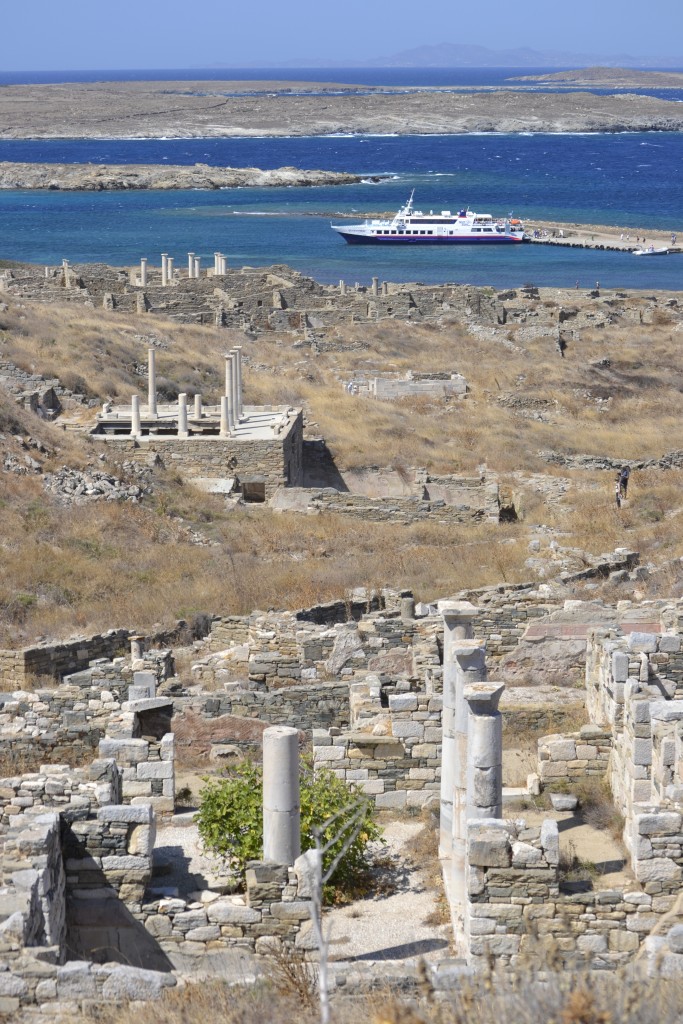
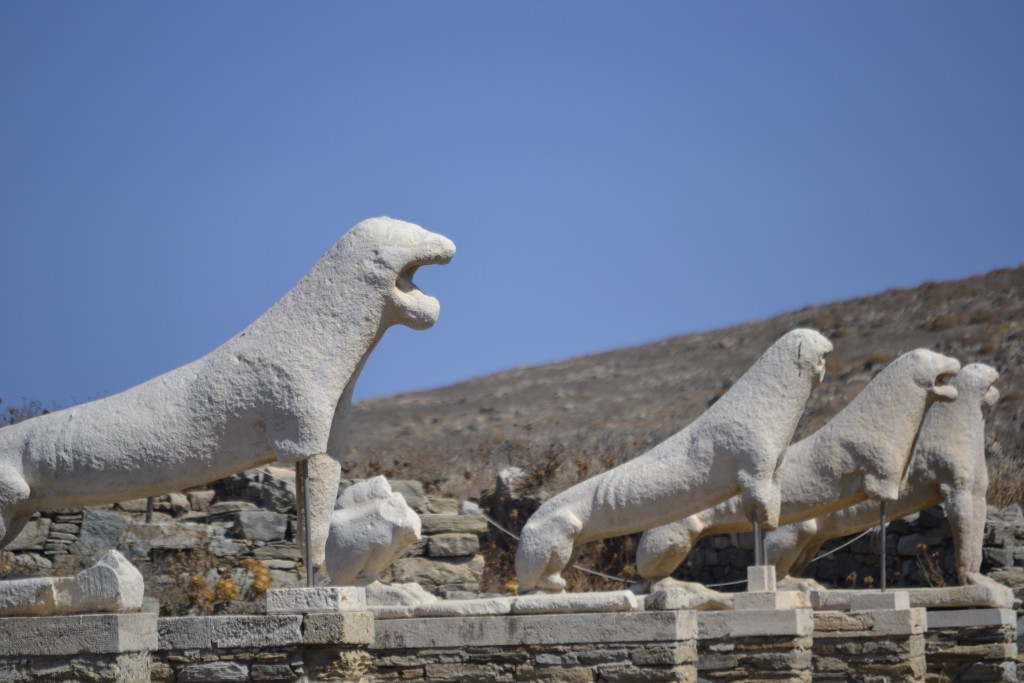
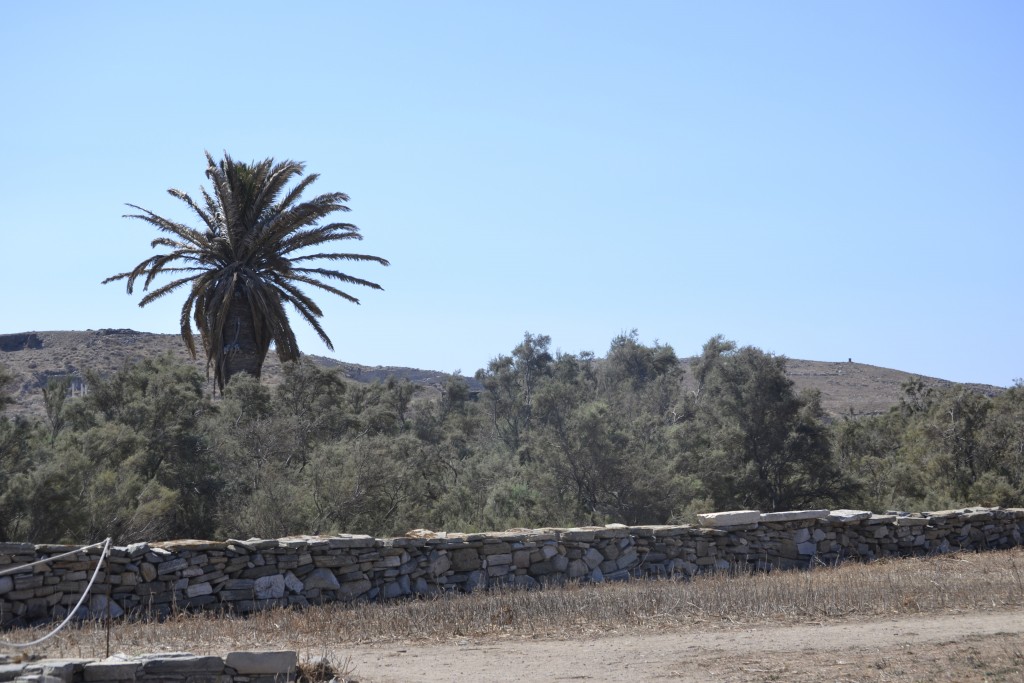
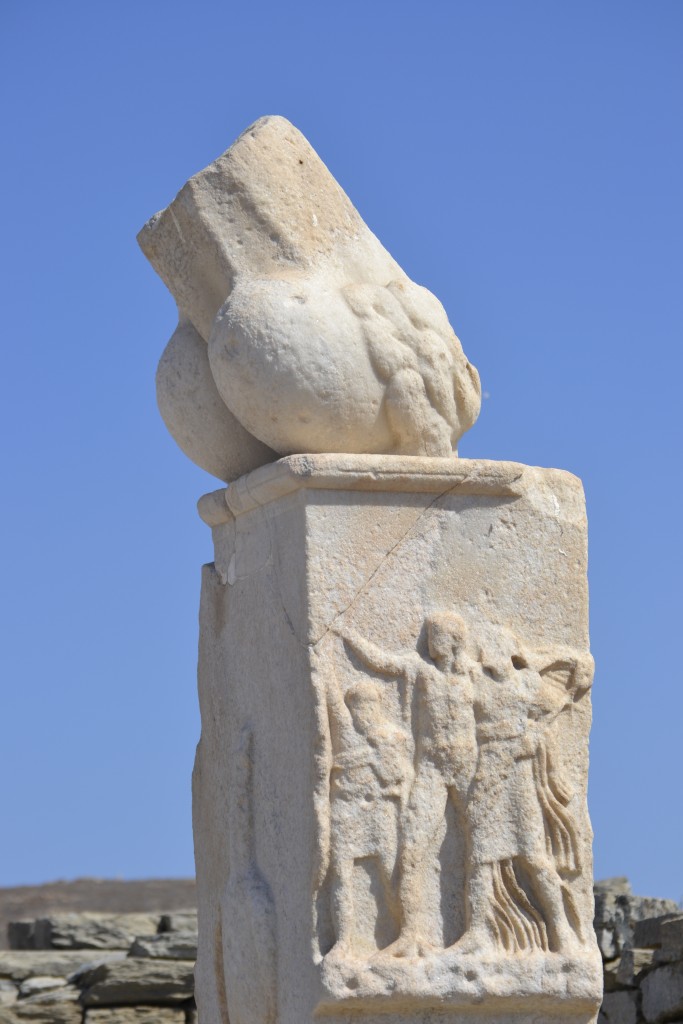
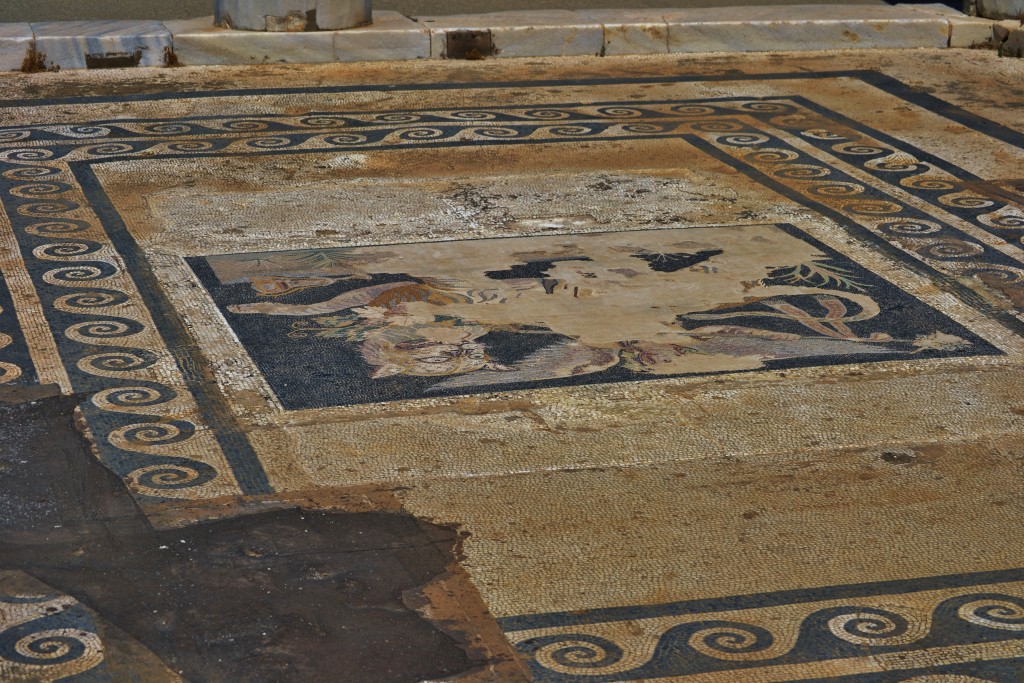
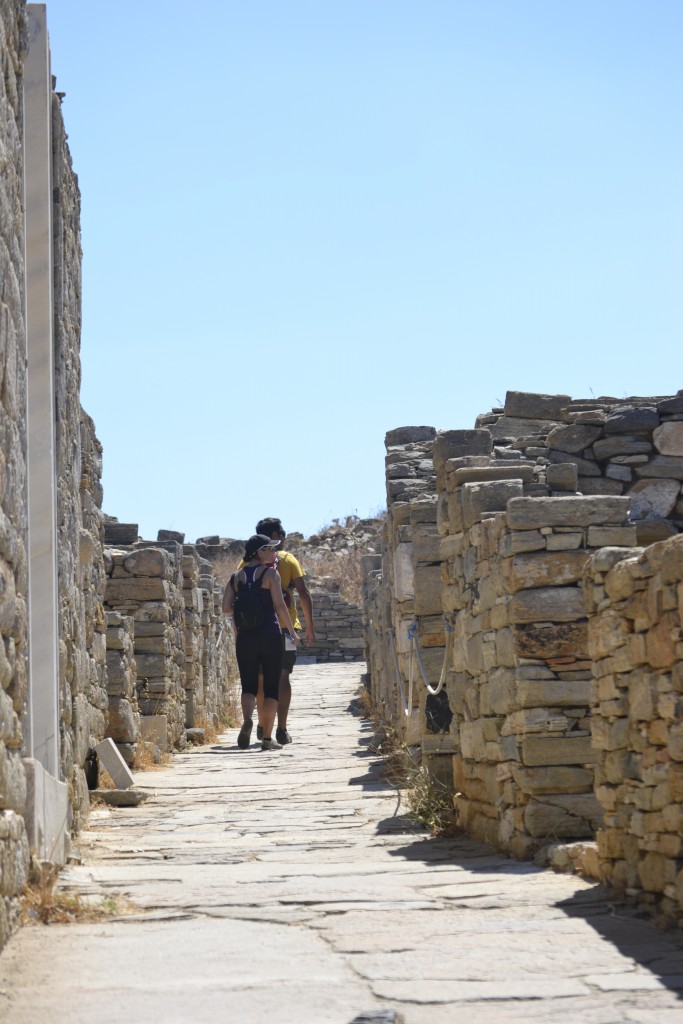
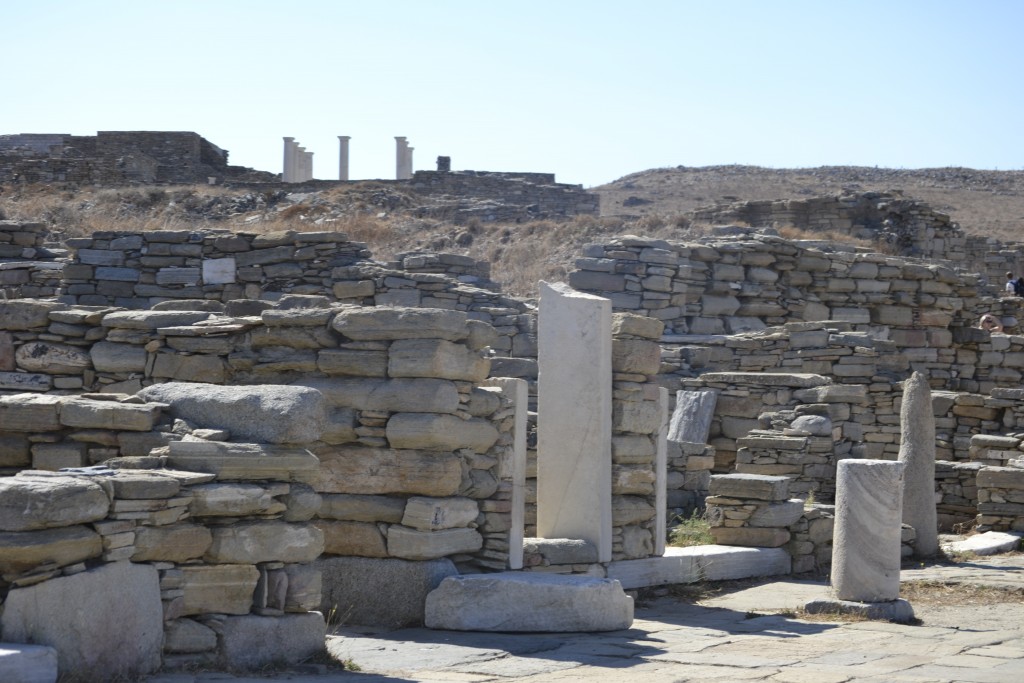
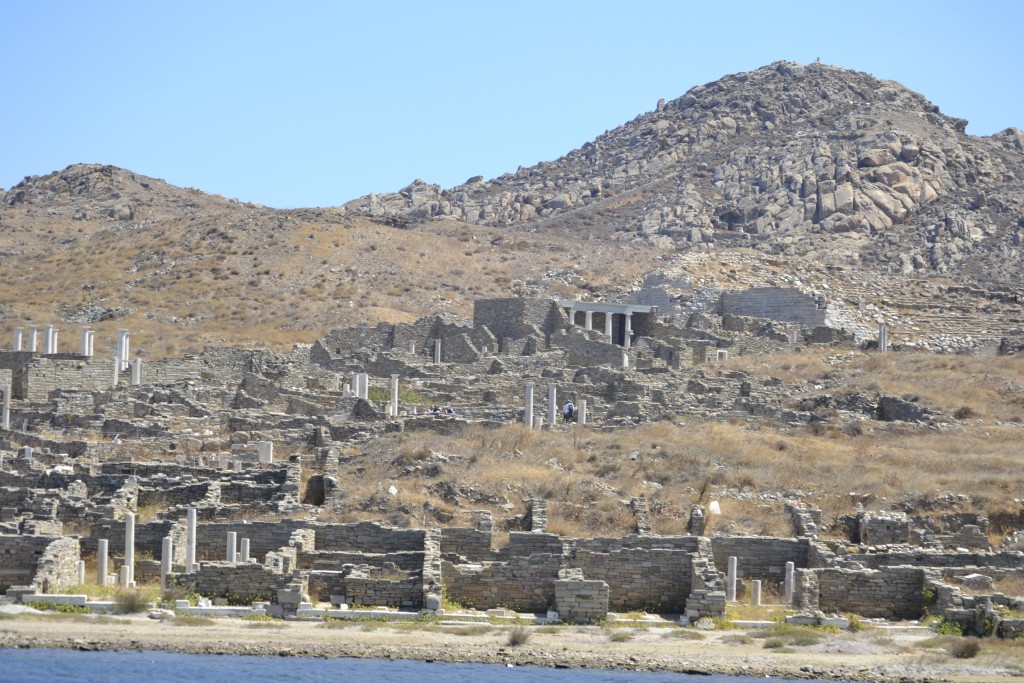

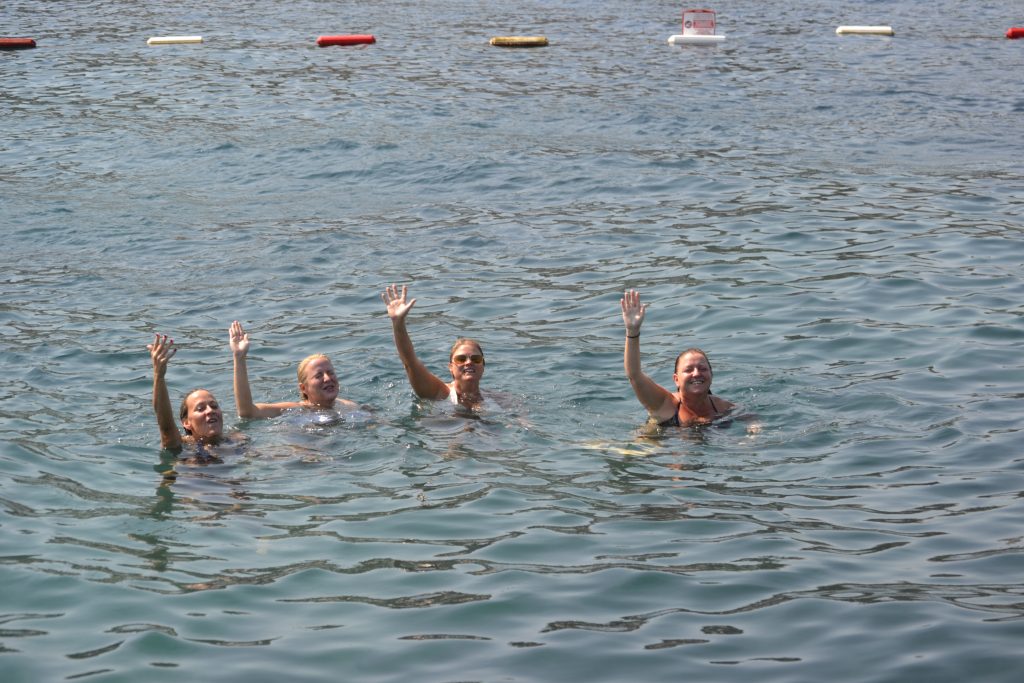
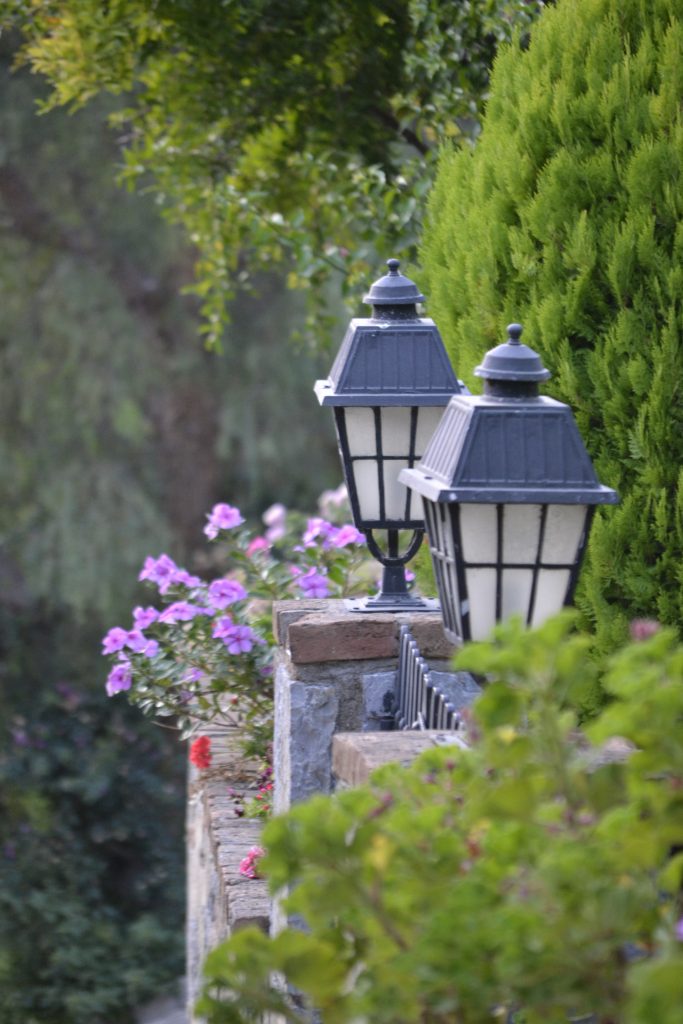
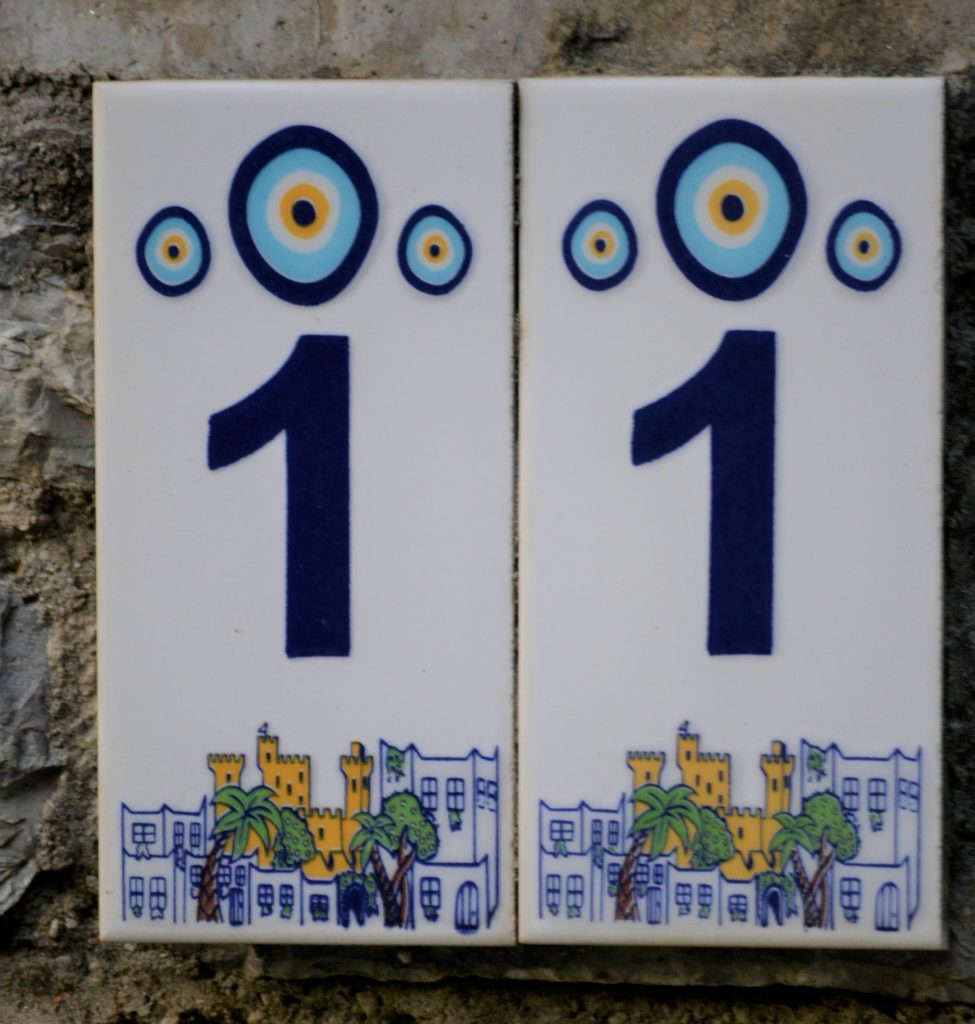
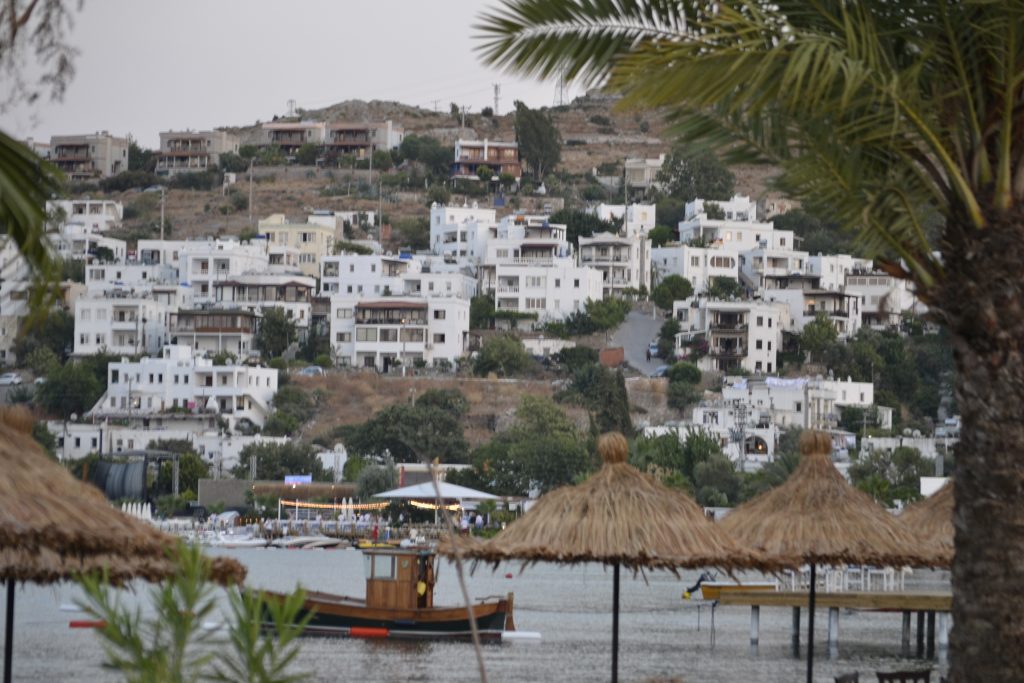
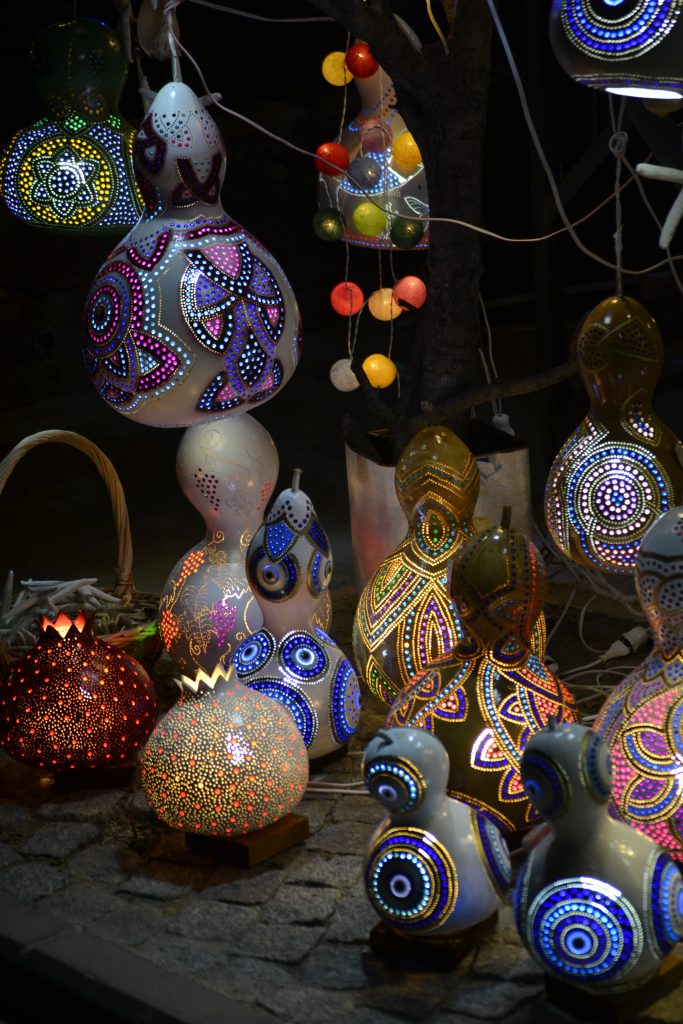
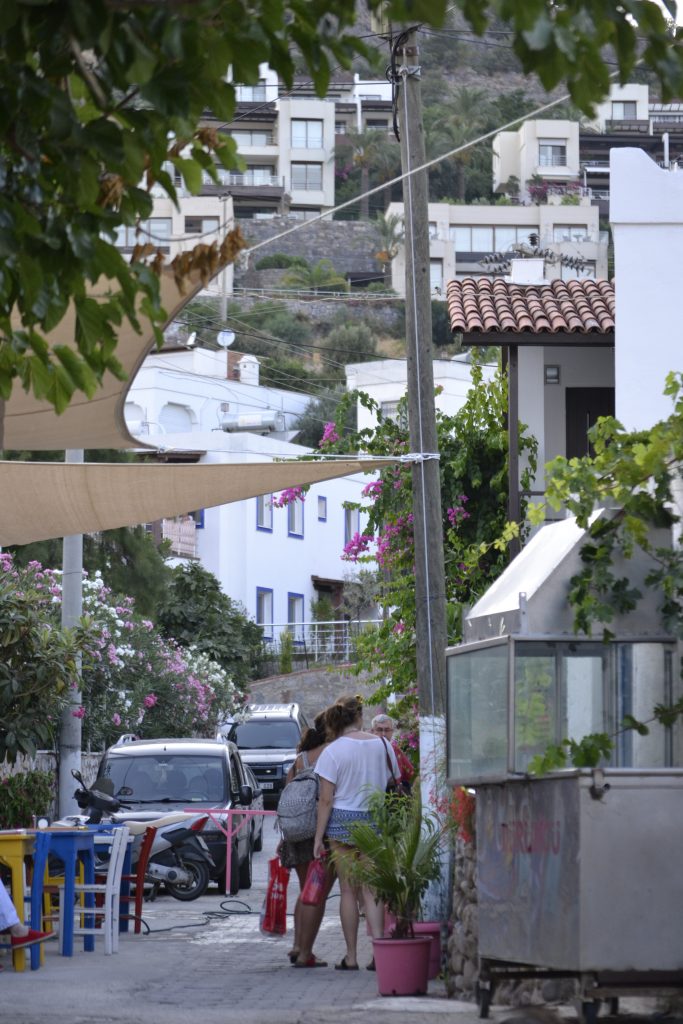
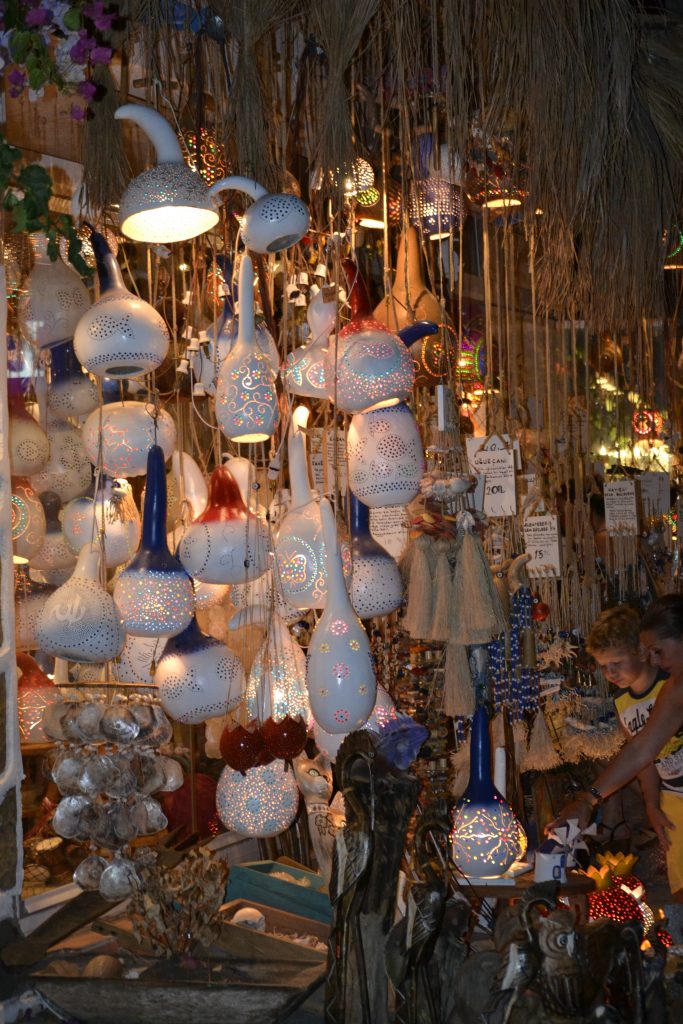
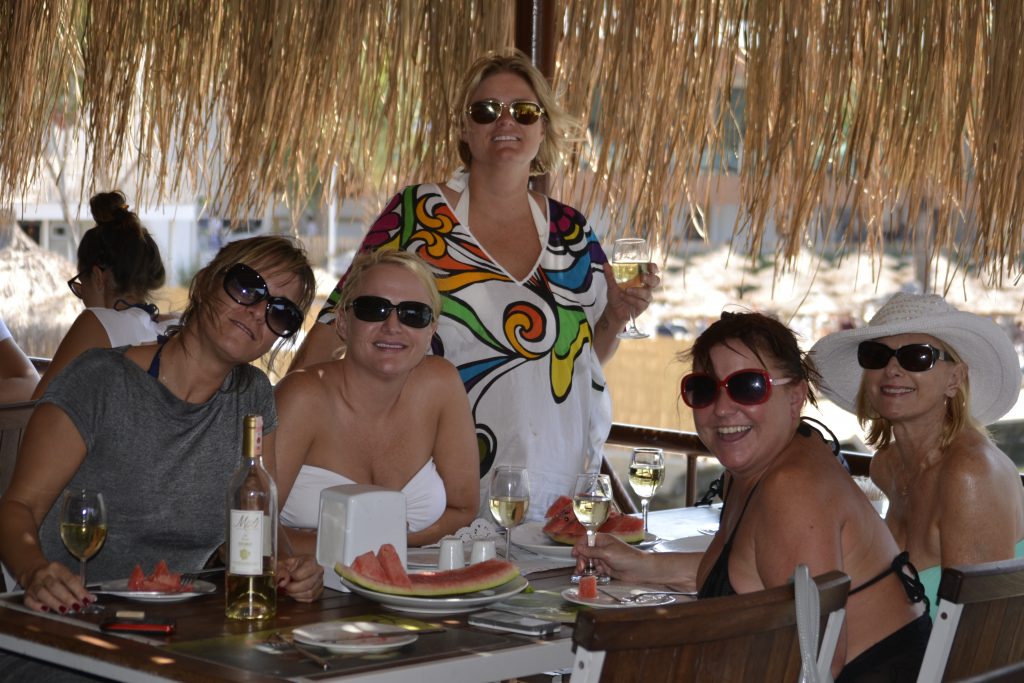
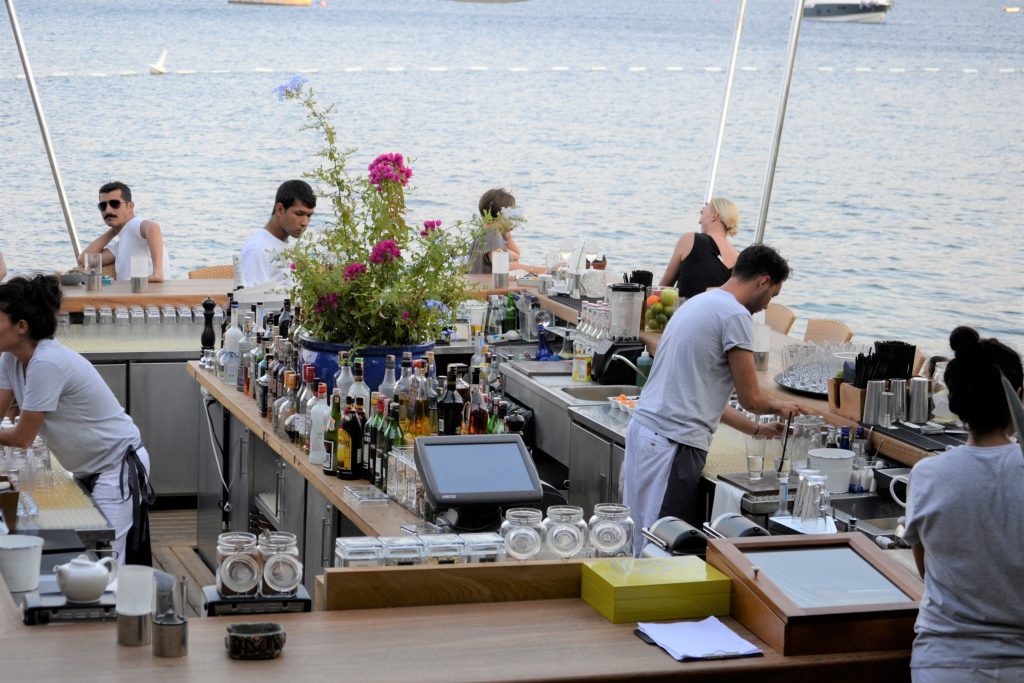

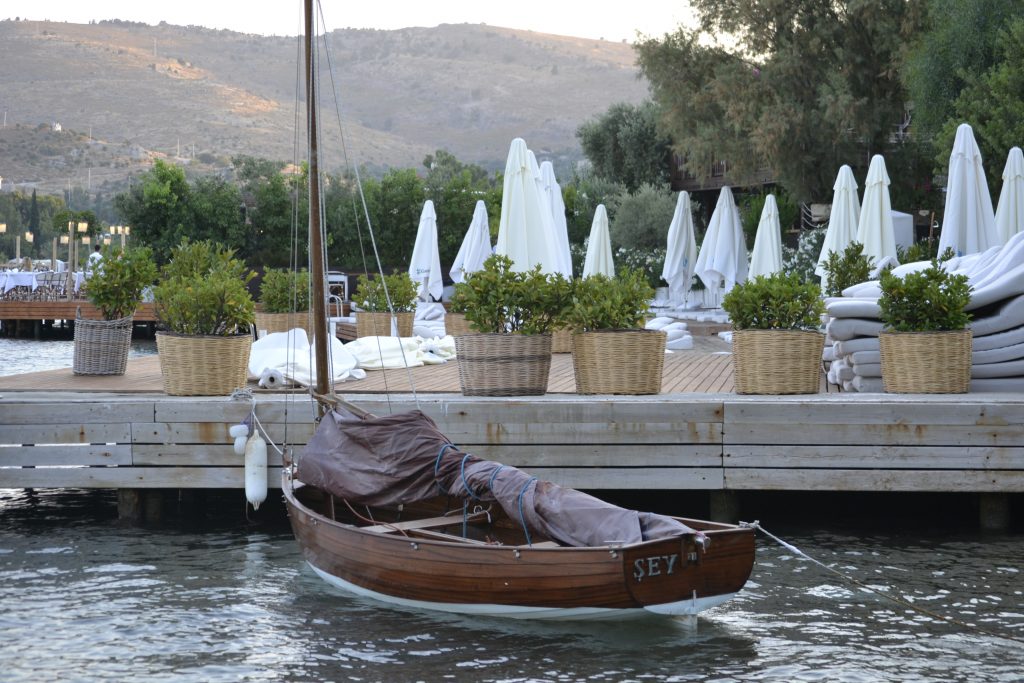
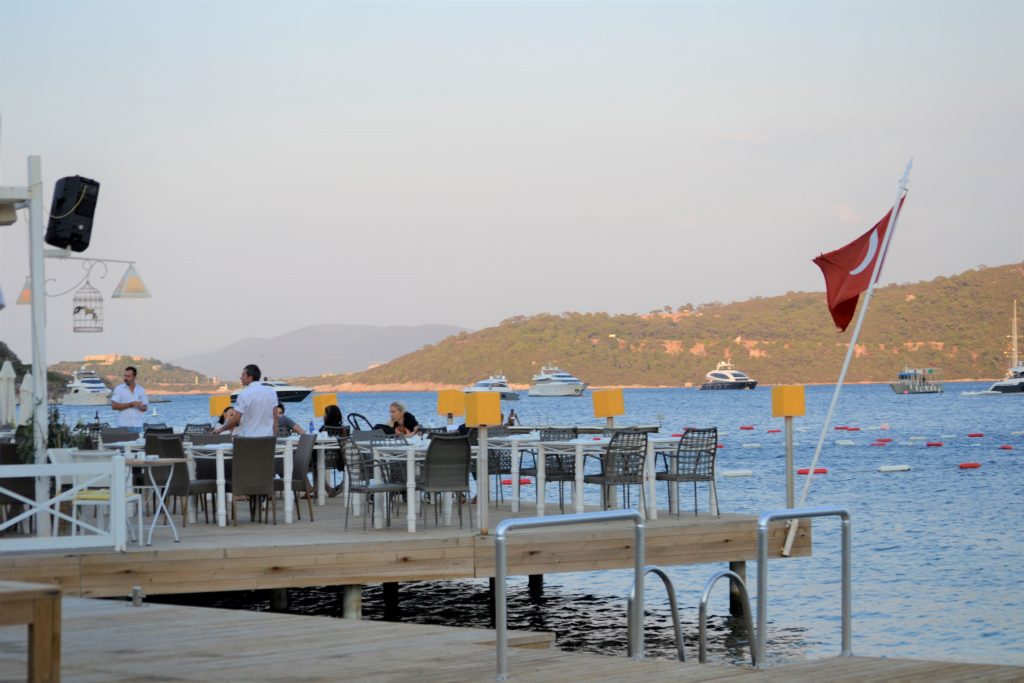
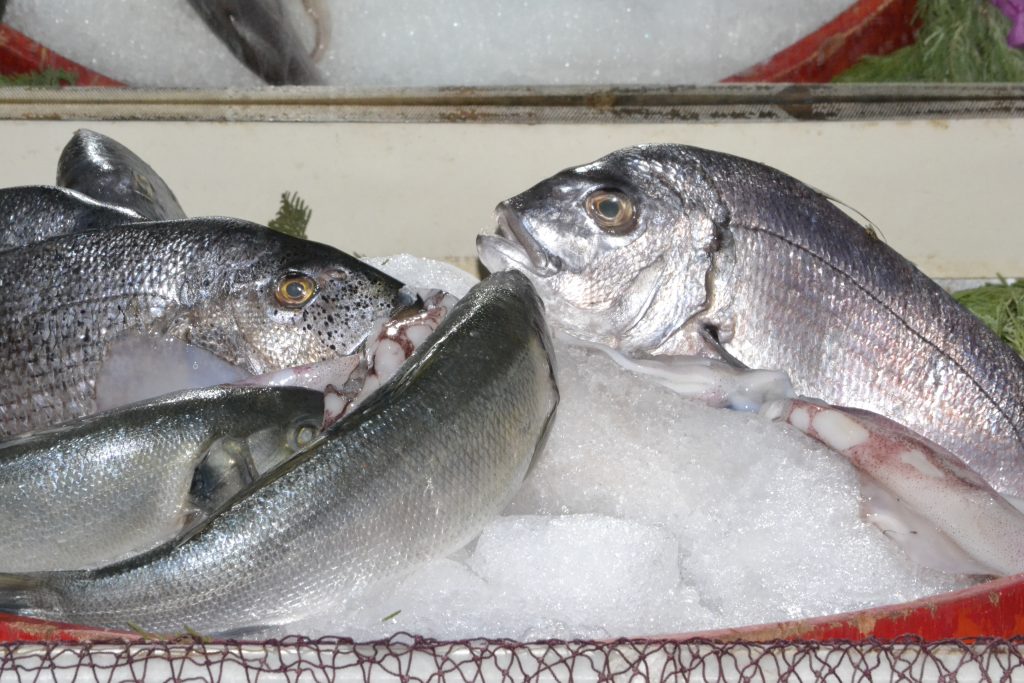
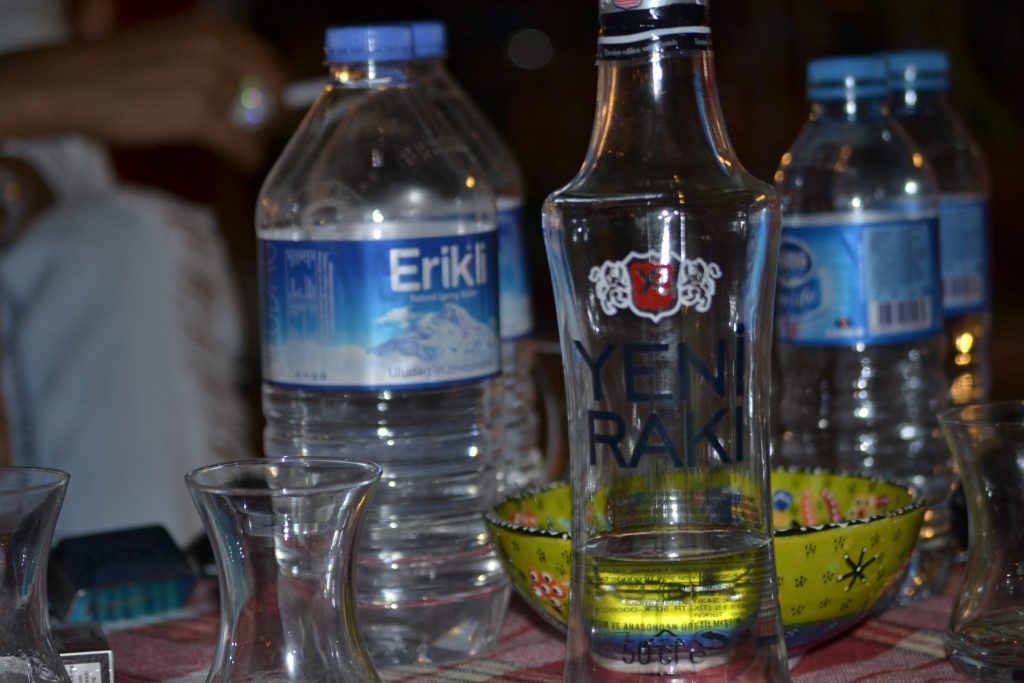
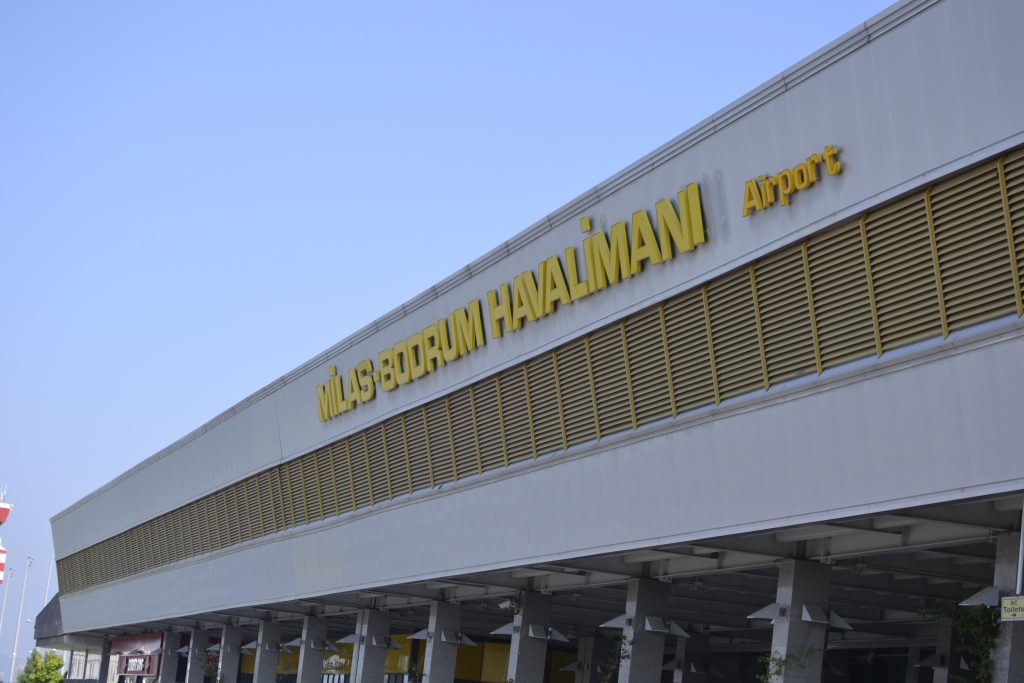


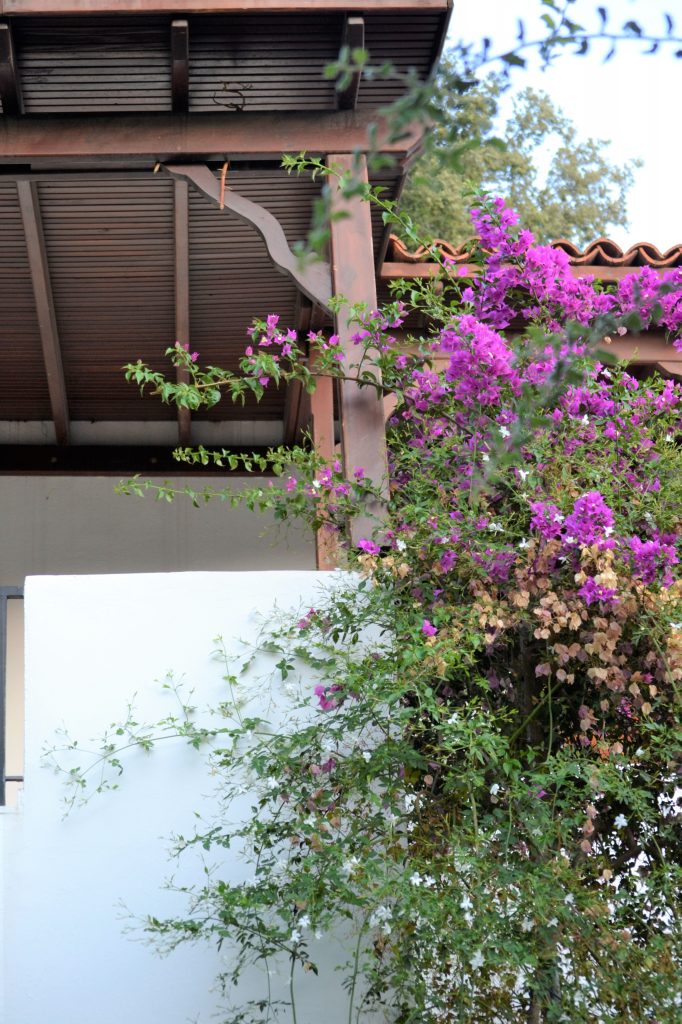
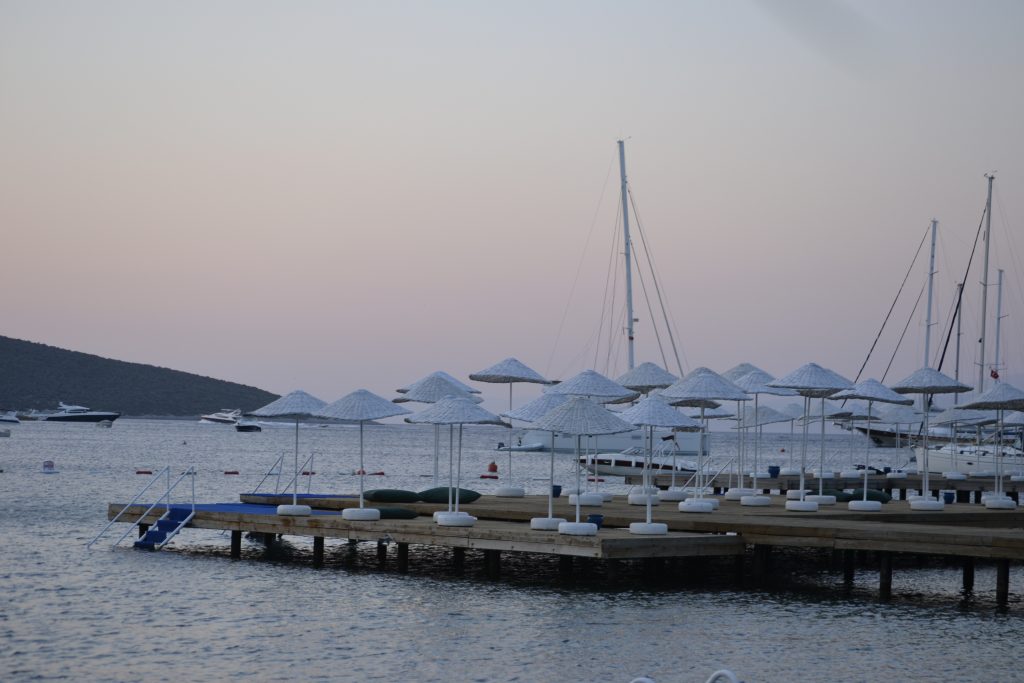
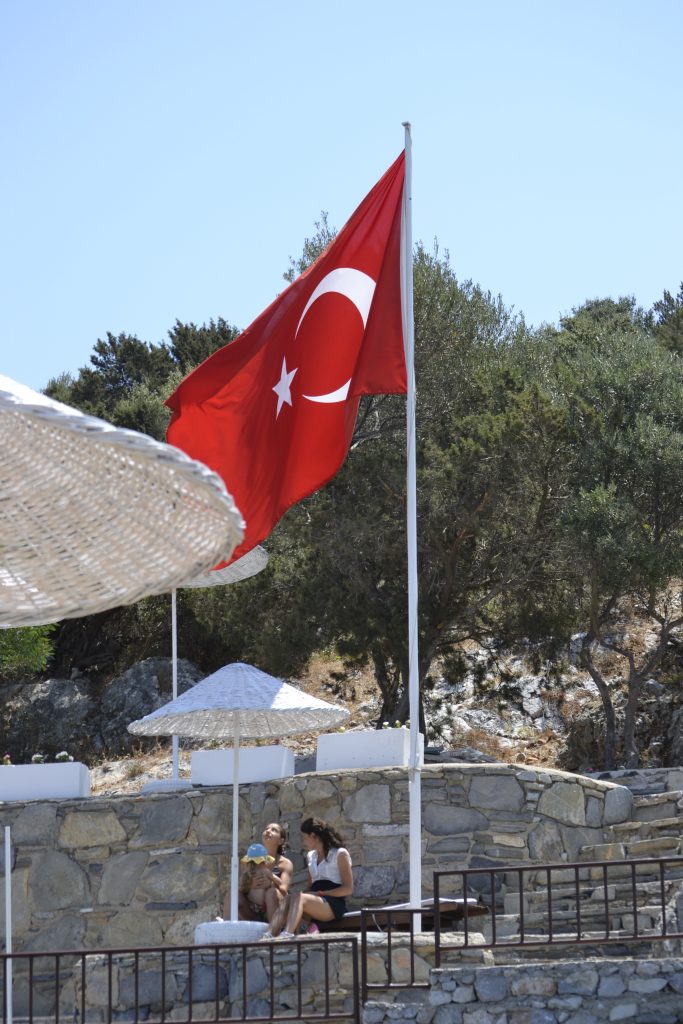
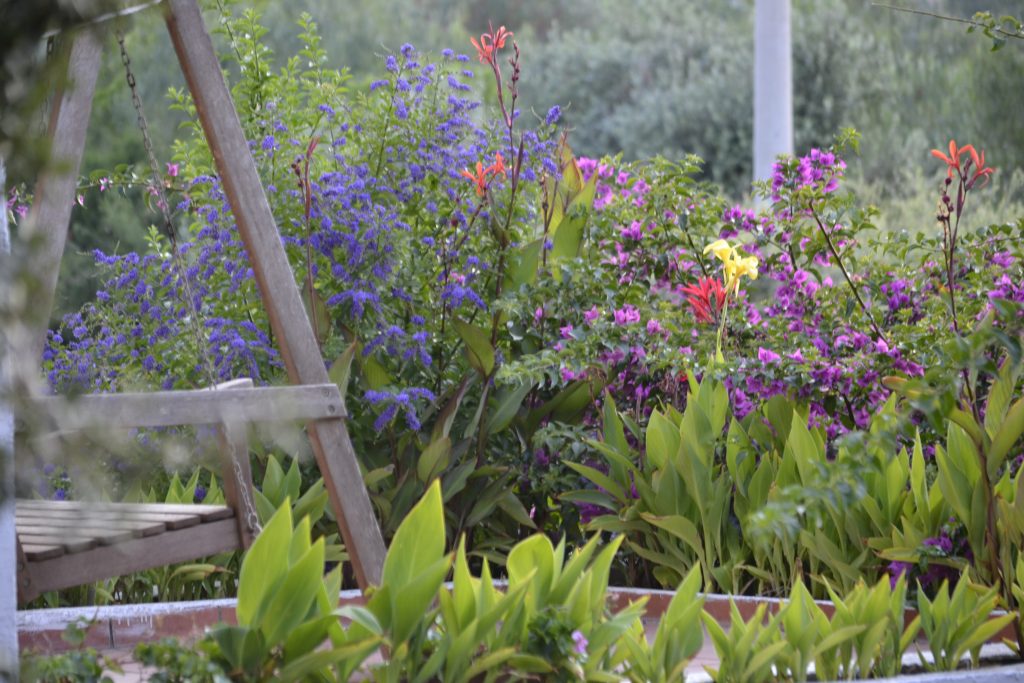
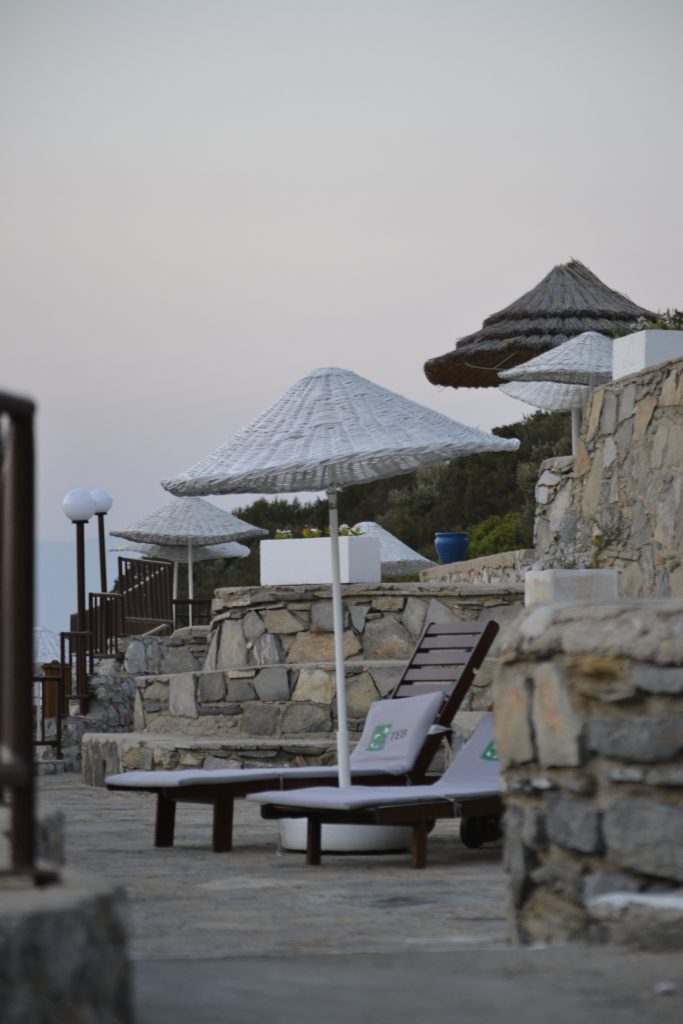
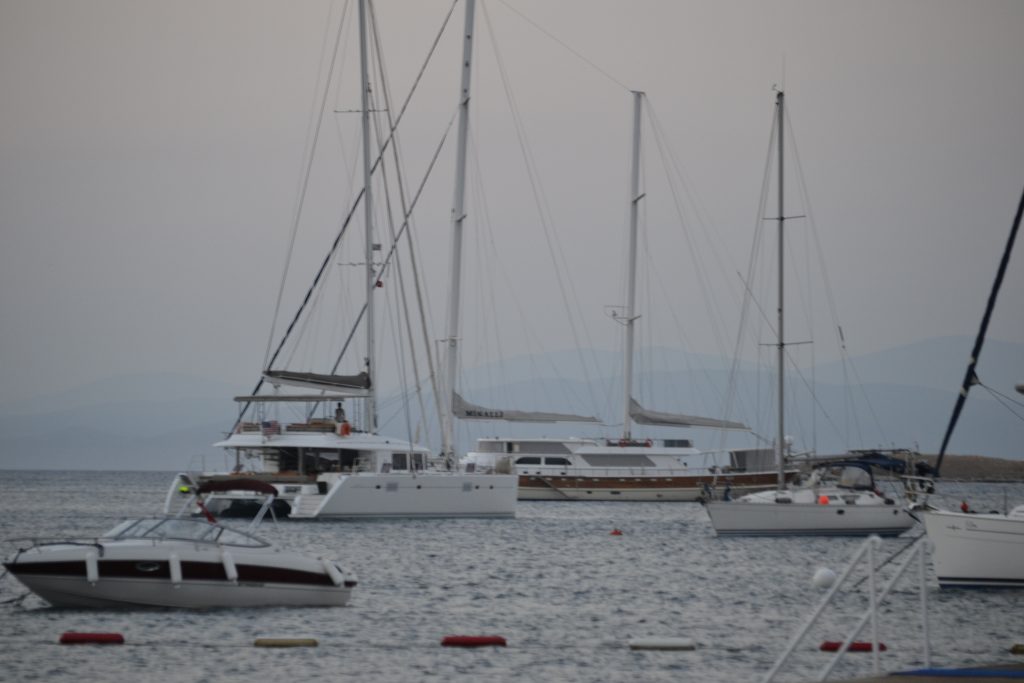
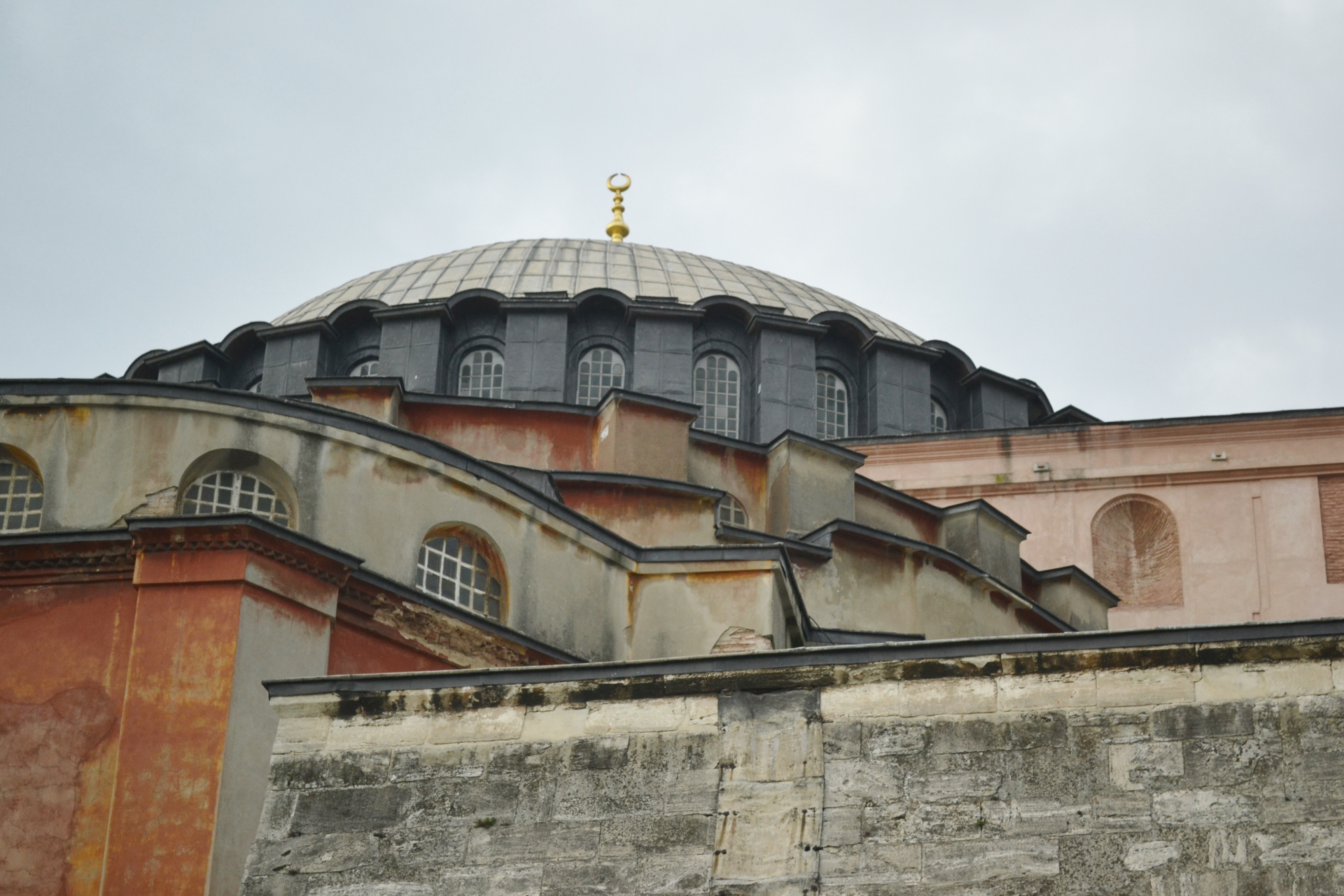
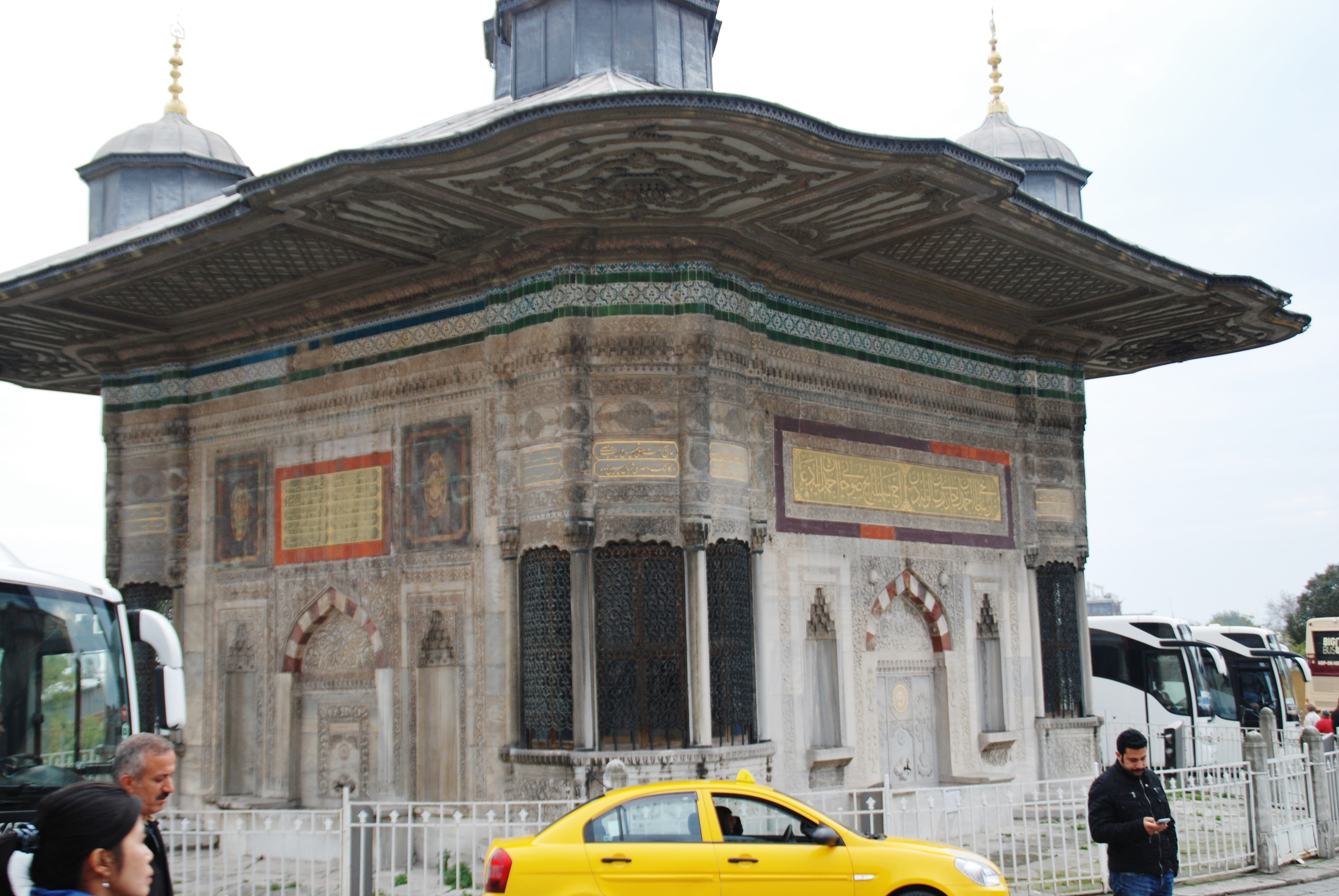
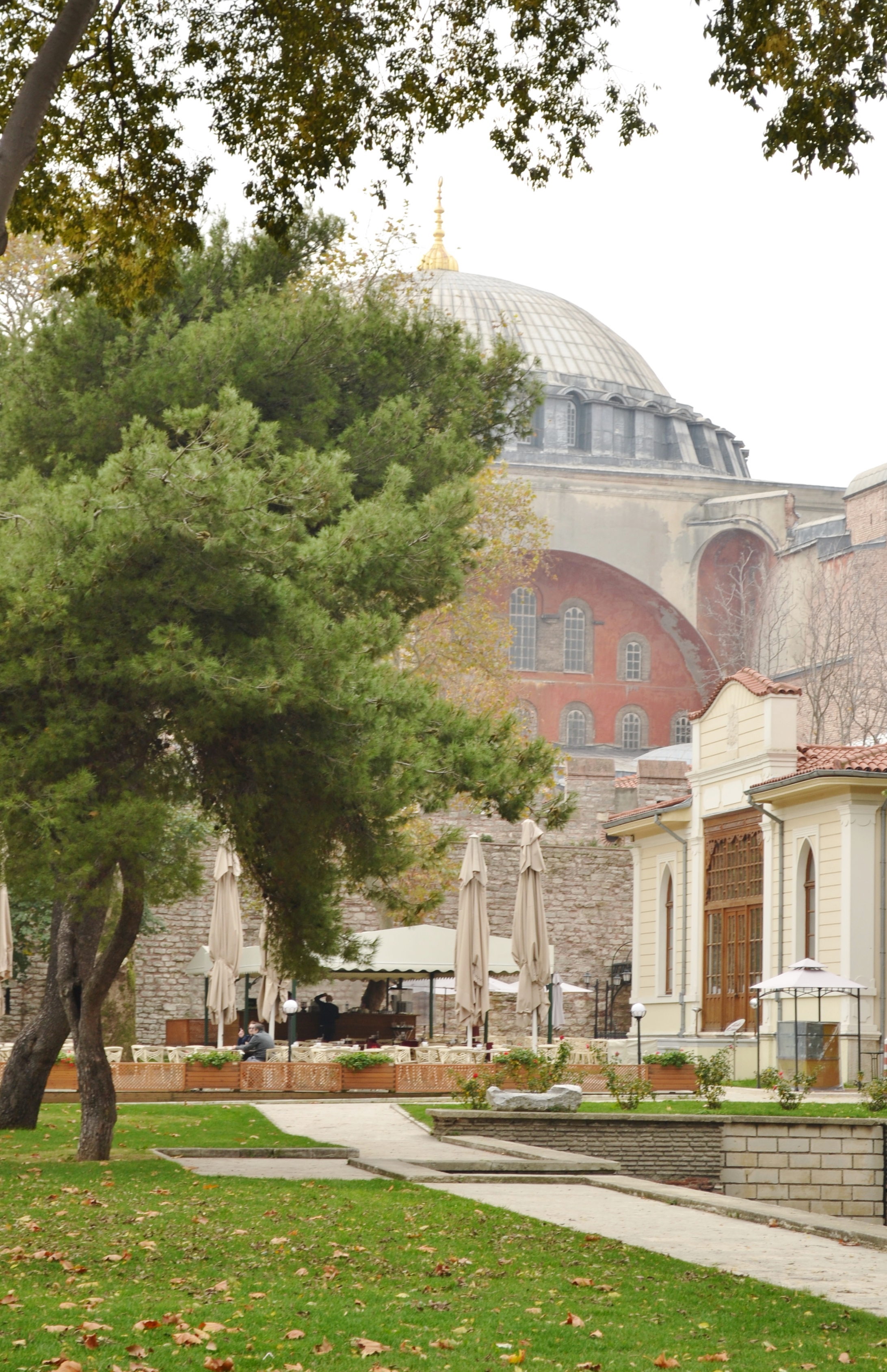
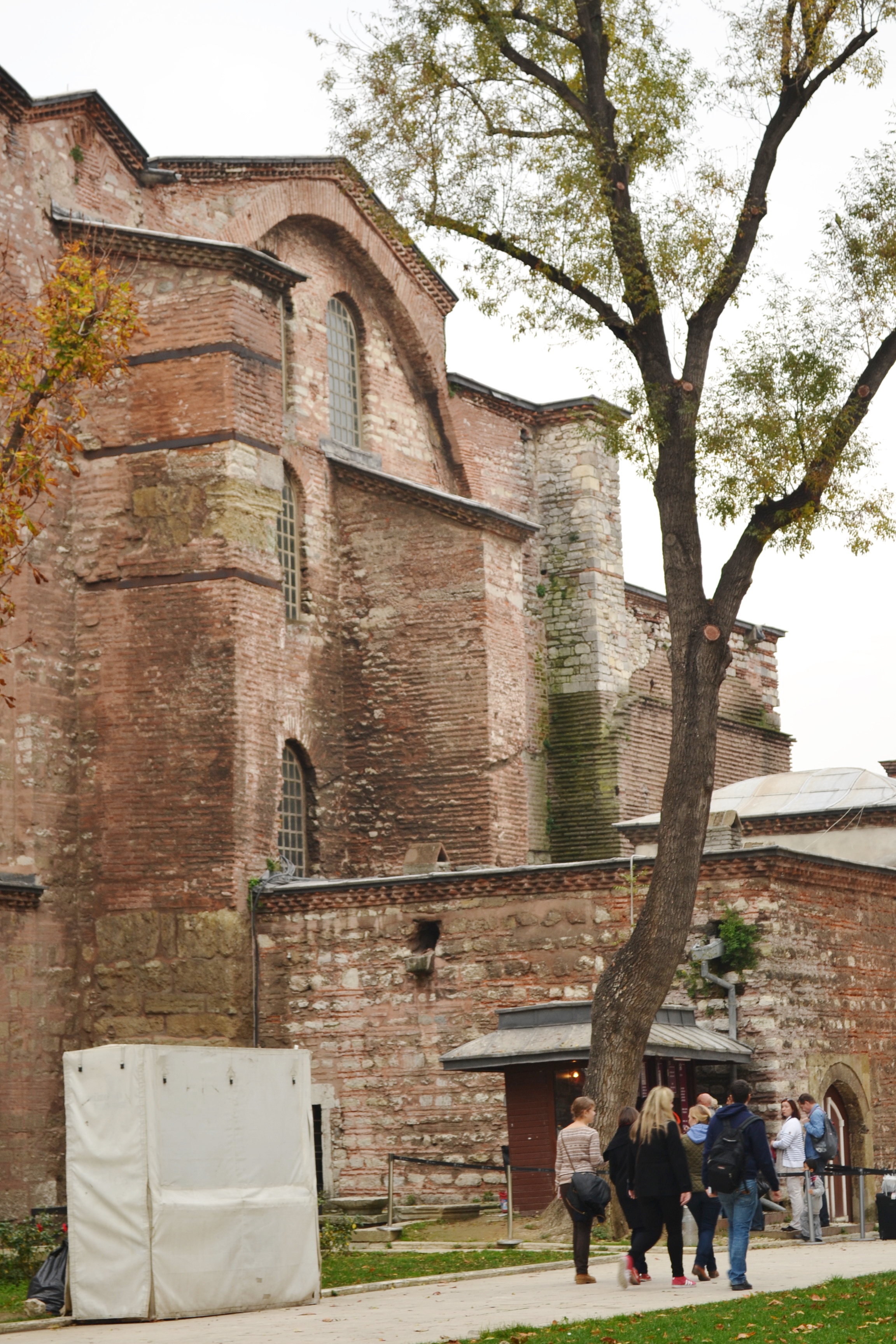
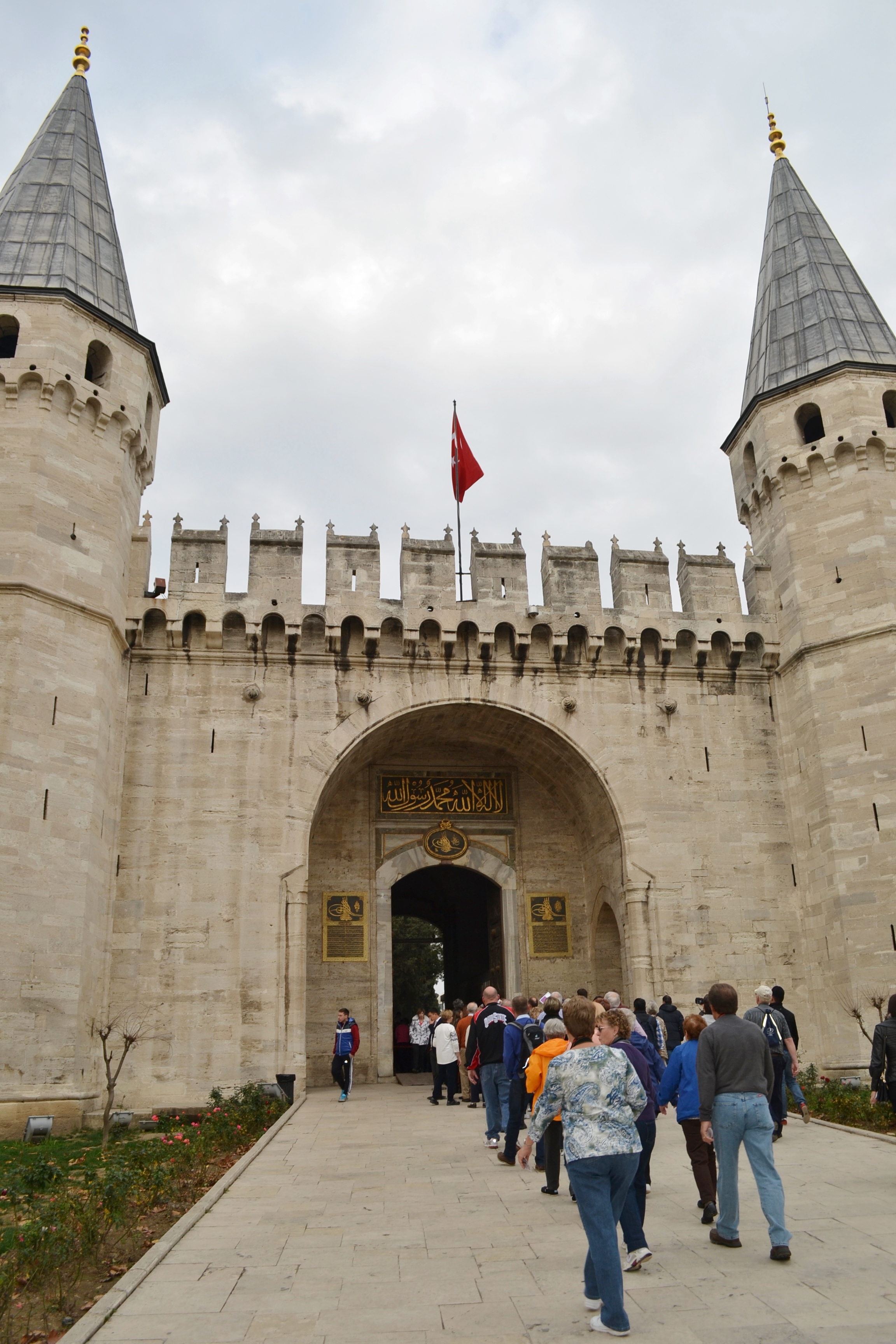
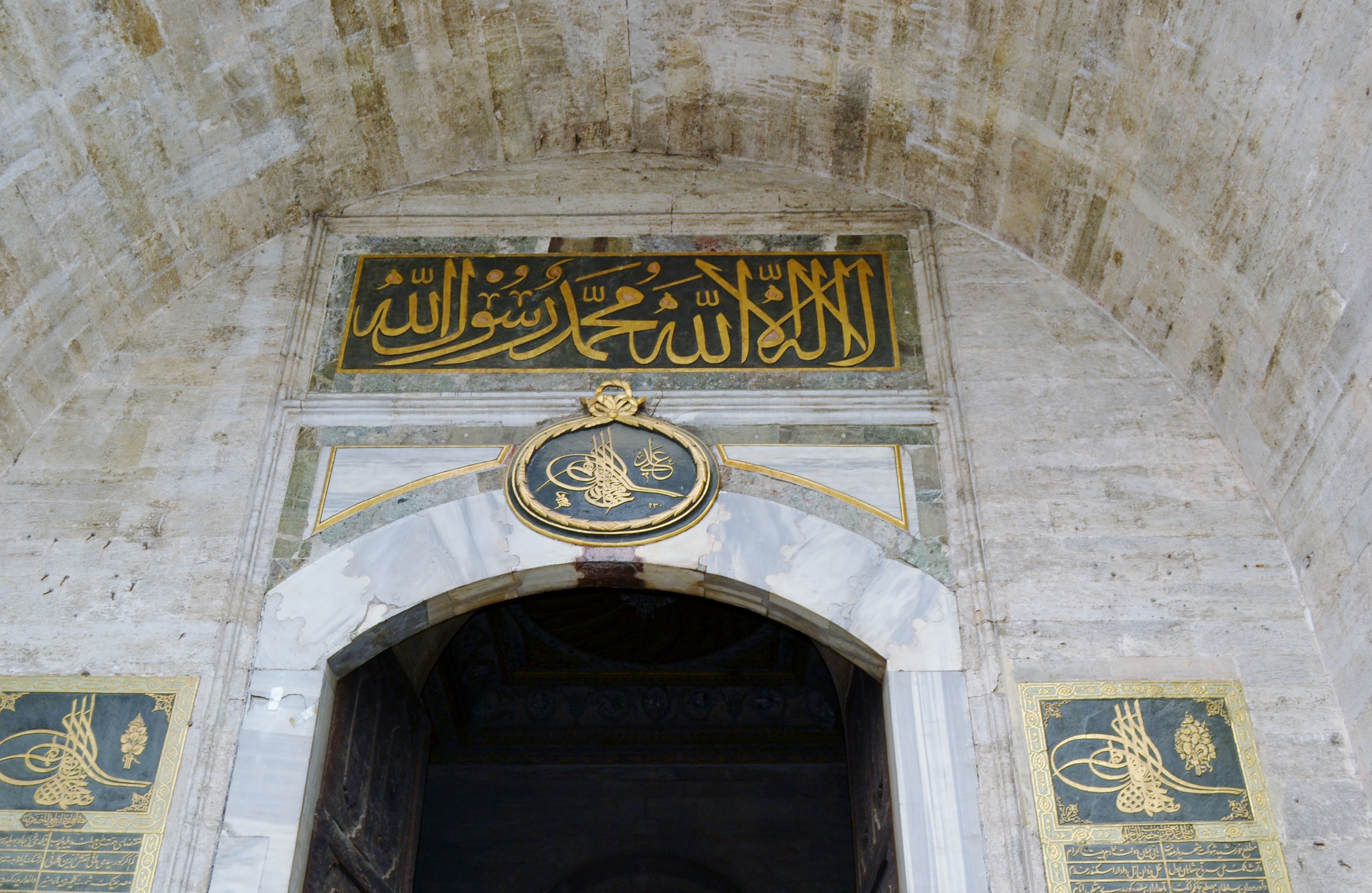
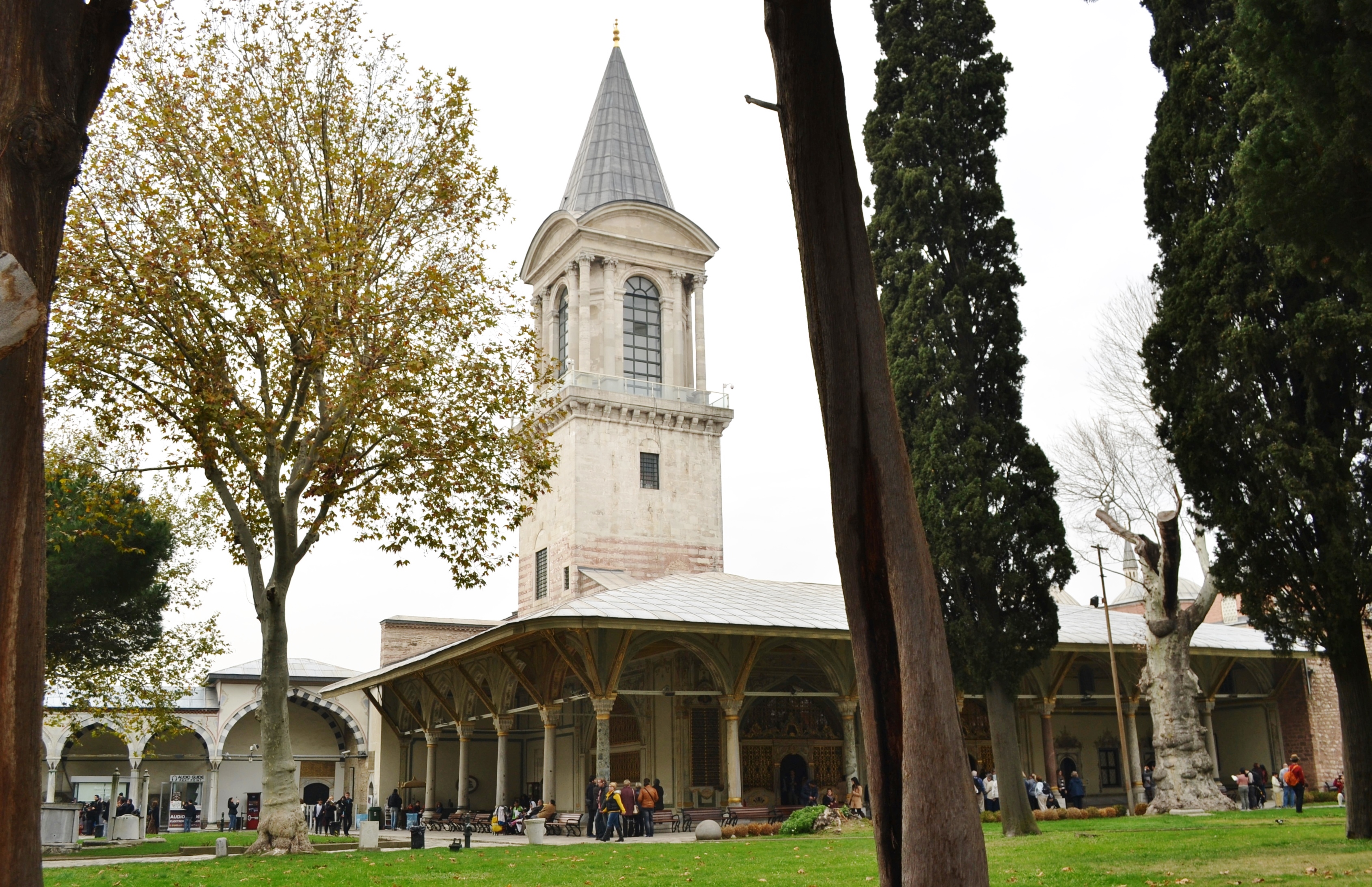

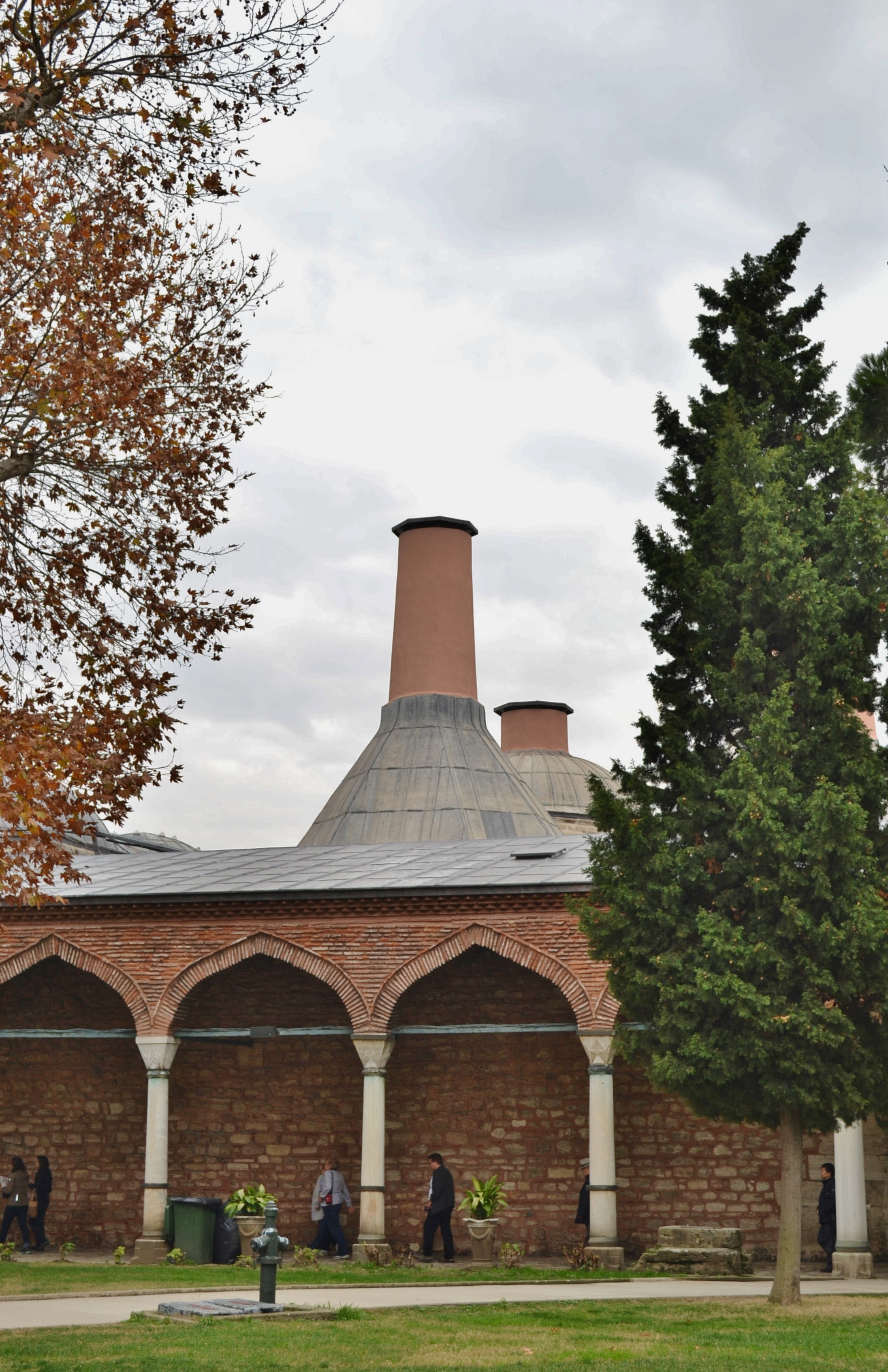
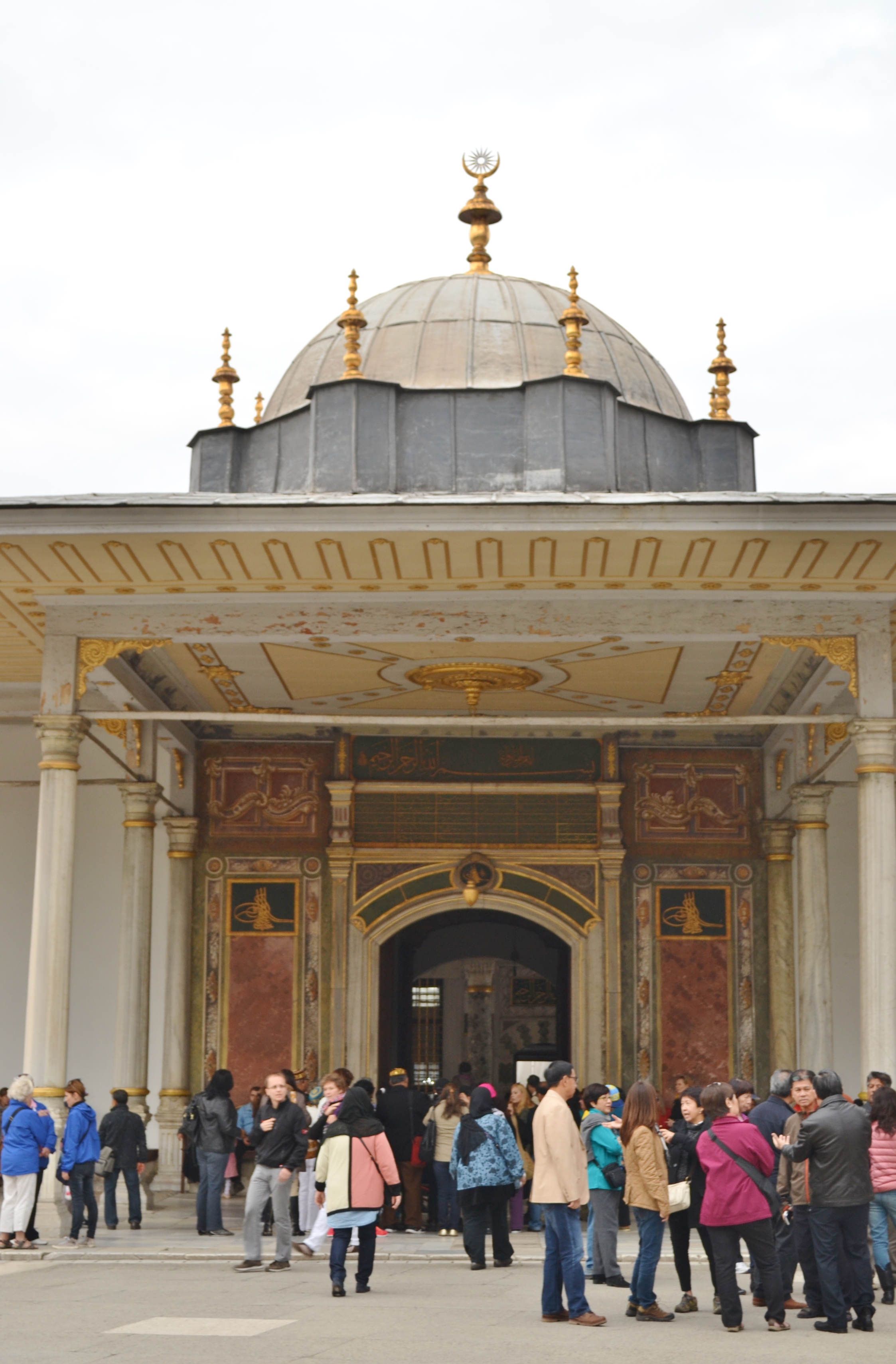
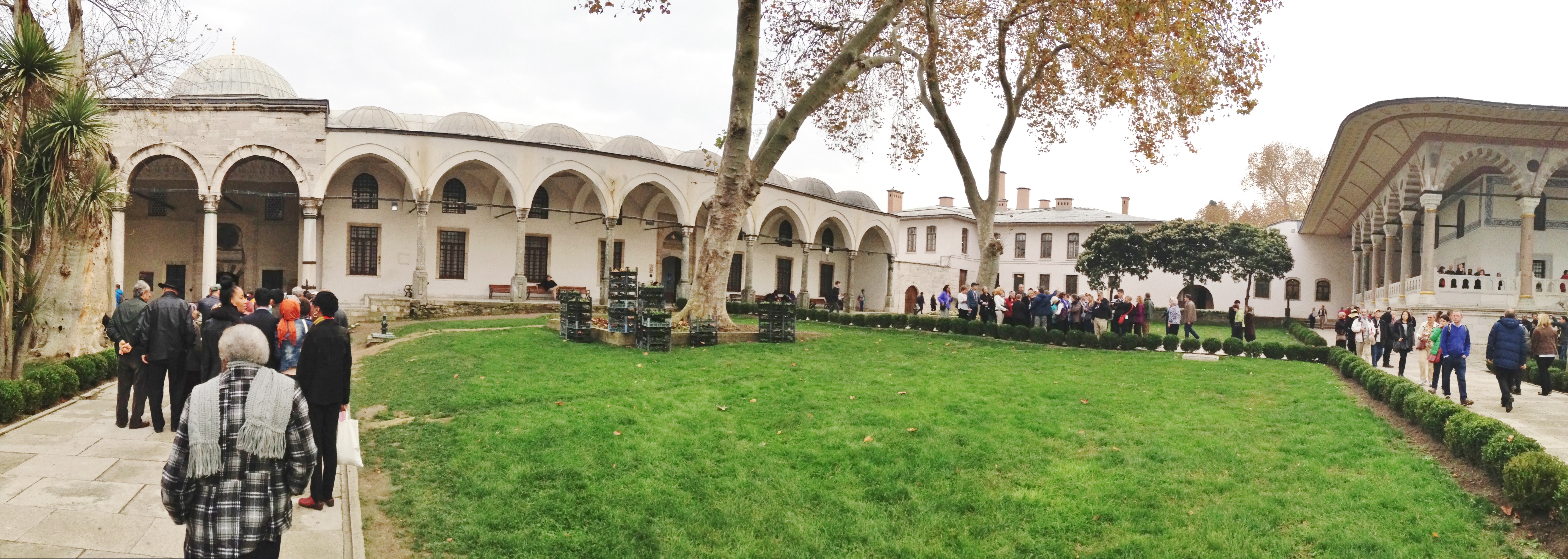
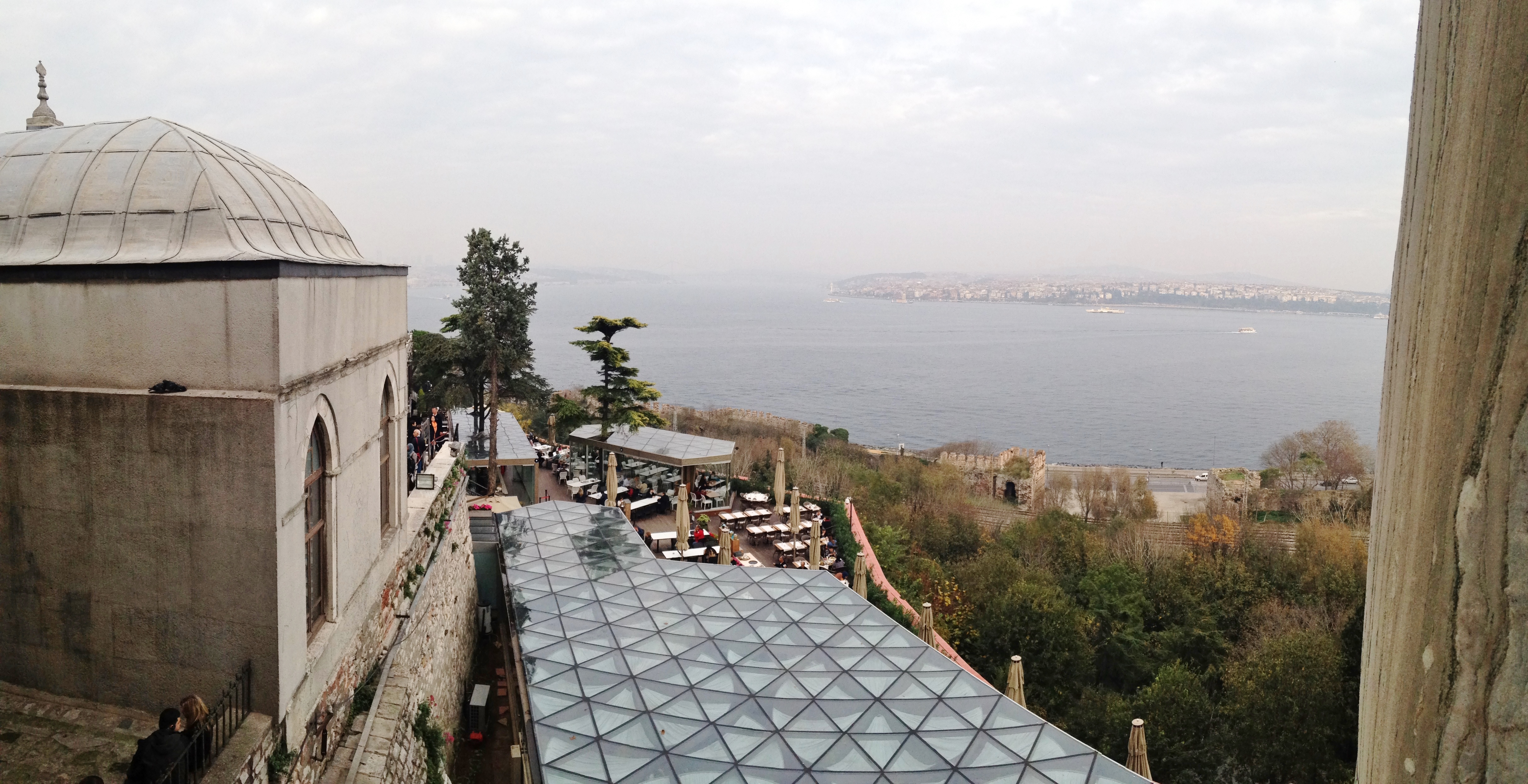
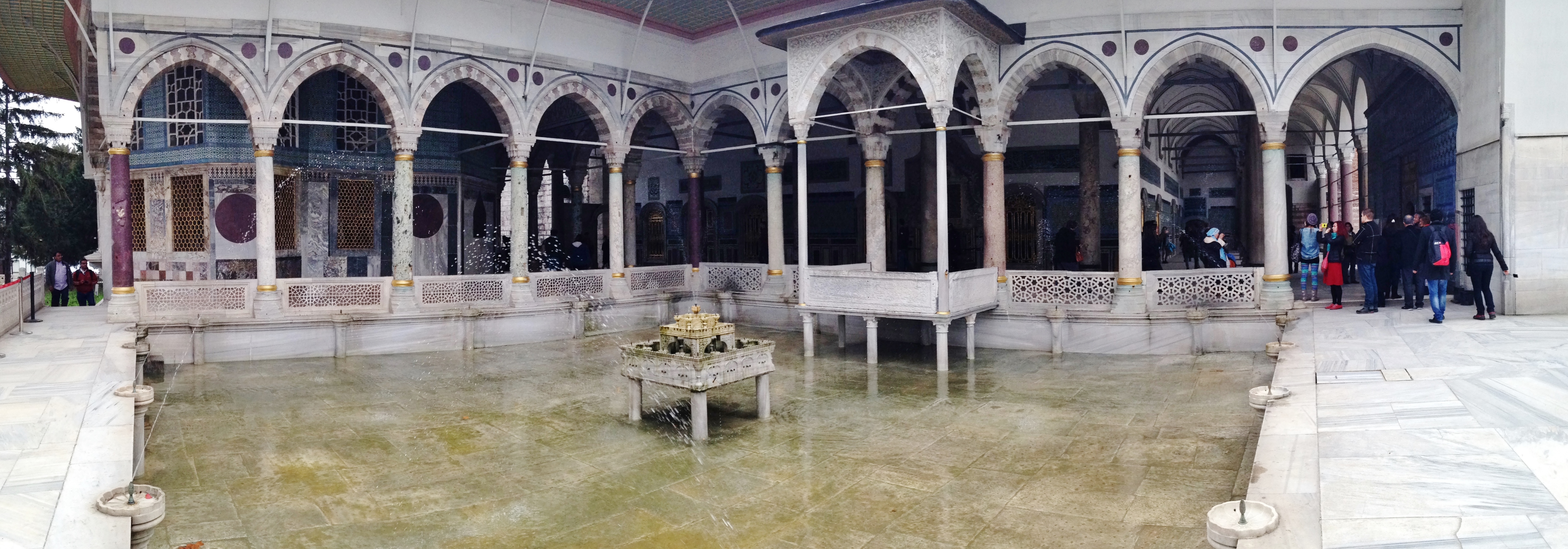
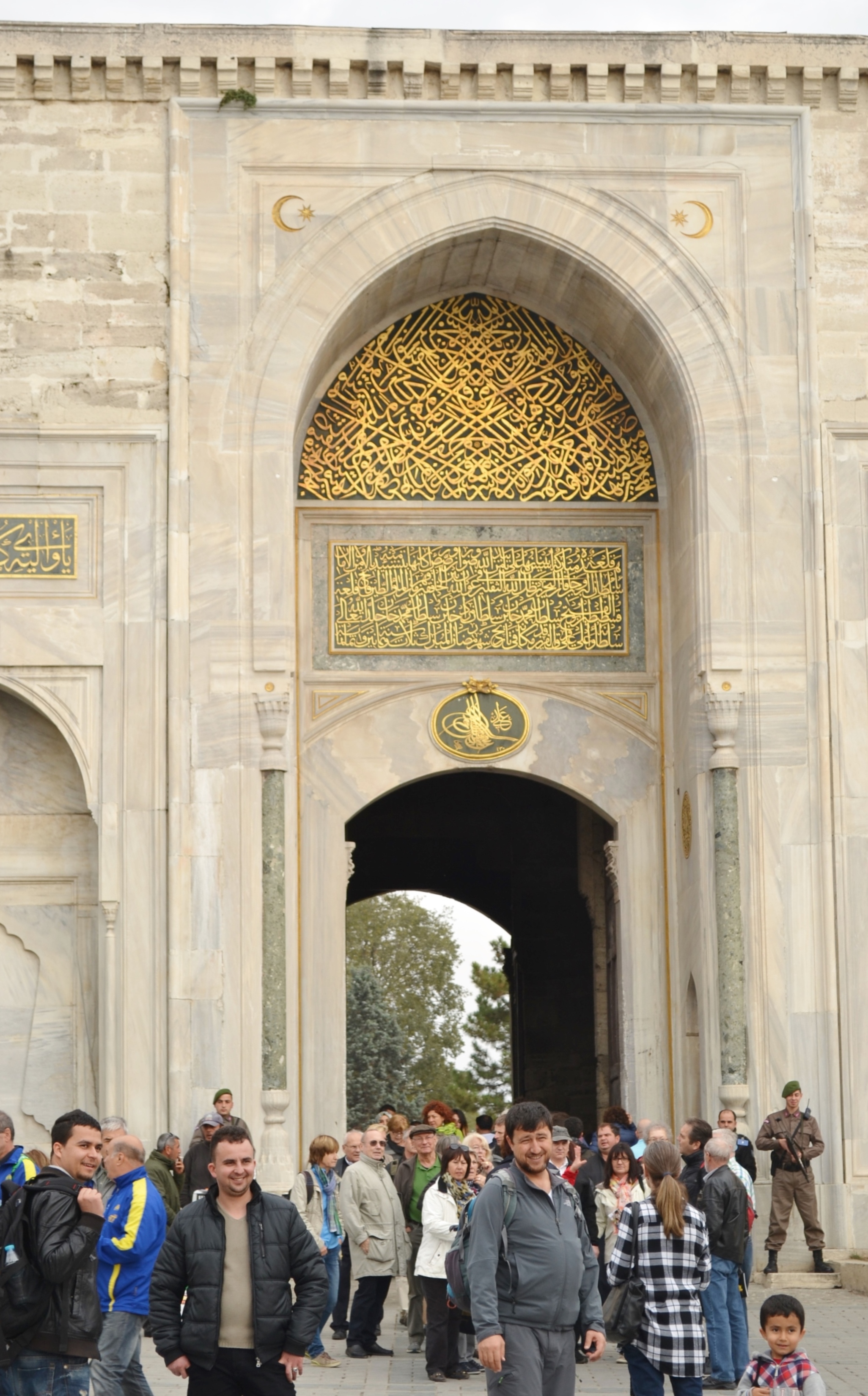
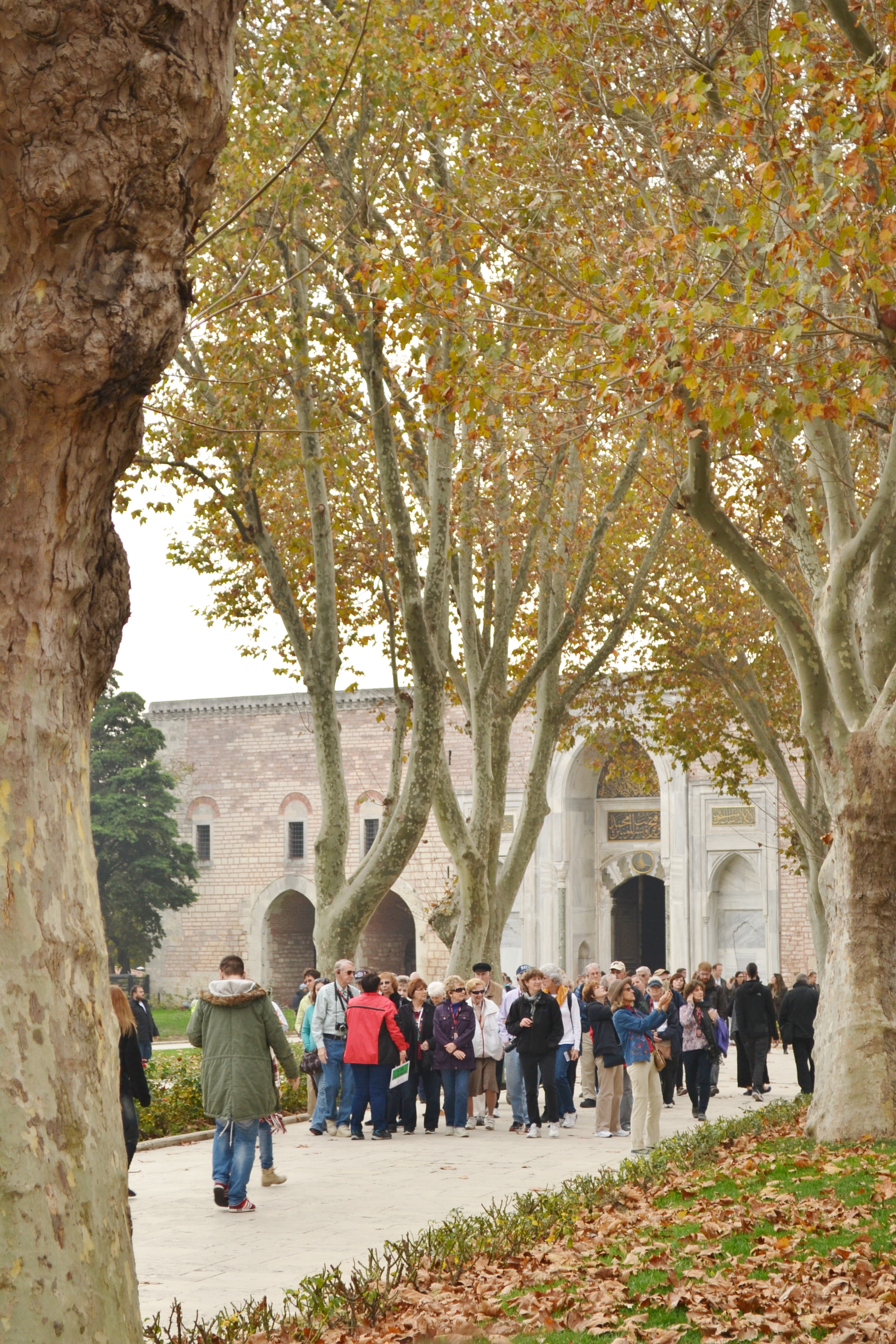
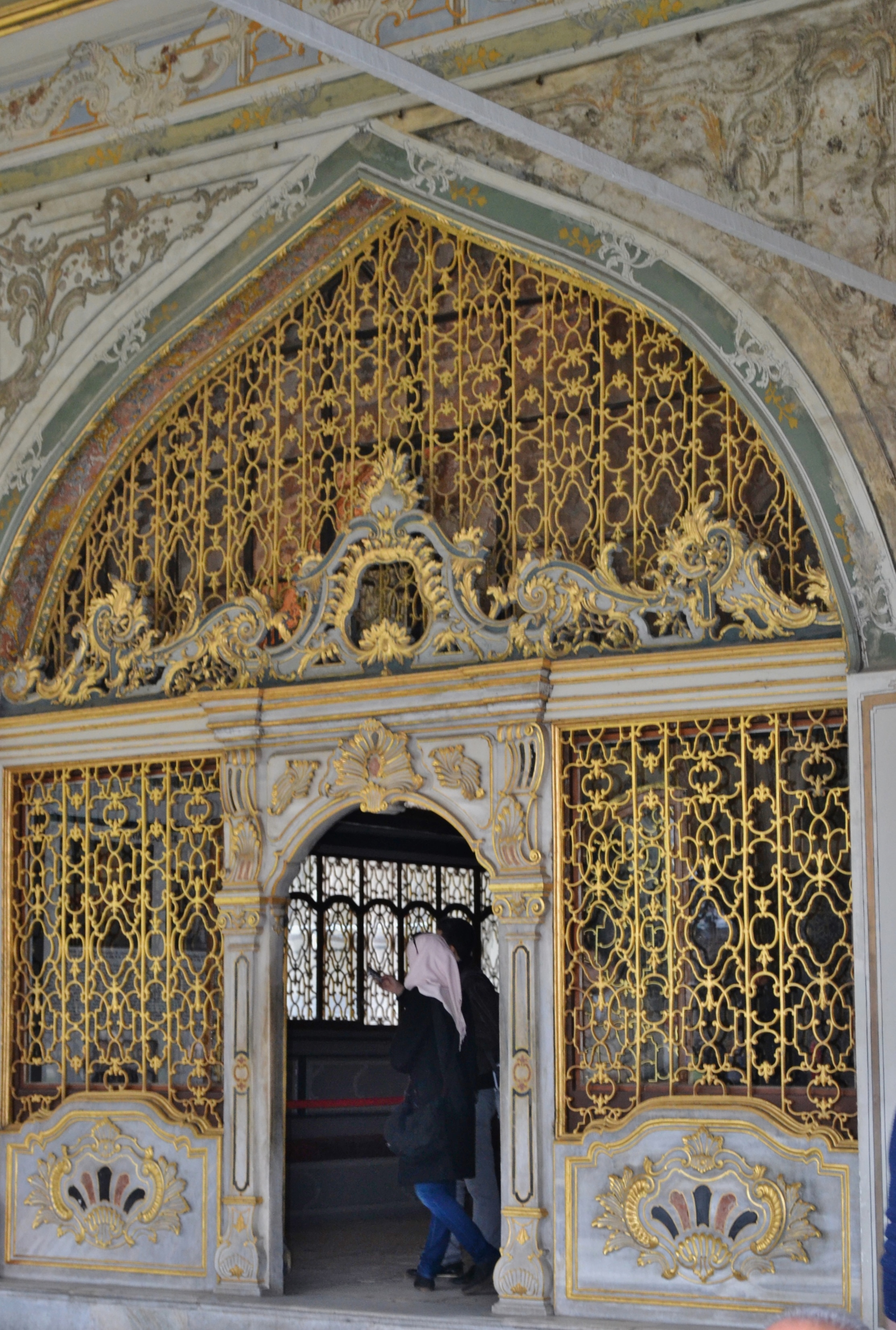
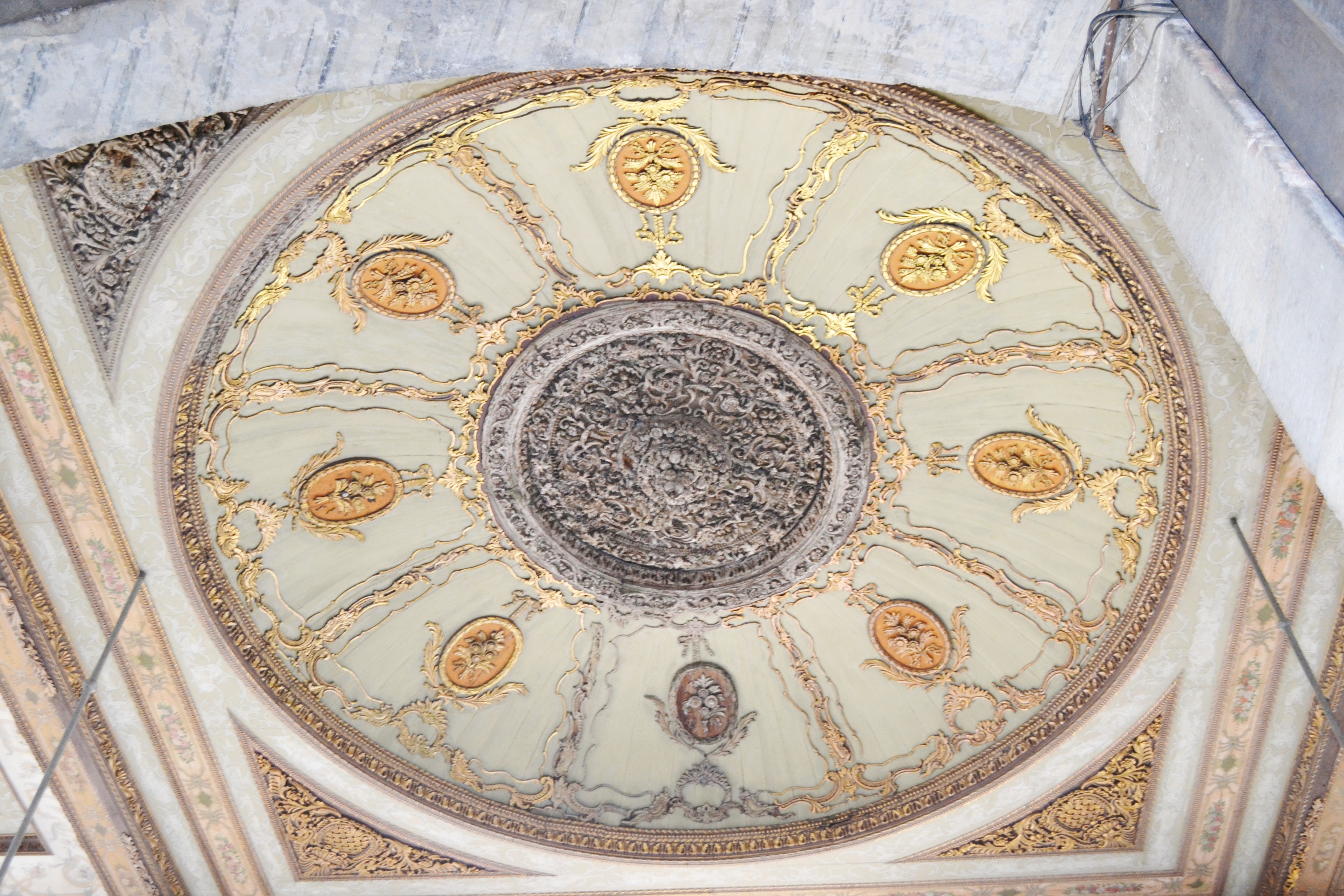
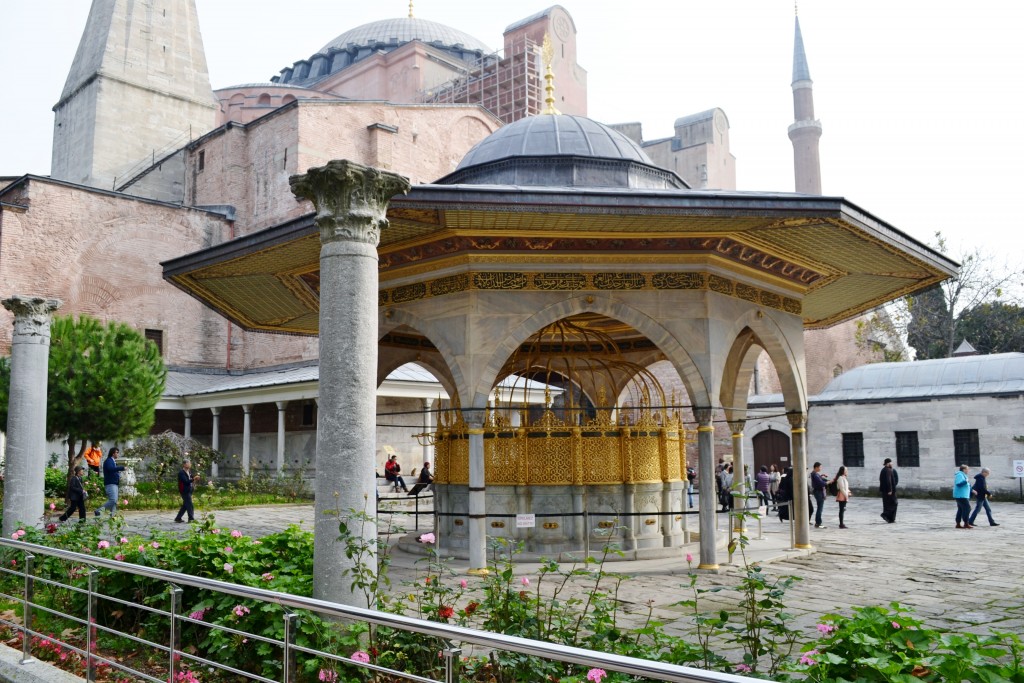
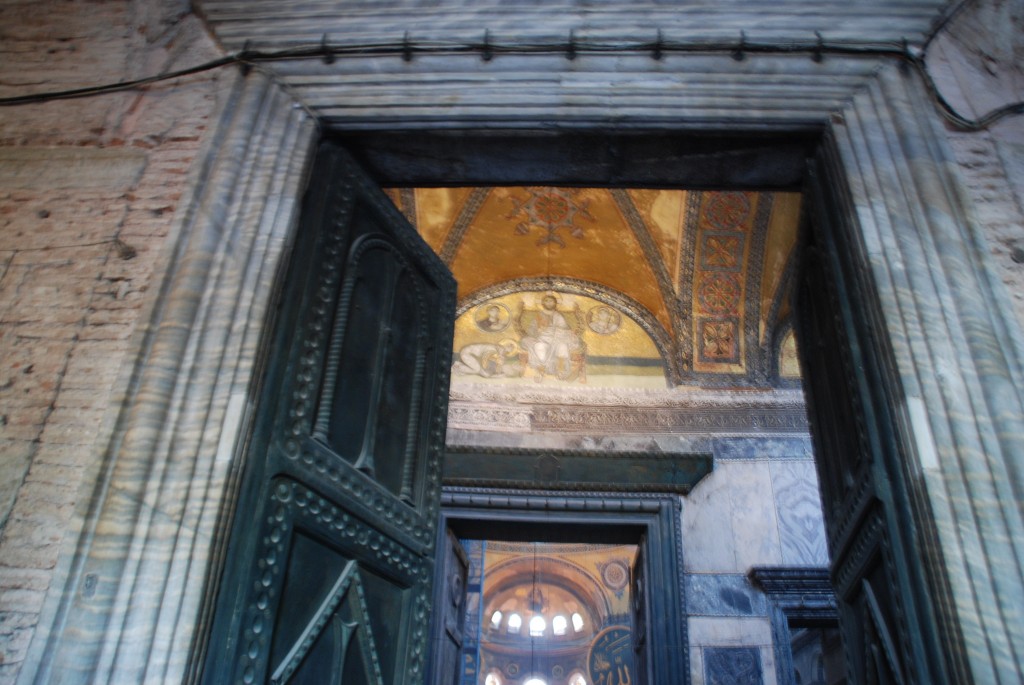

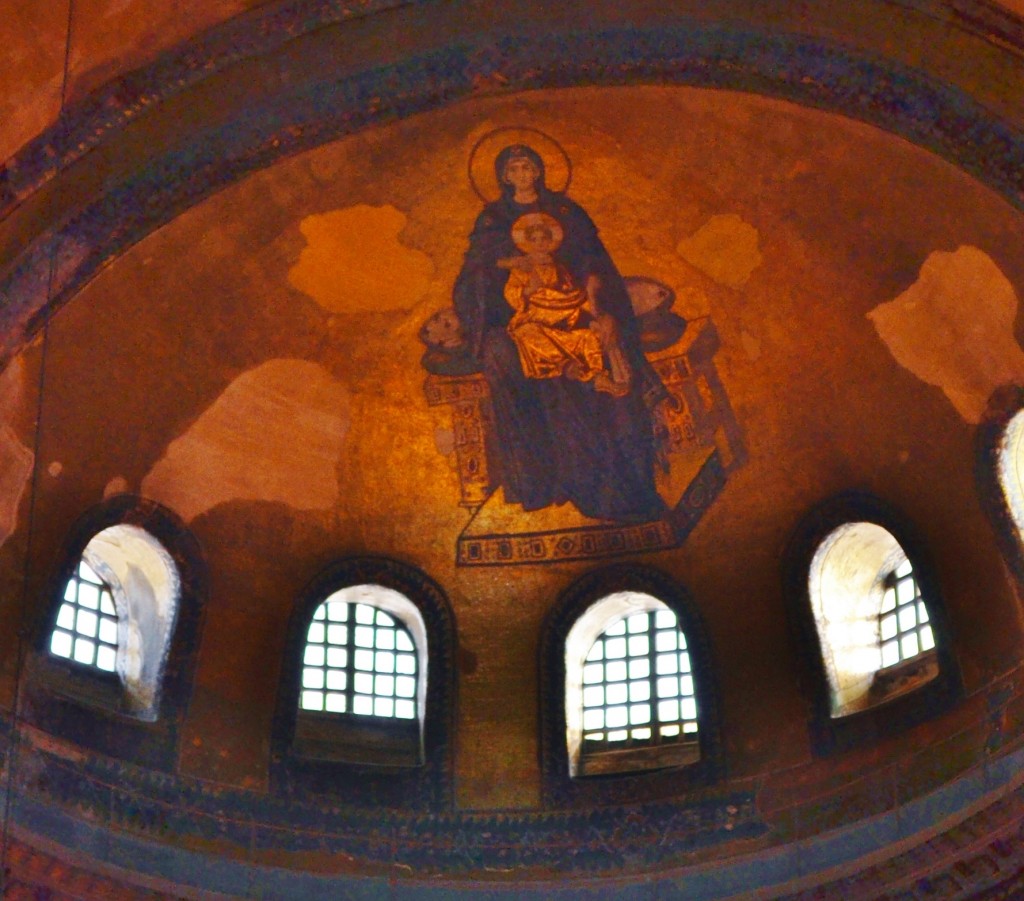
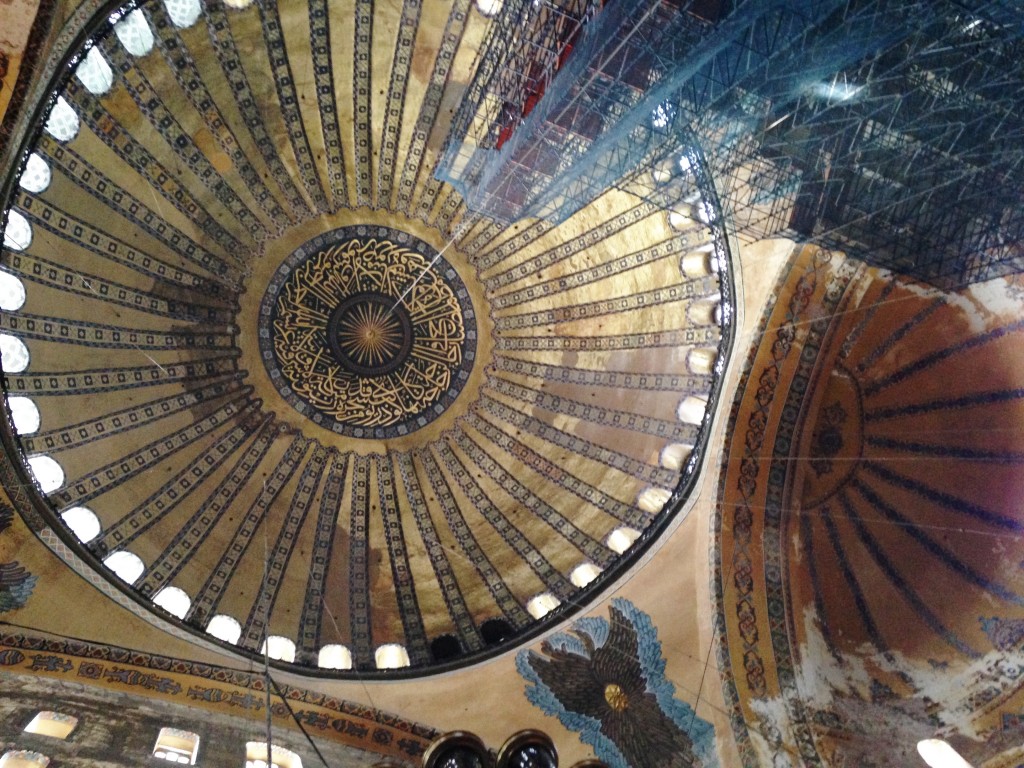
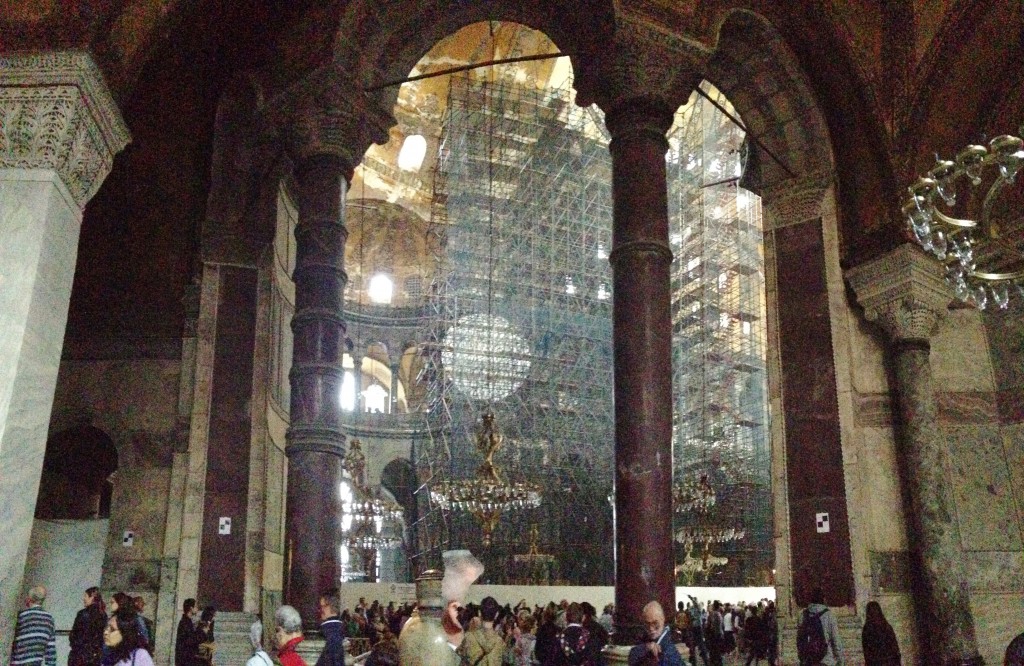
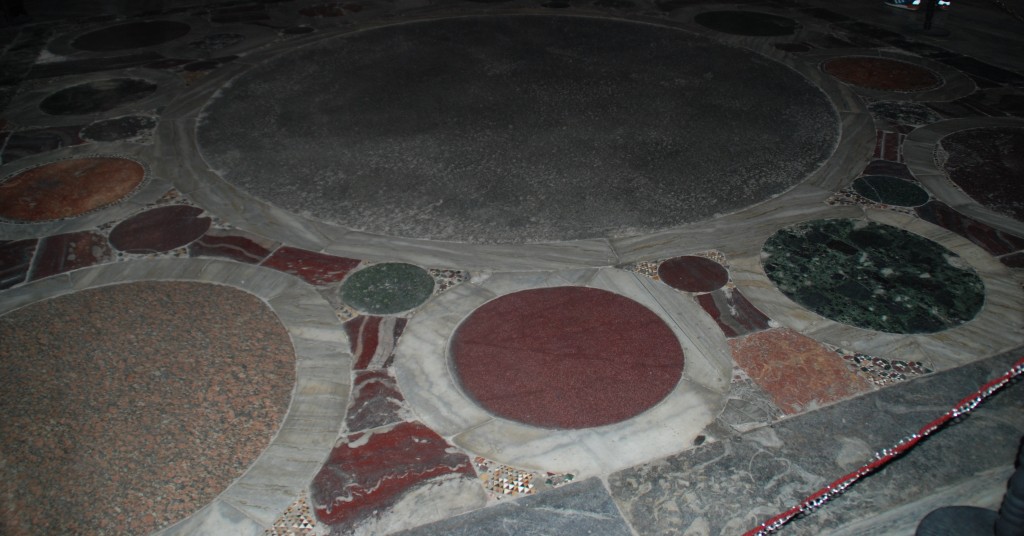
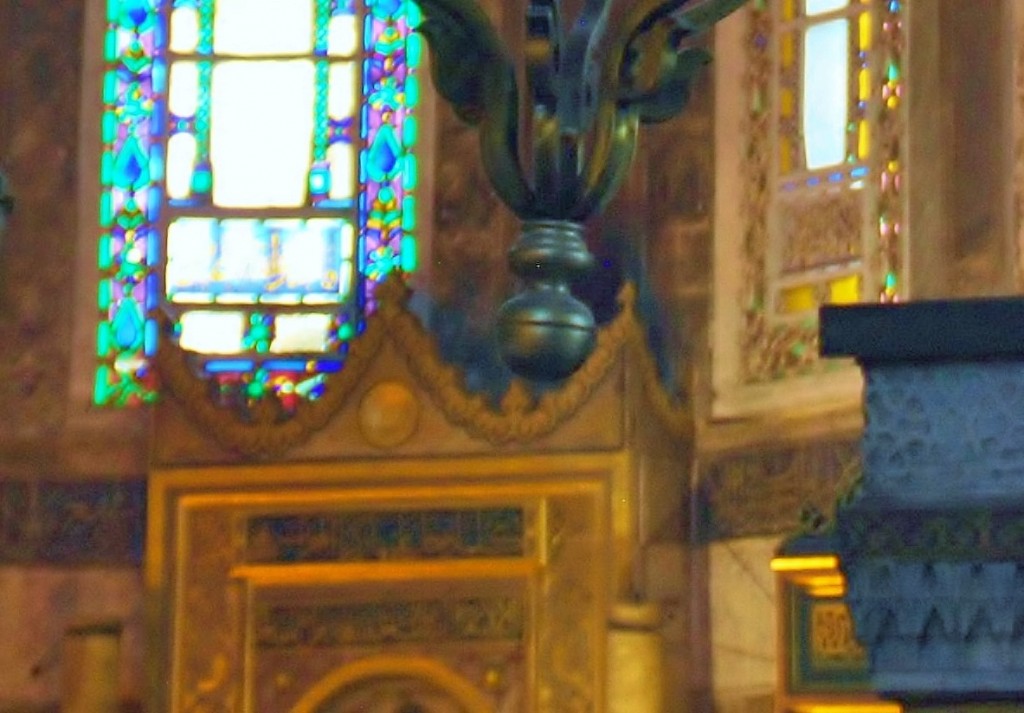
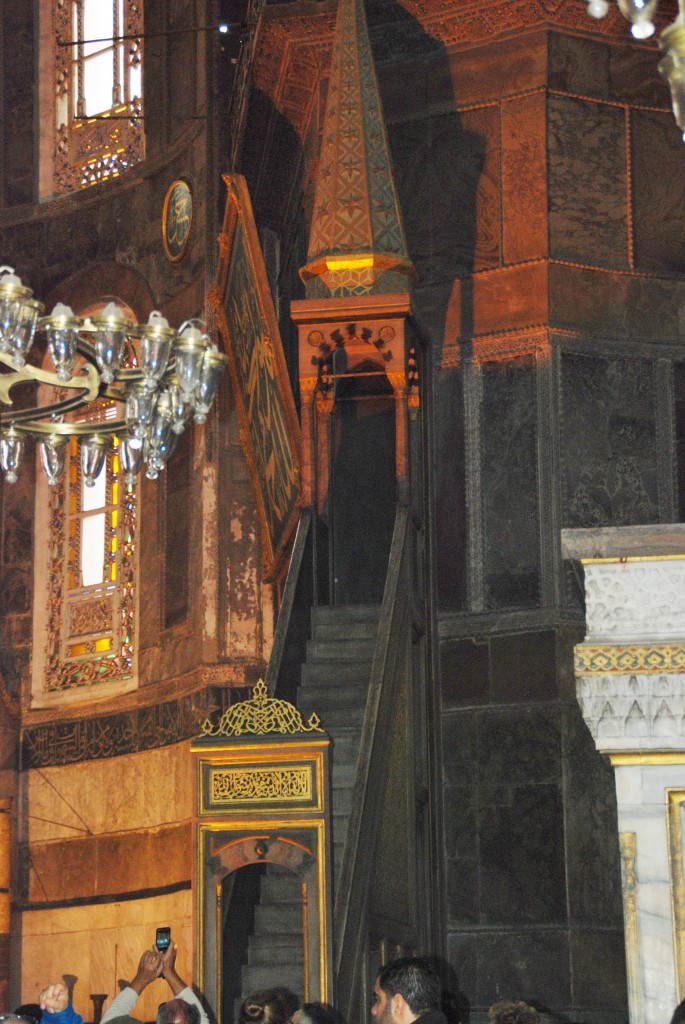
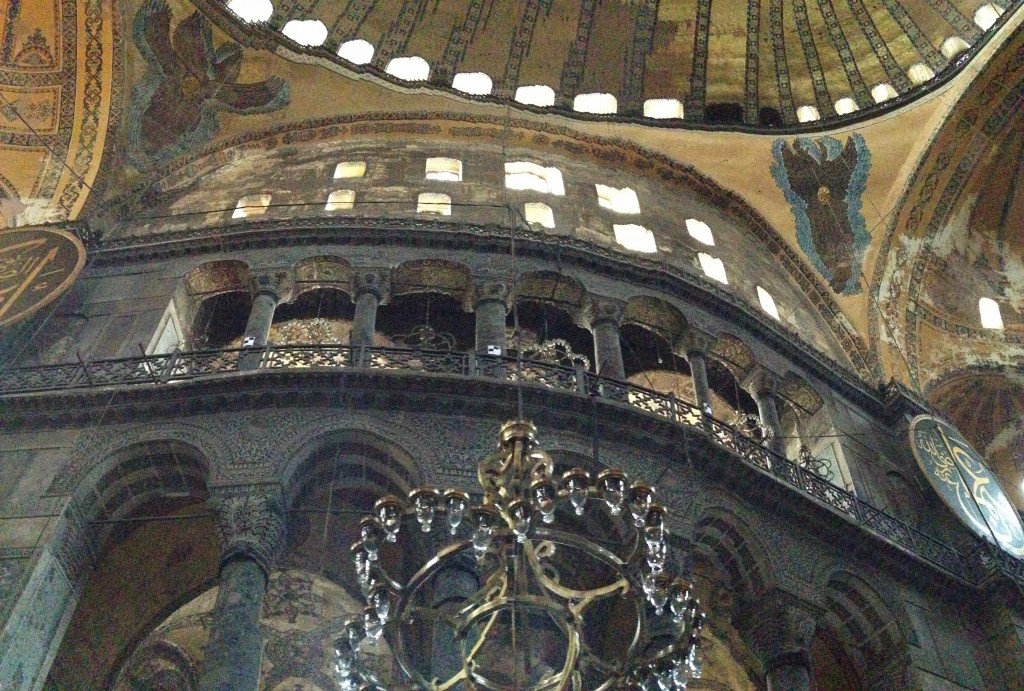
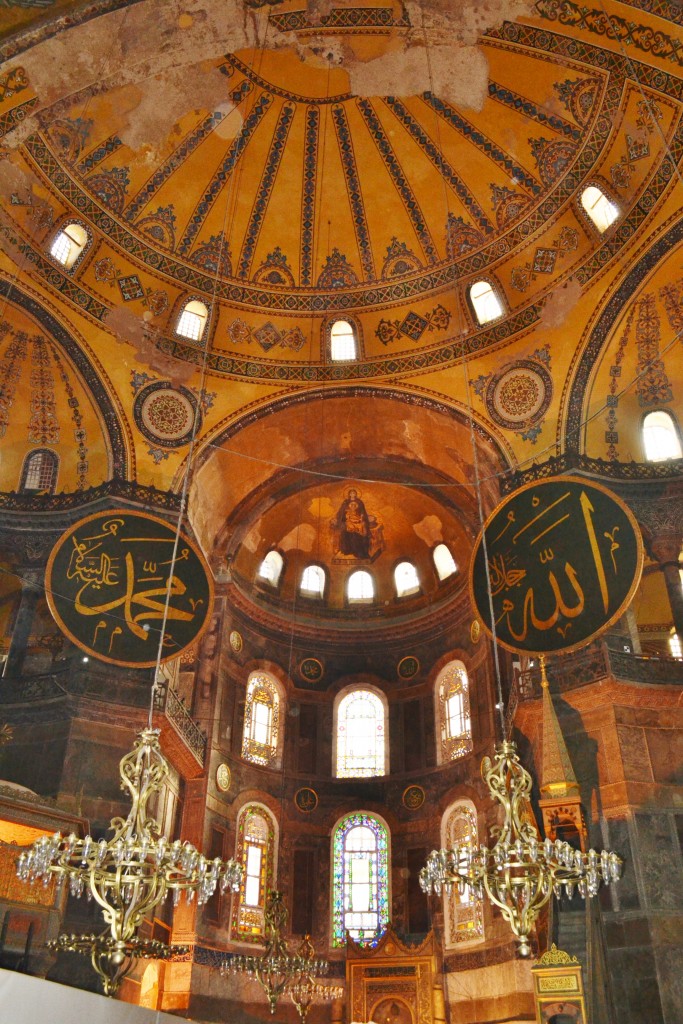
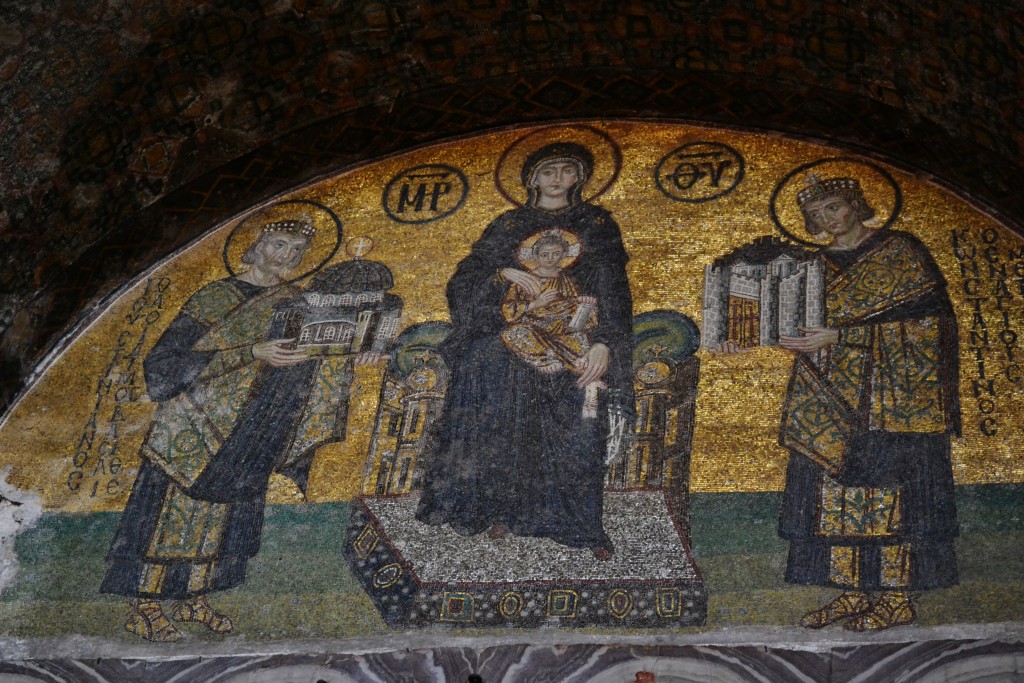
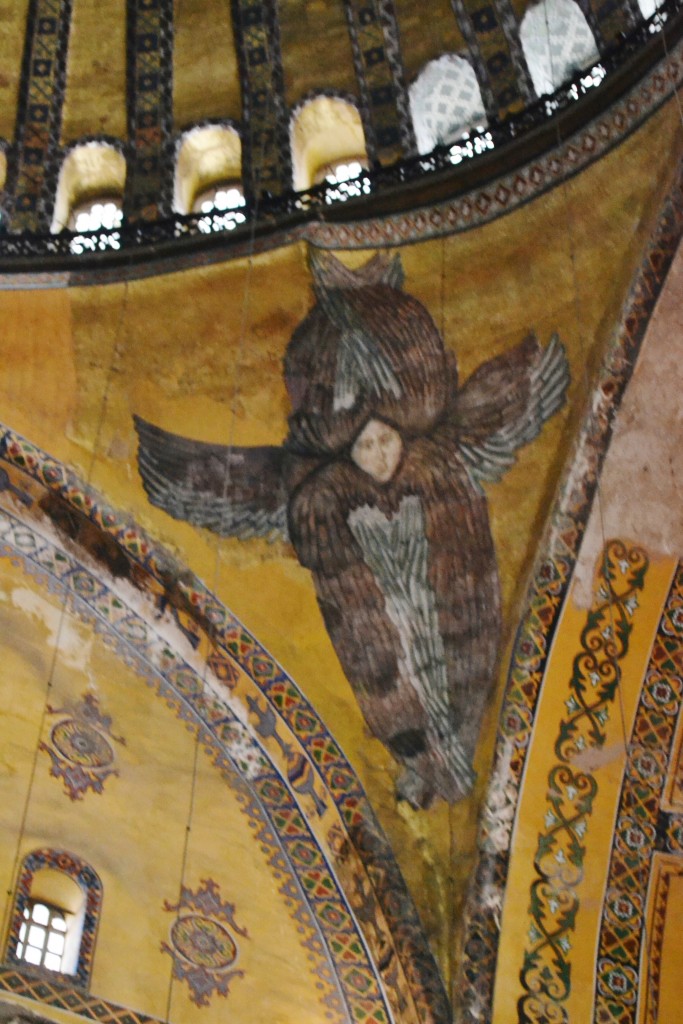
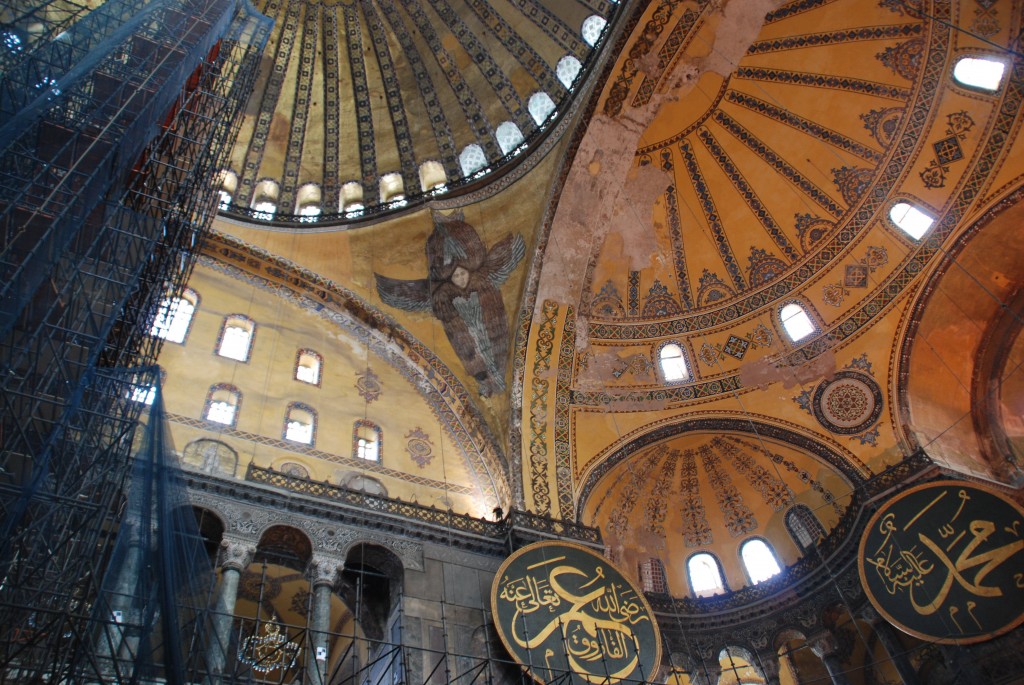
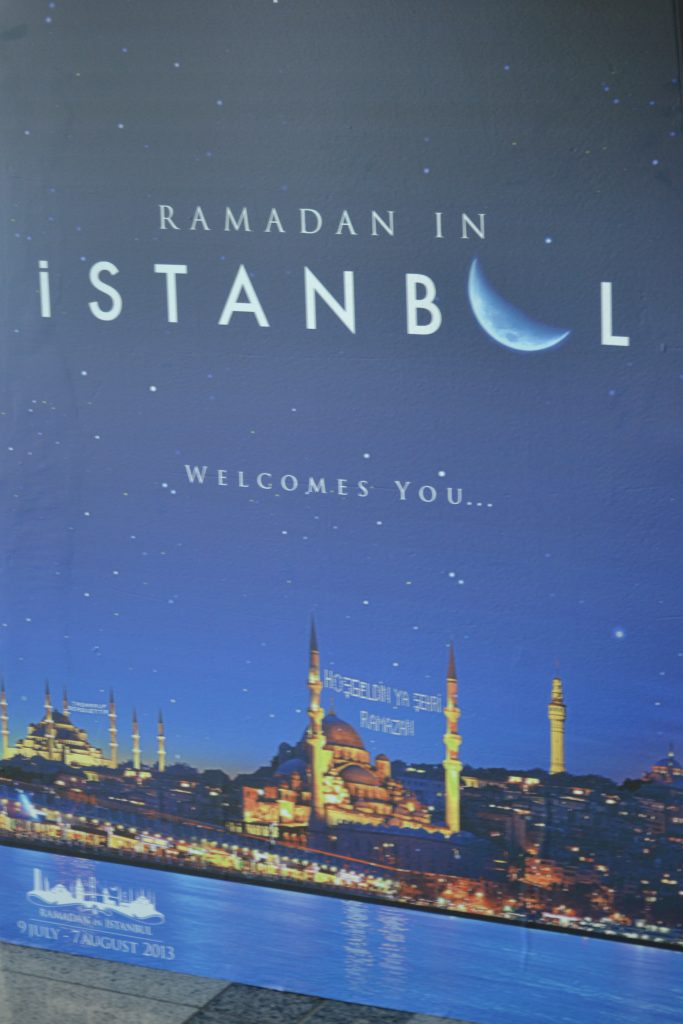
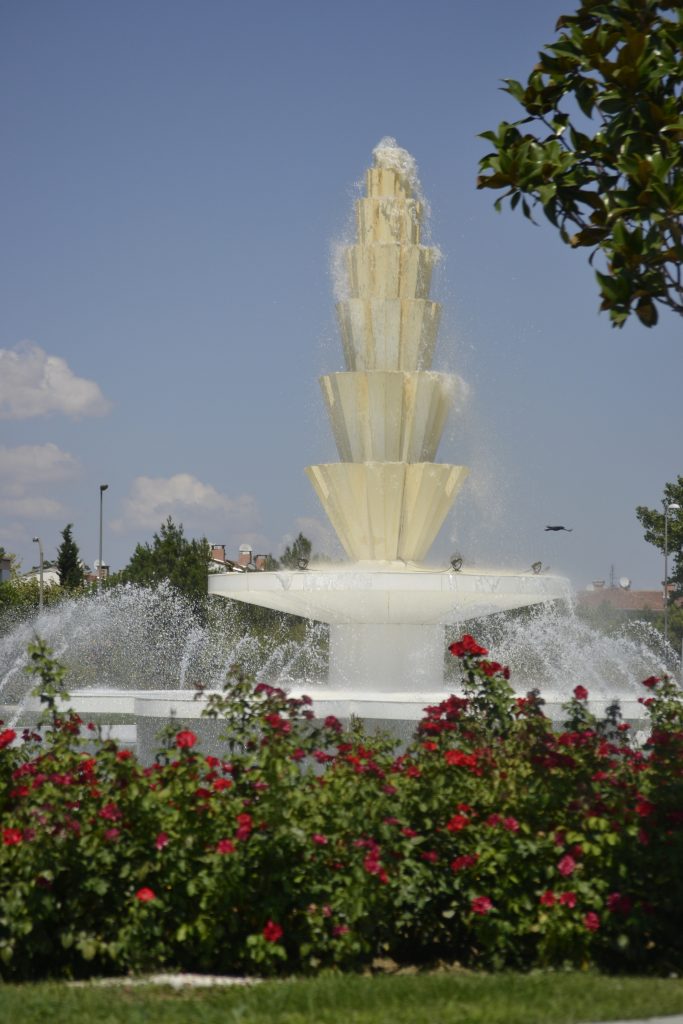
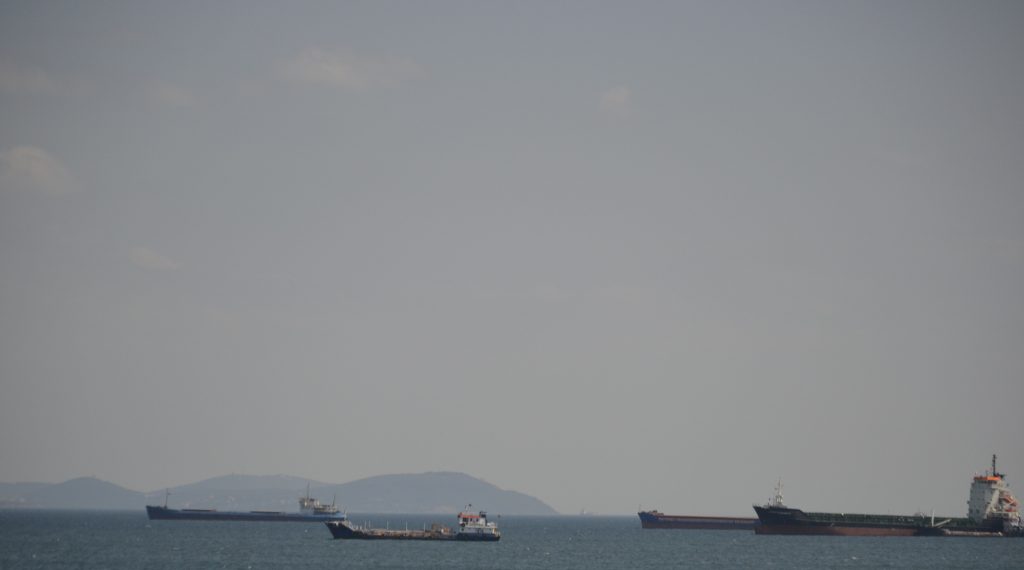



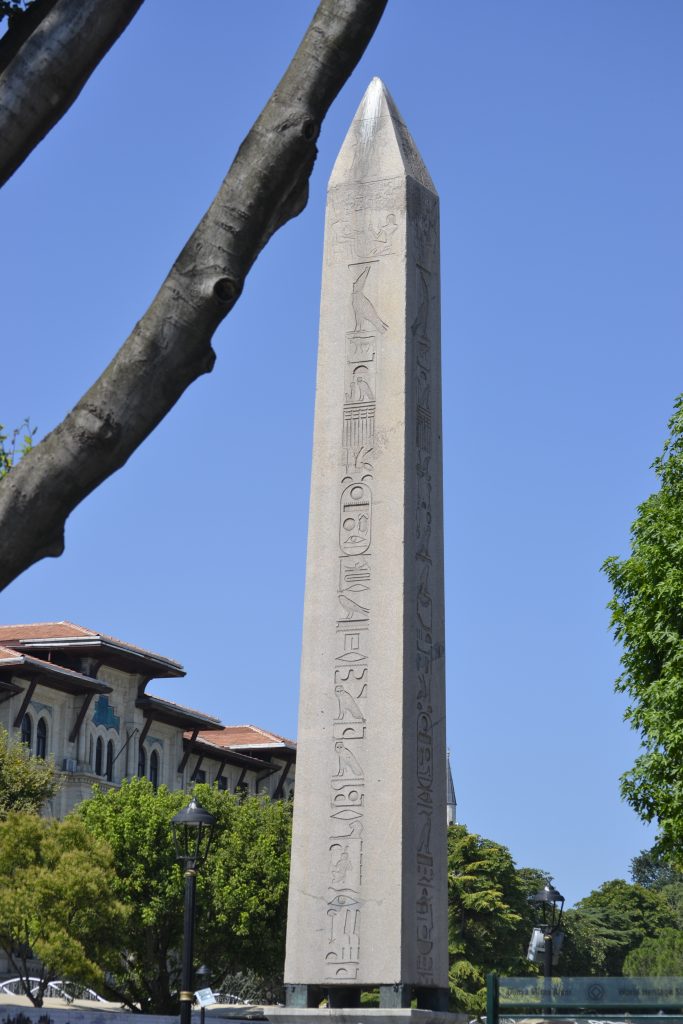
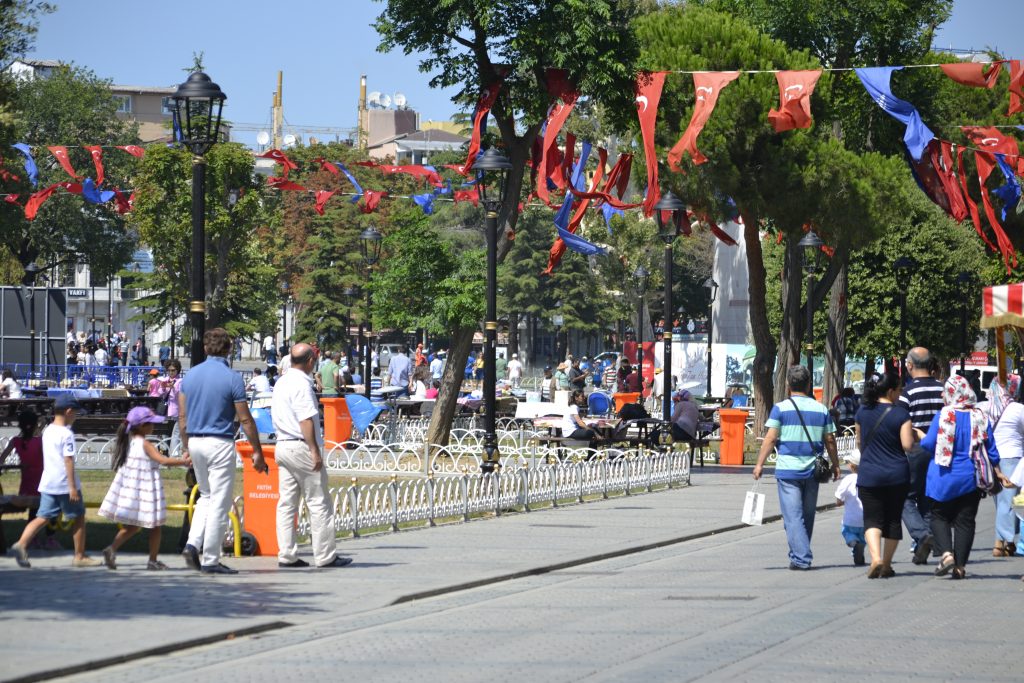
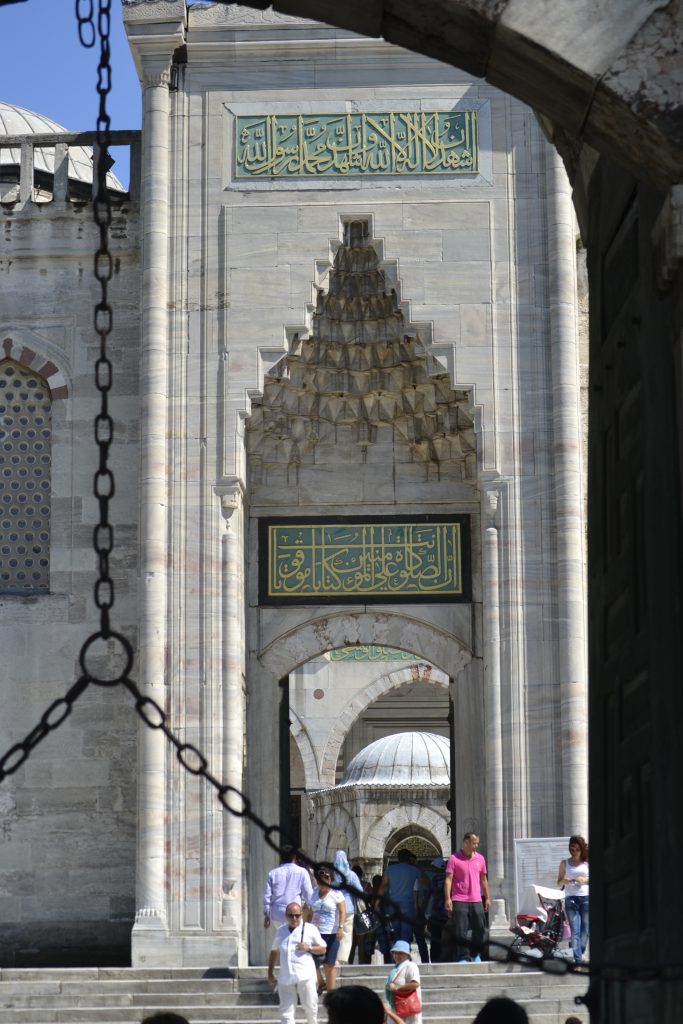
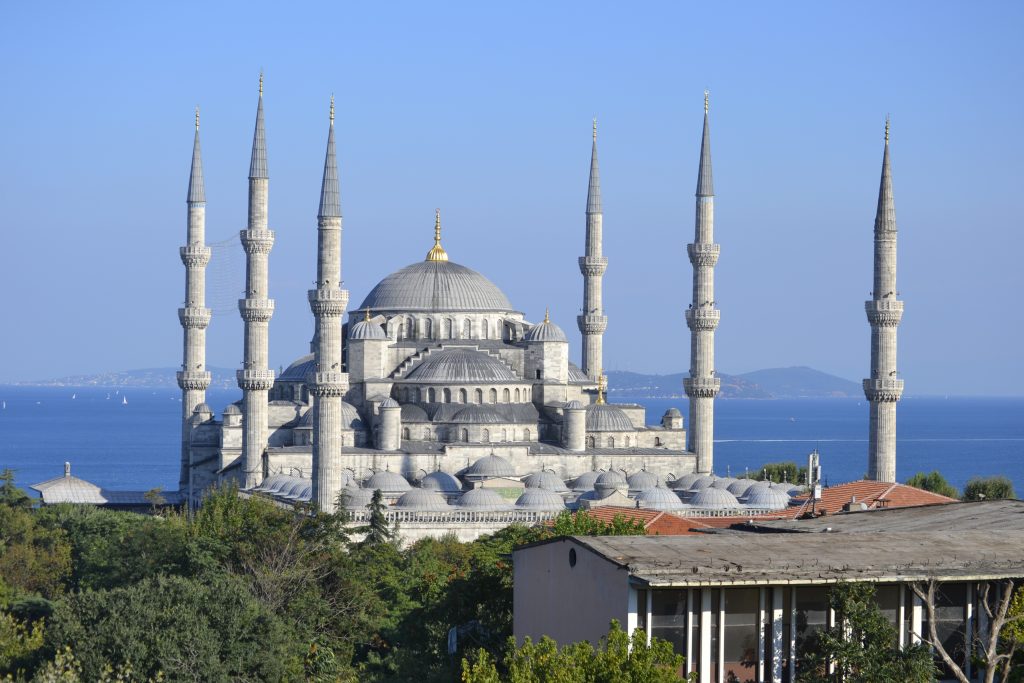
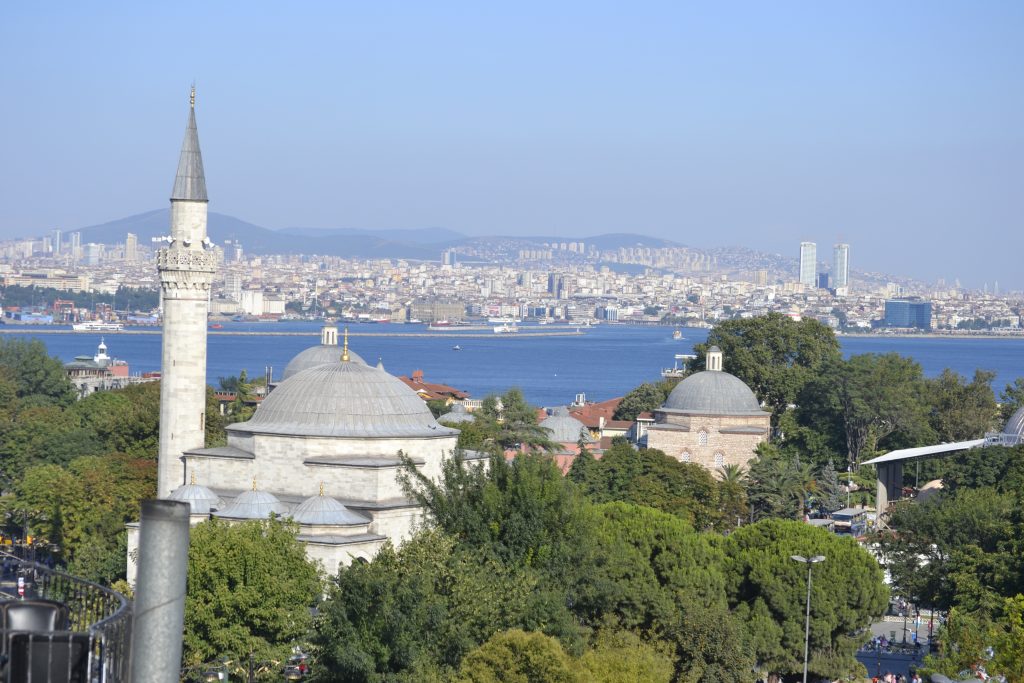

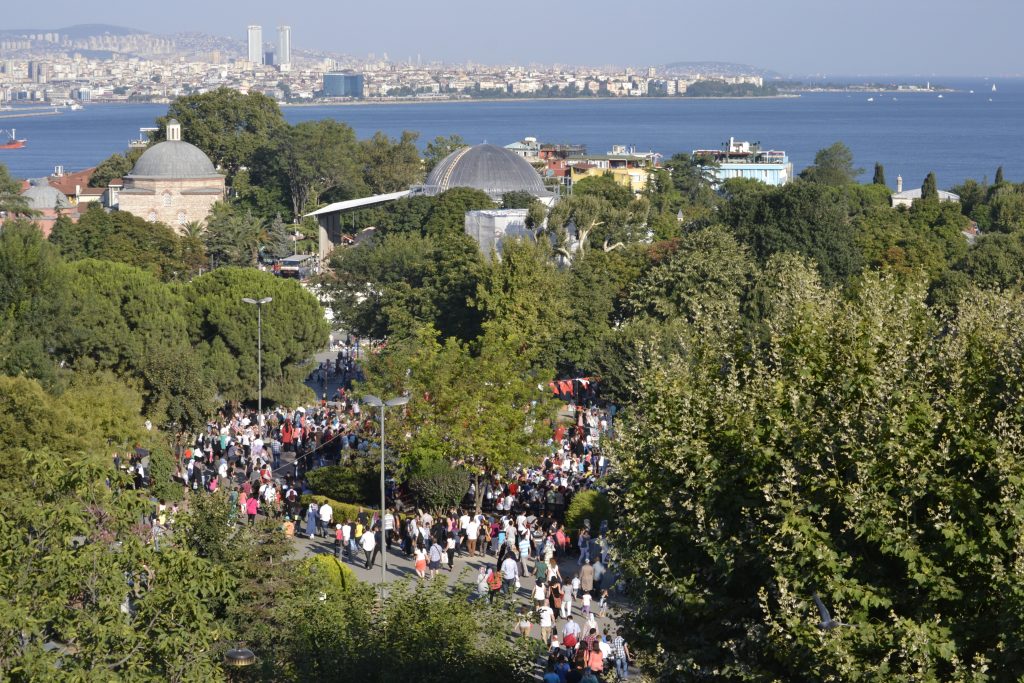
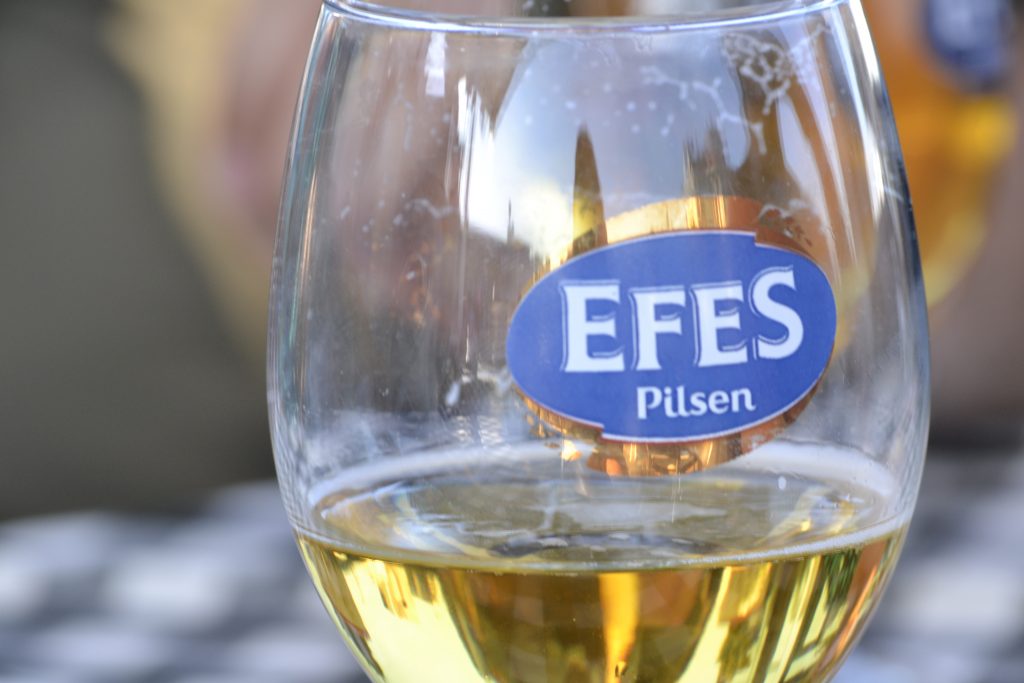
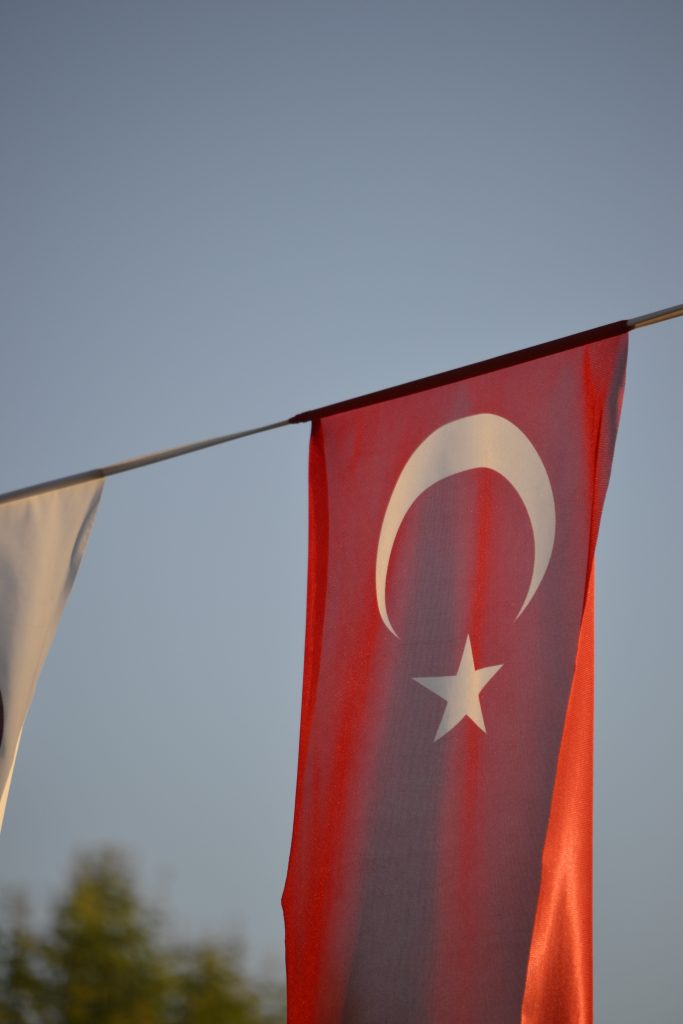
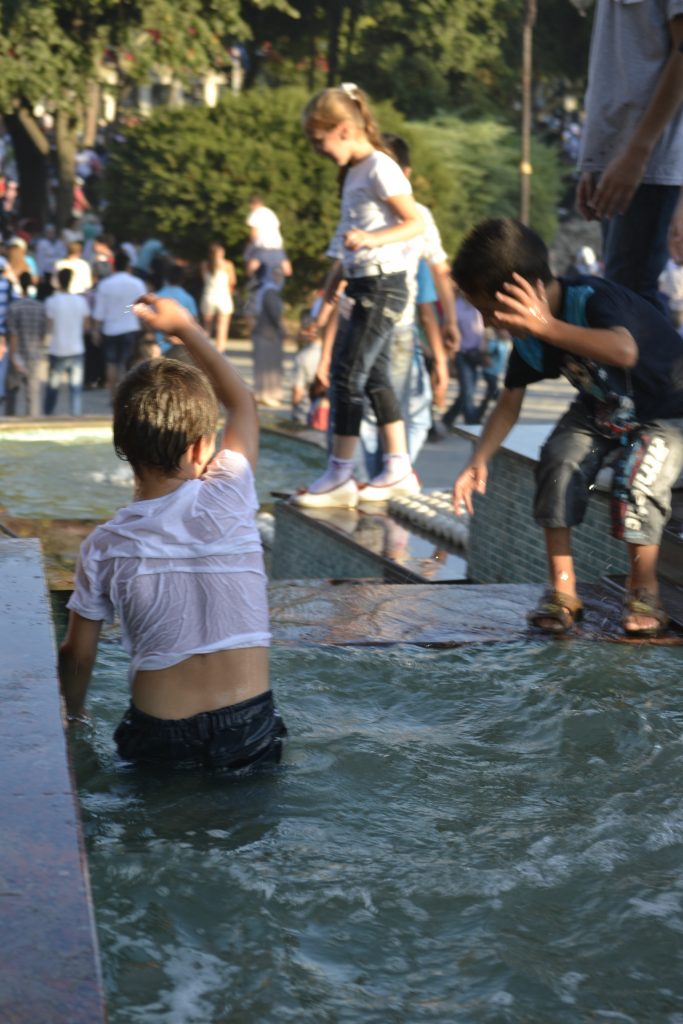
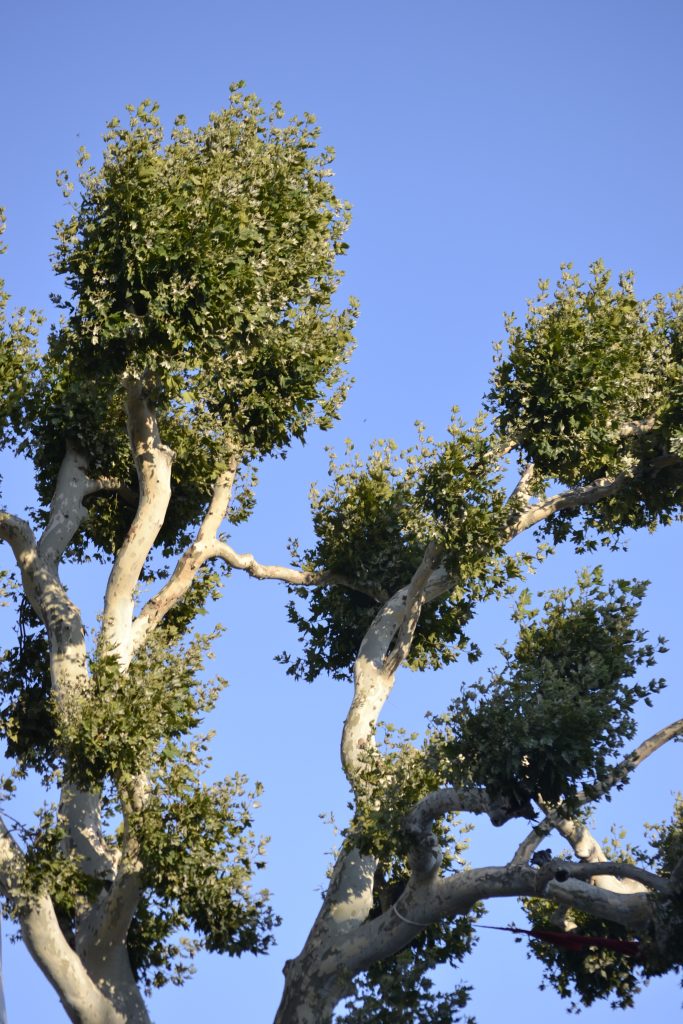
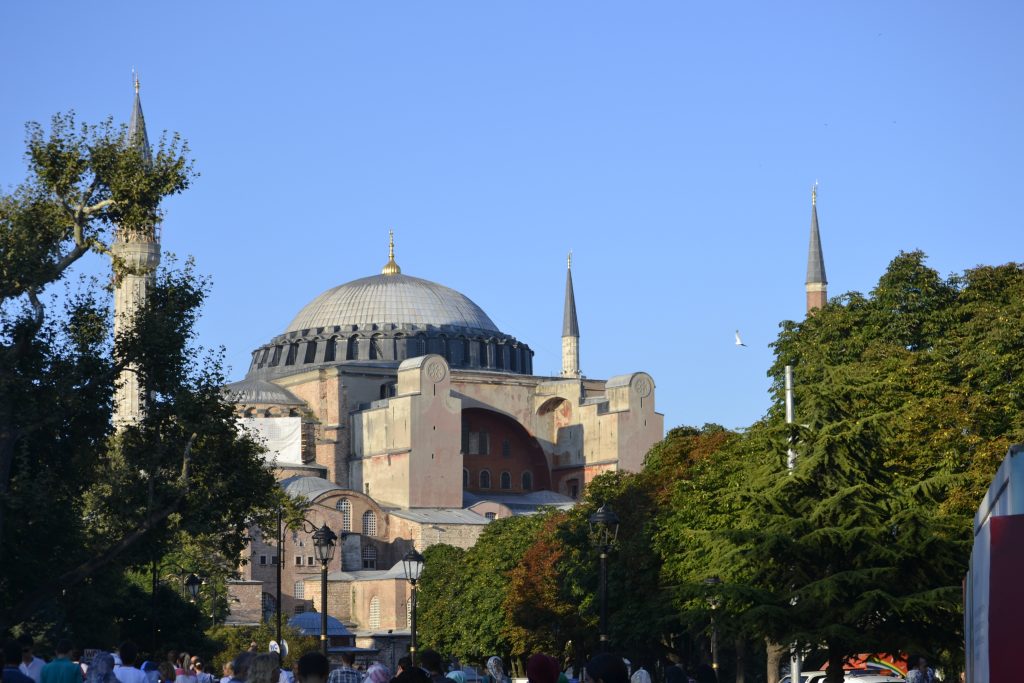

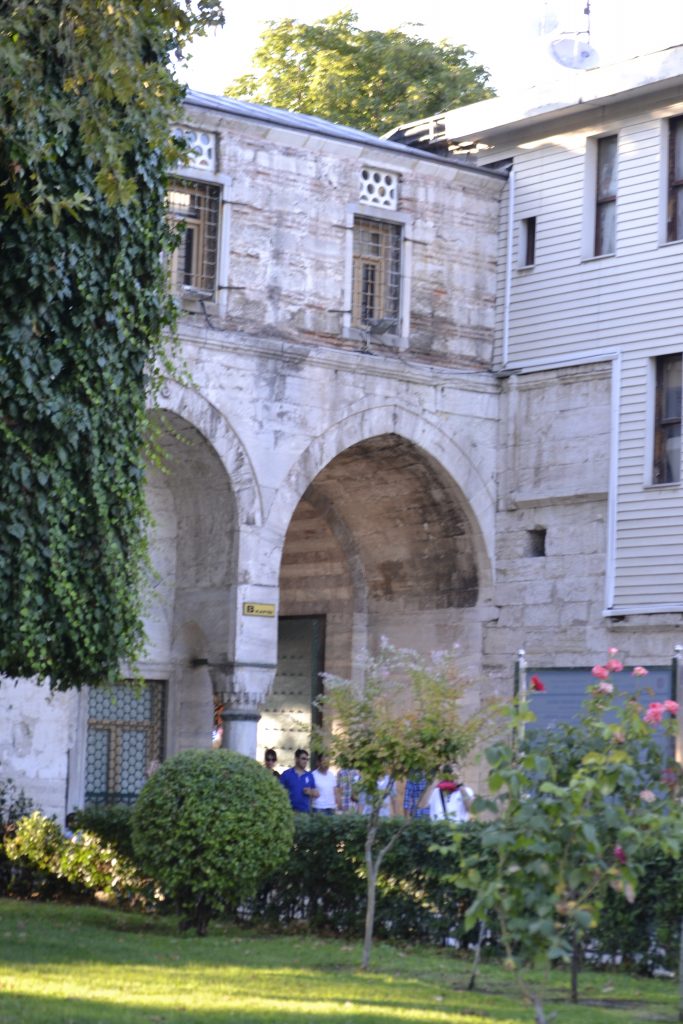
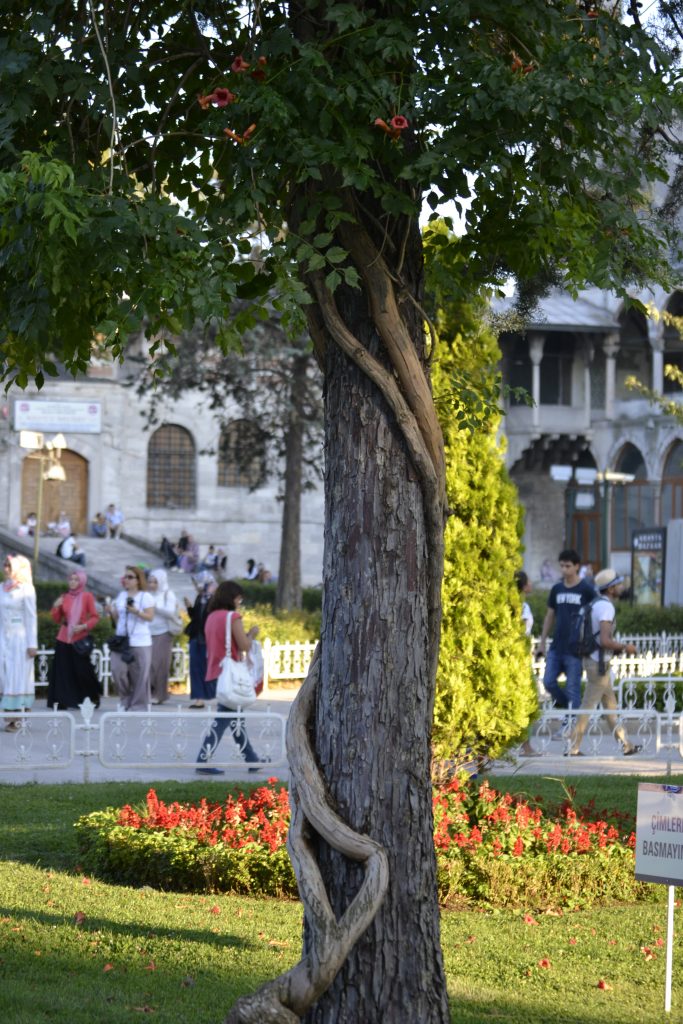
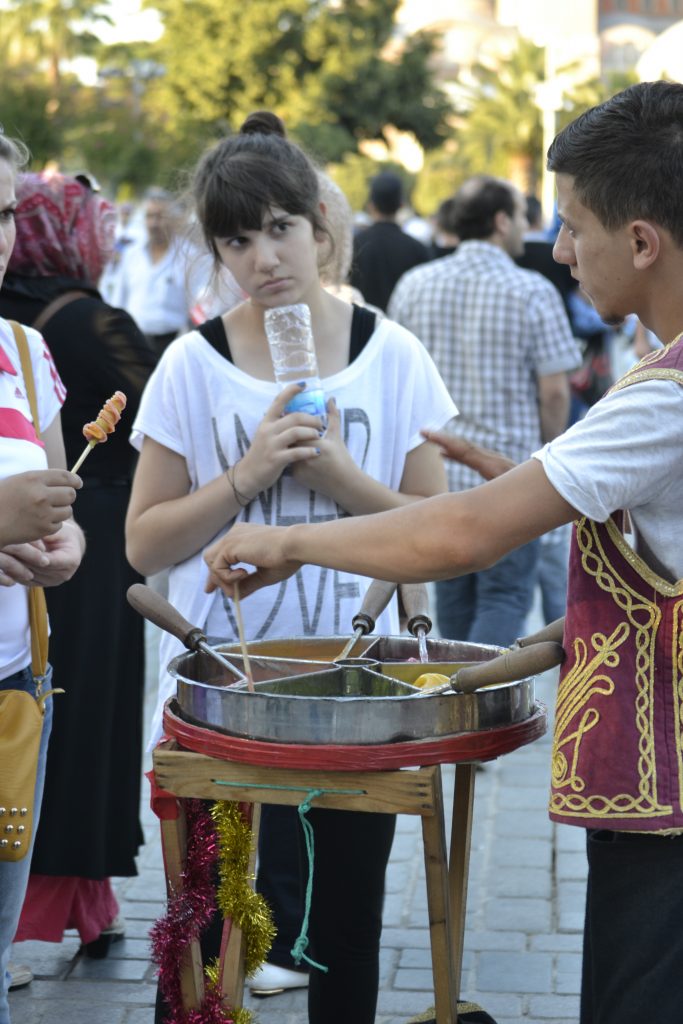
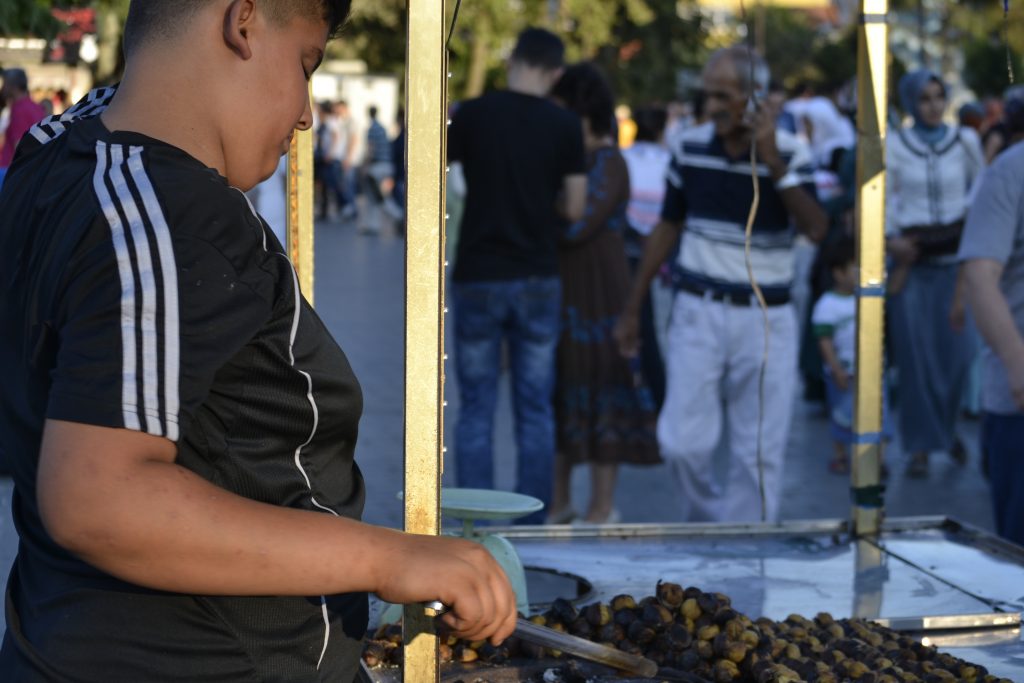
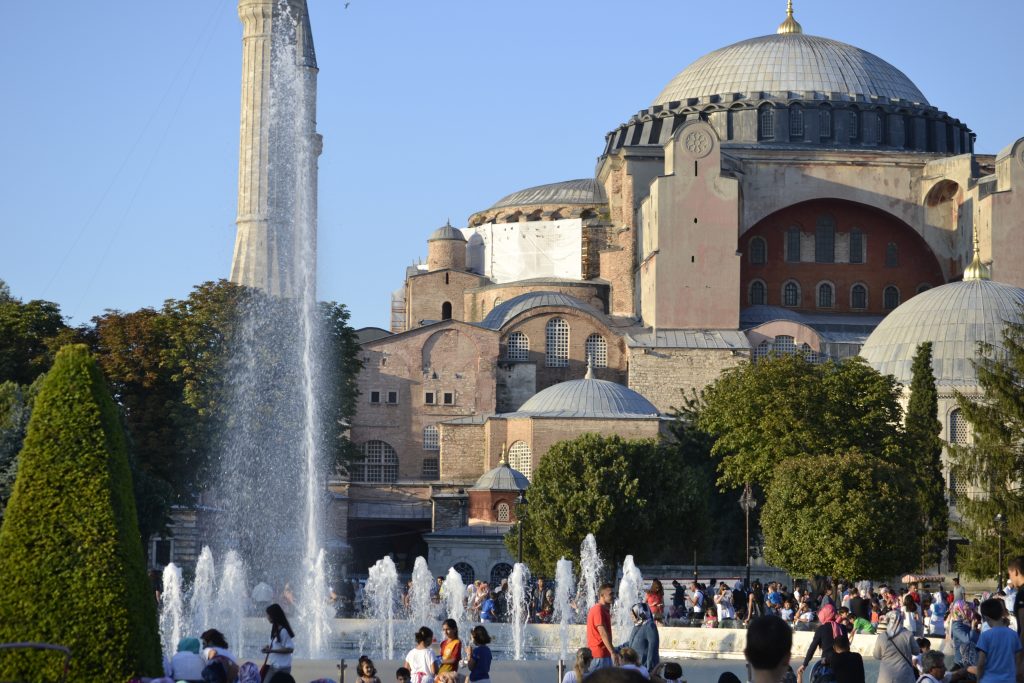
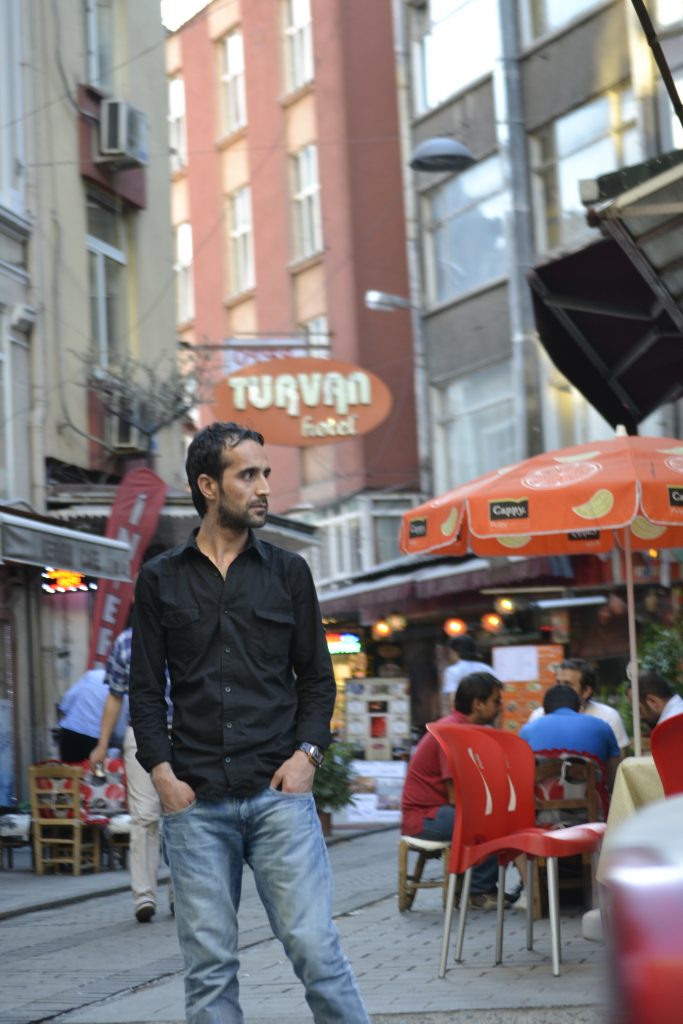
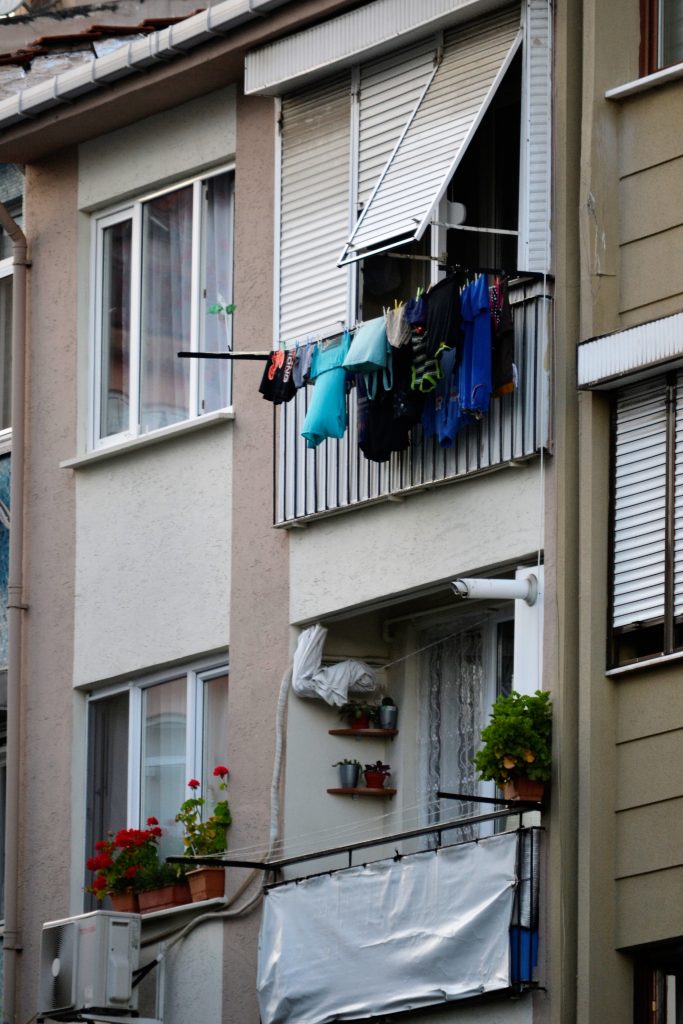
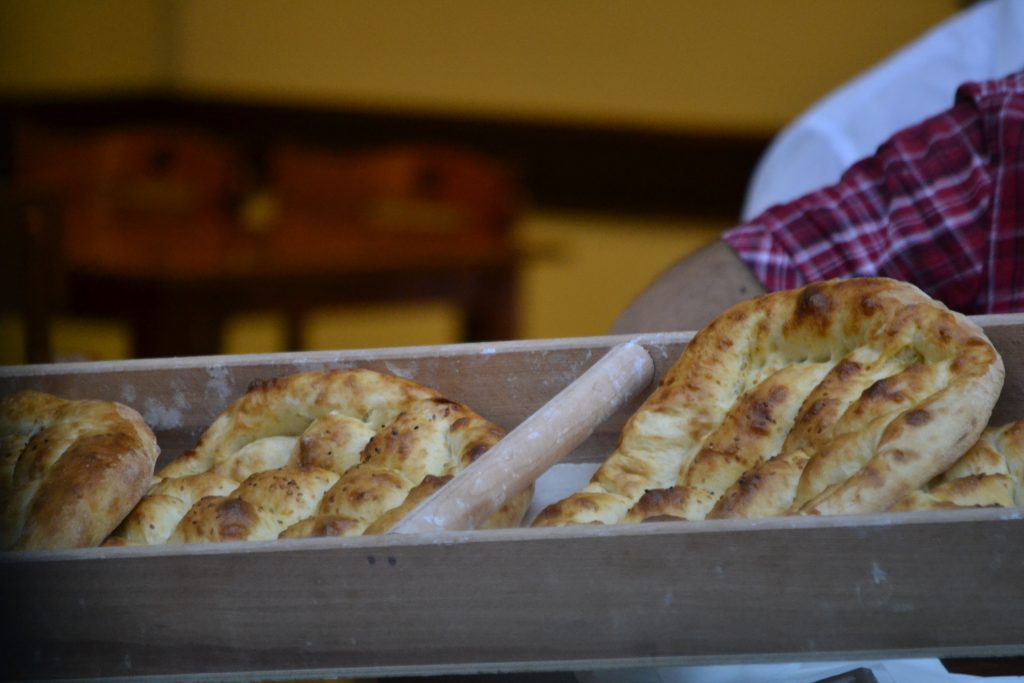
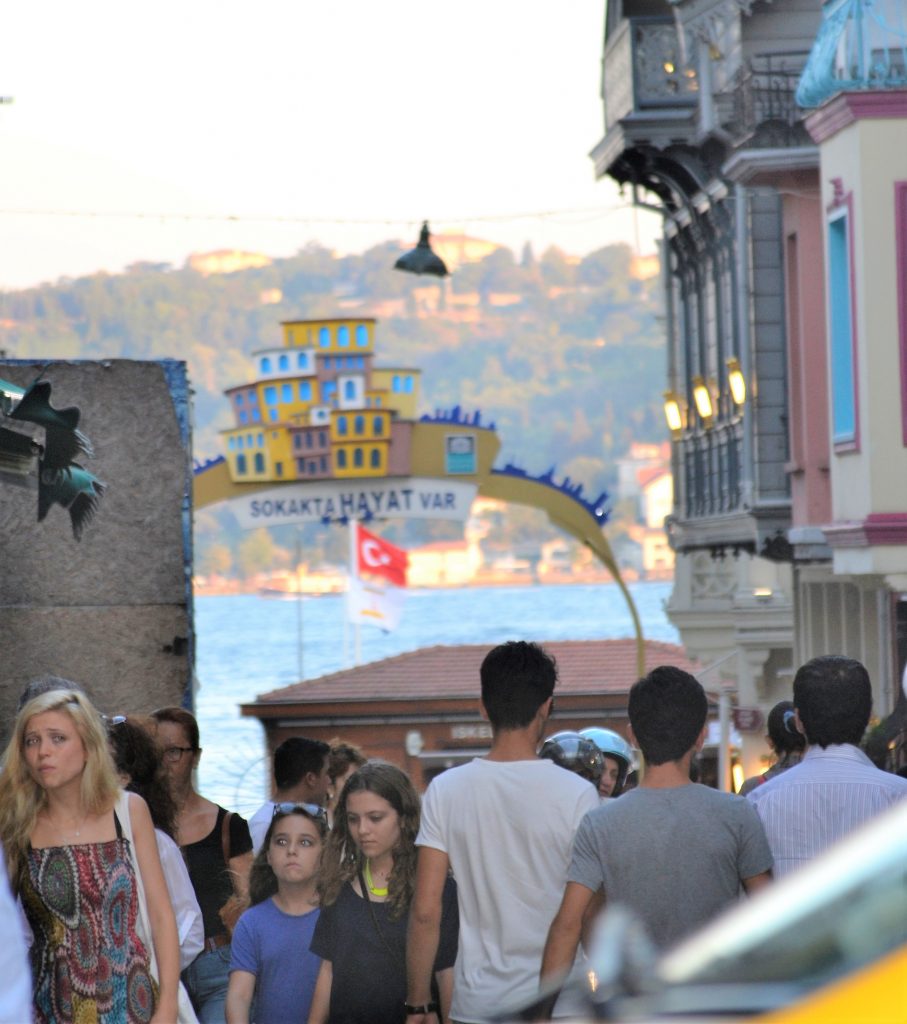
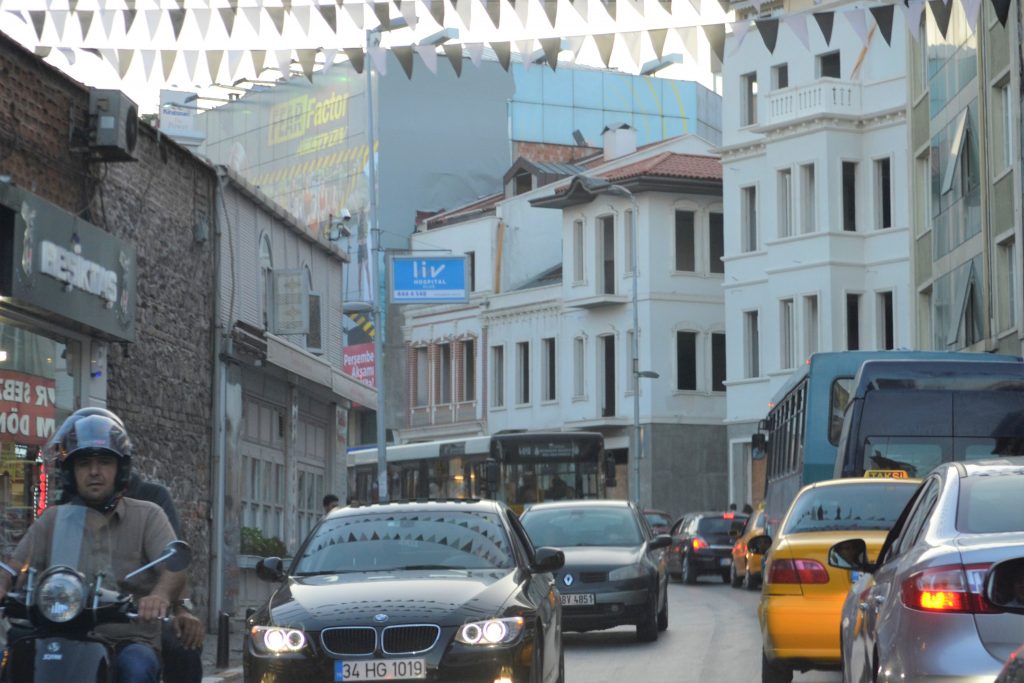 More of Downtown Istanbul
More of Downtown Istanbul